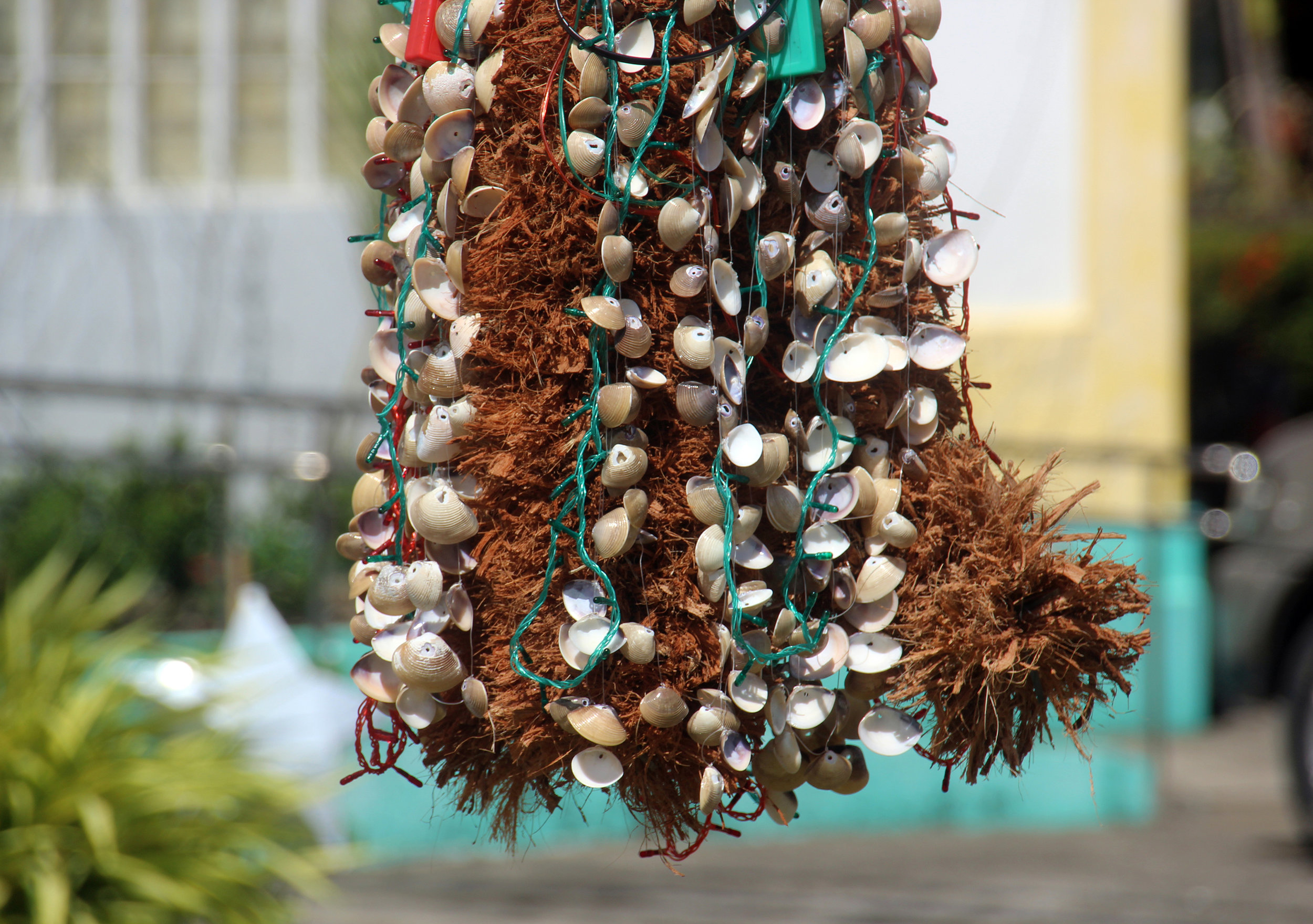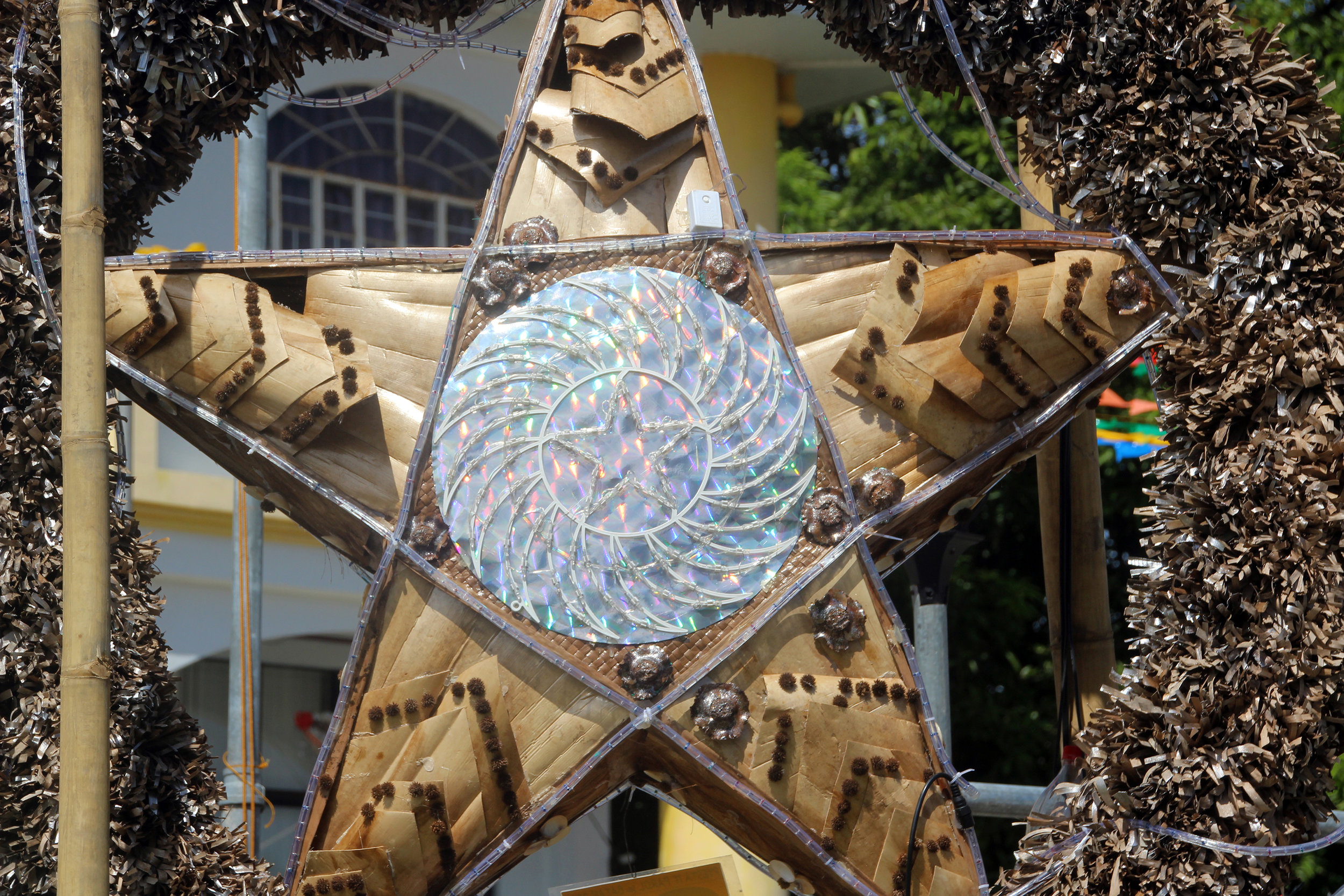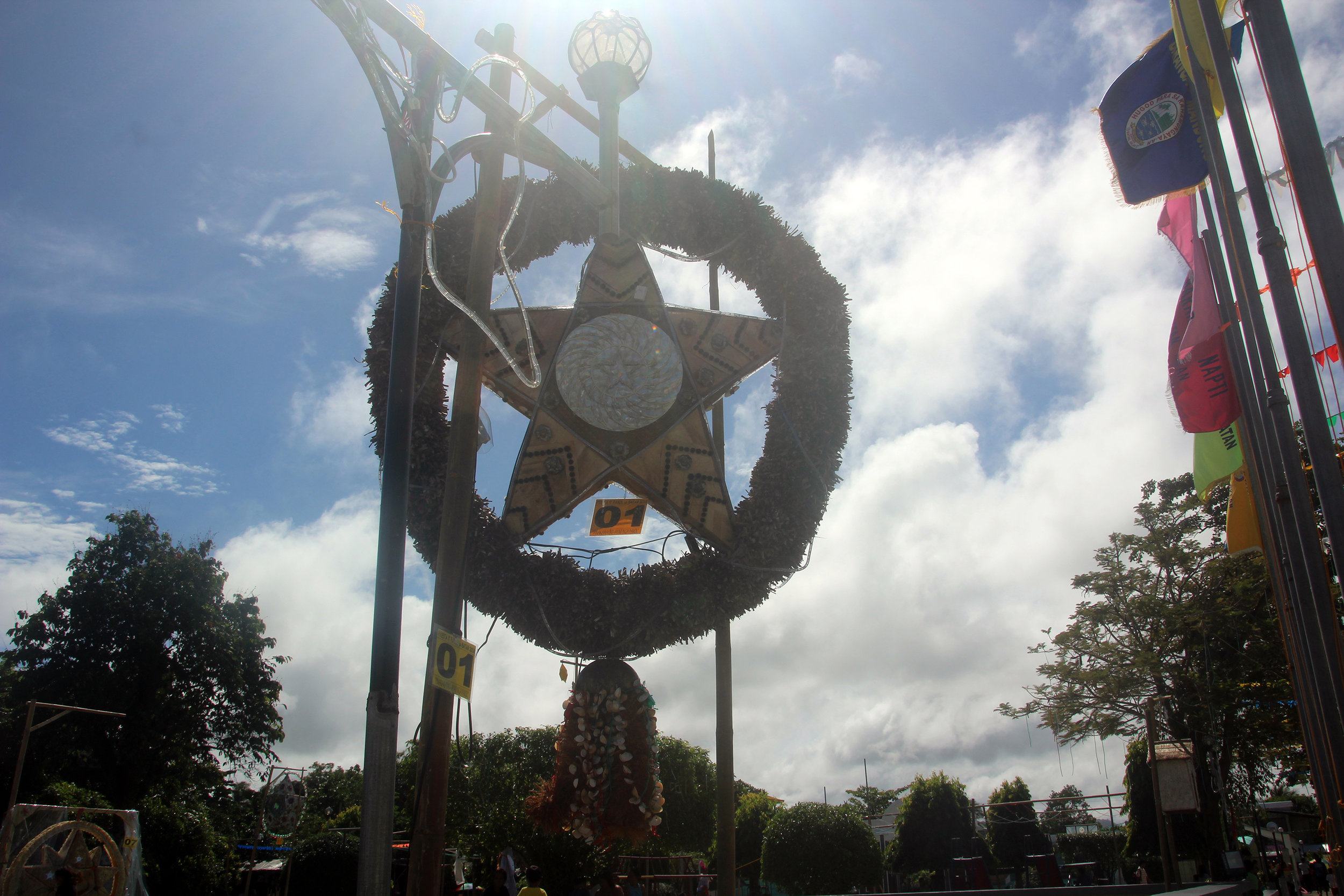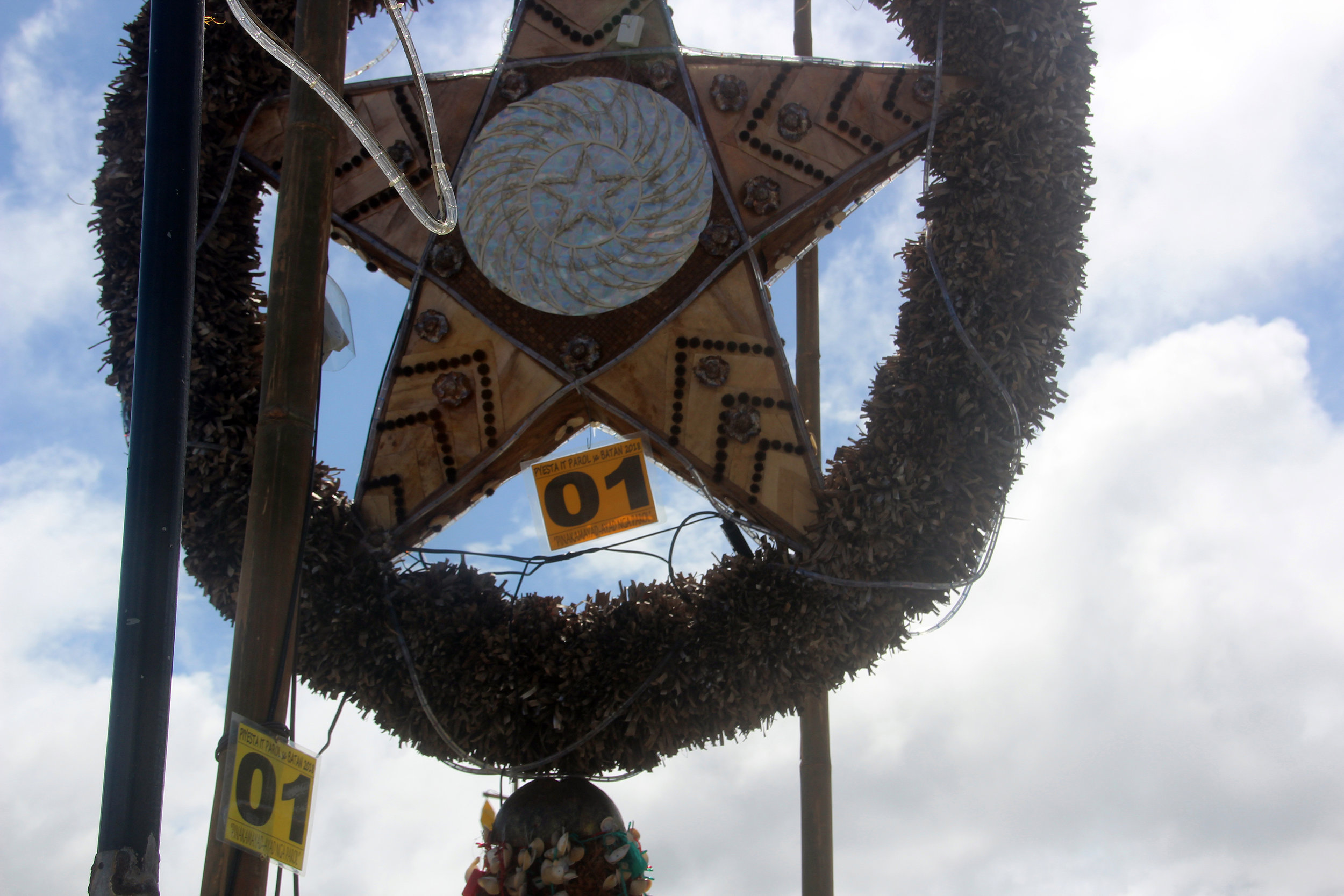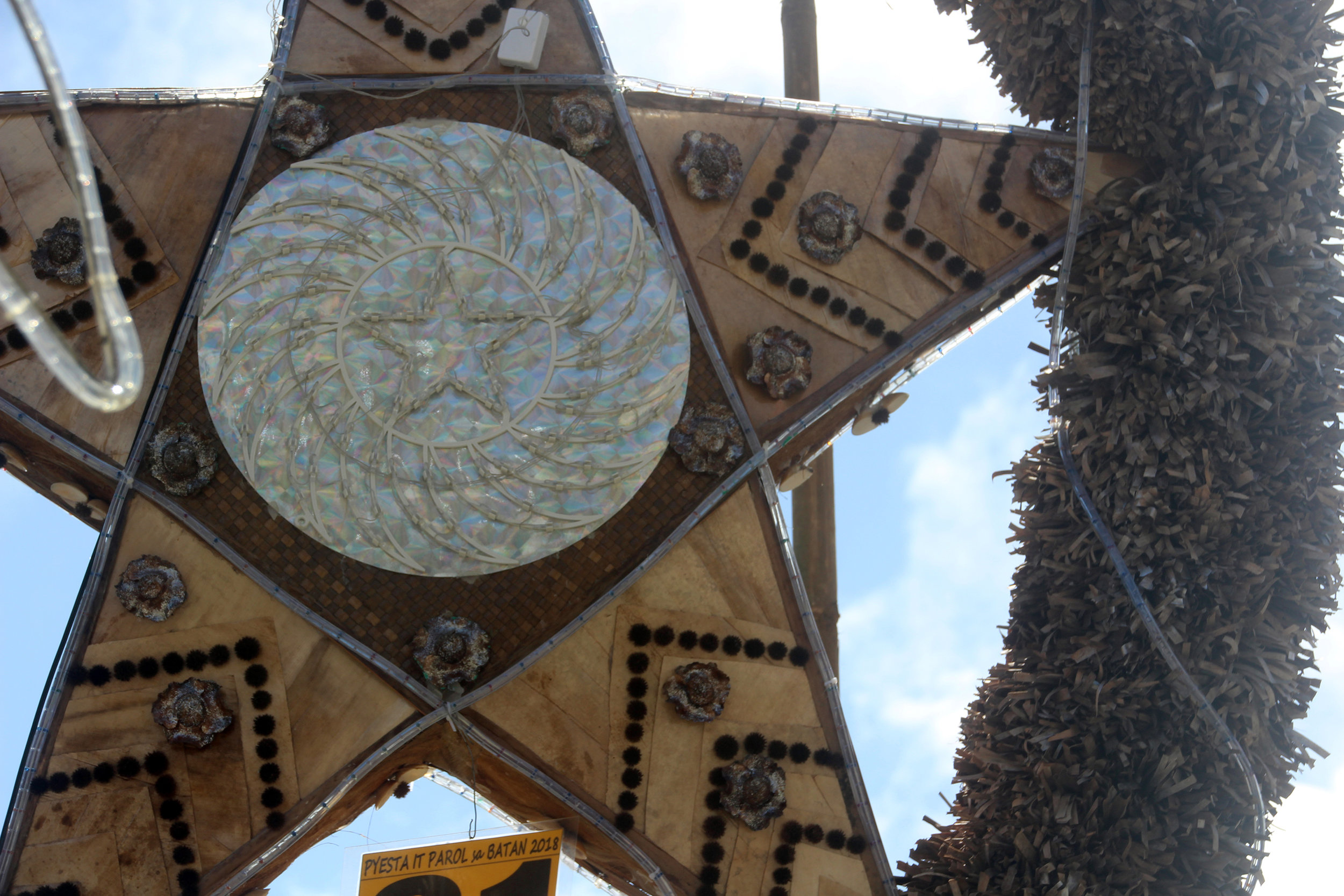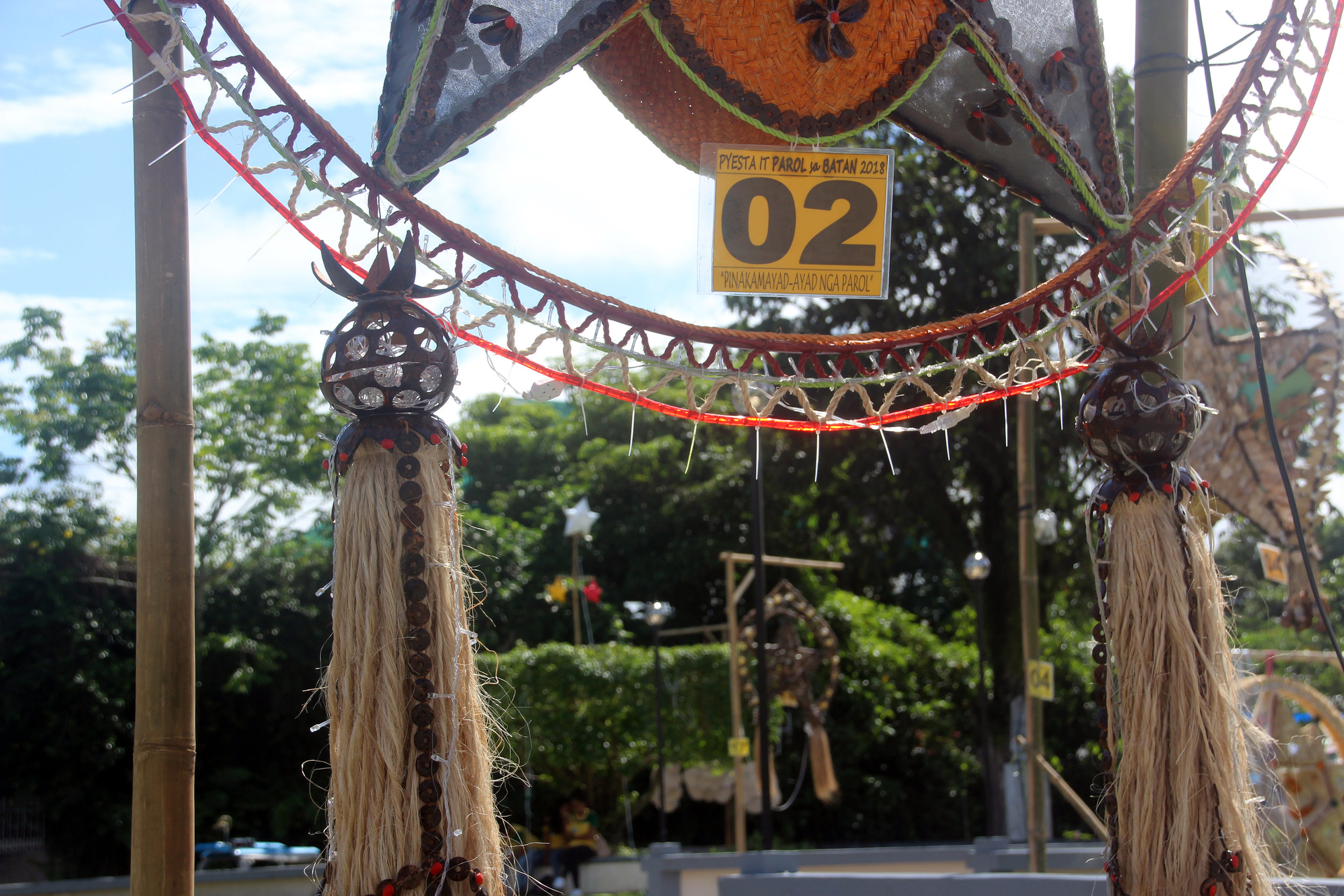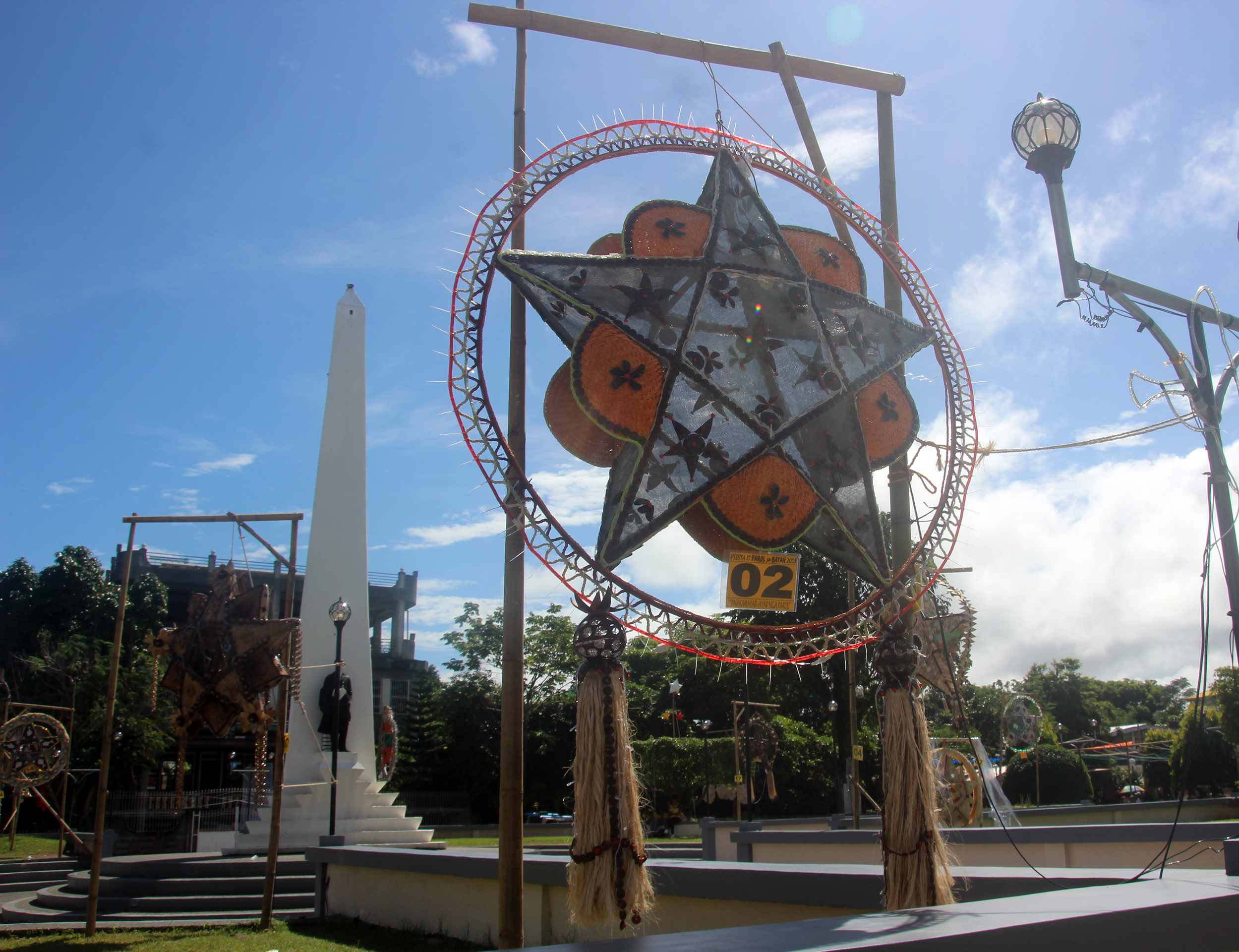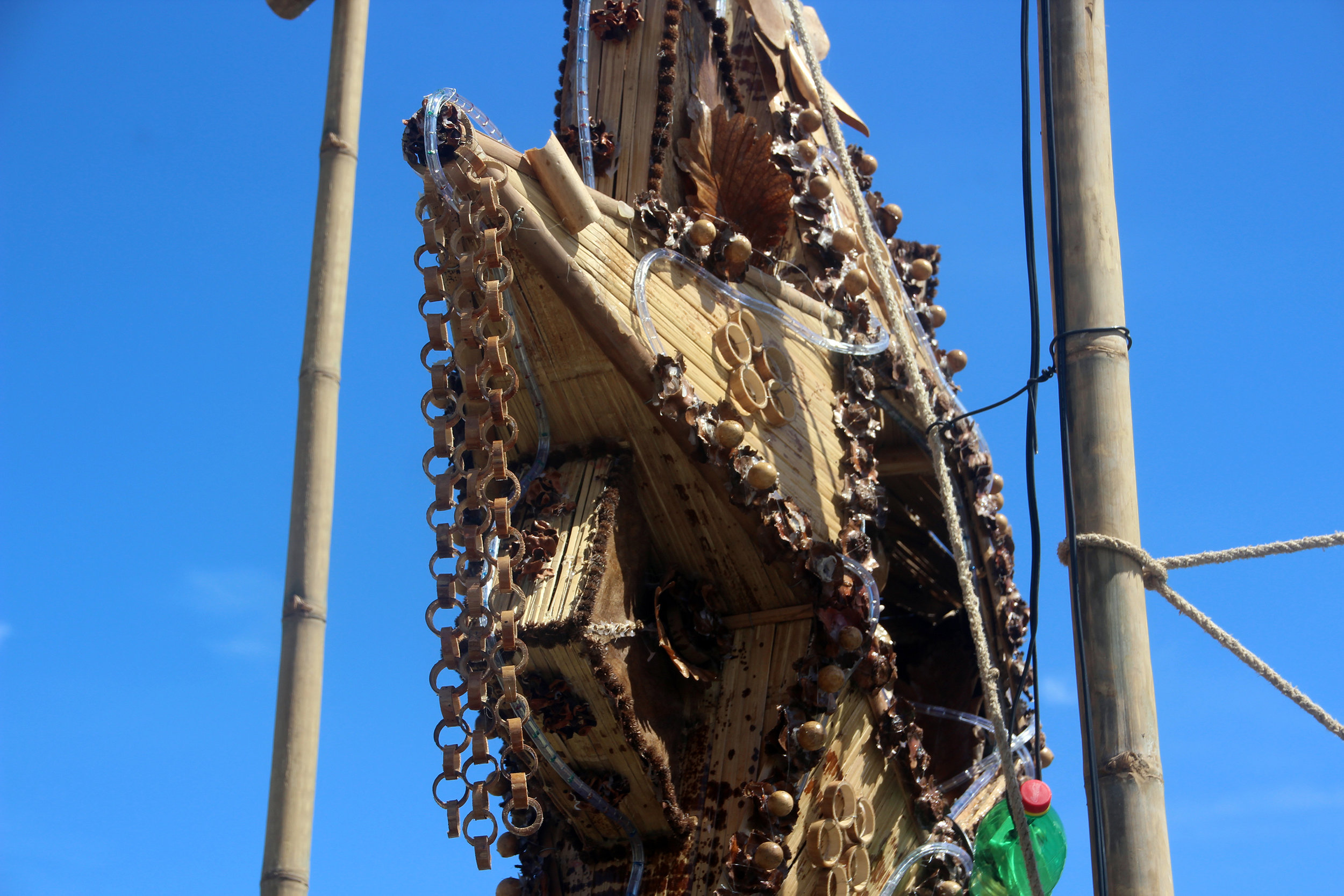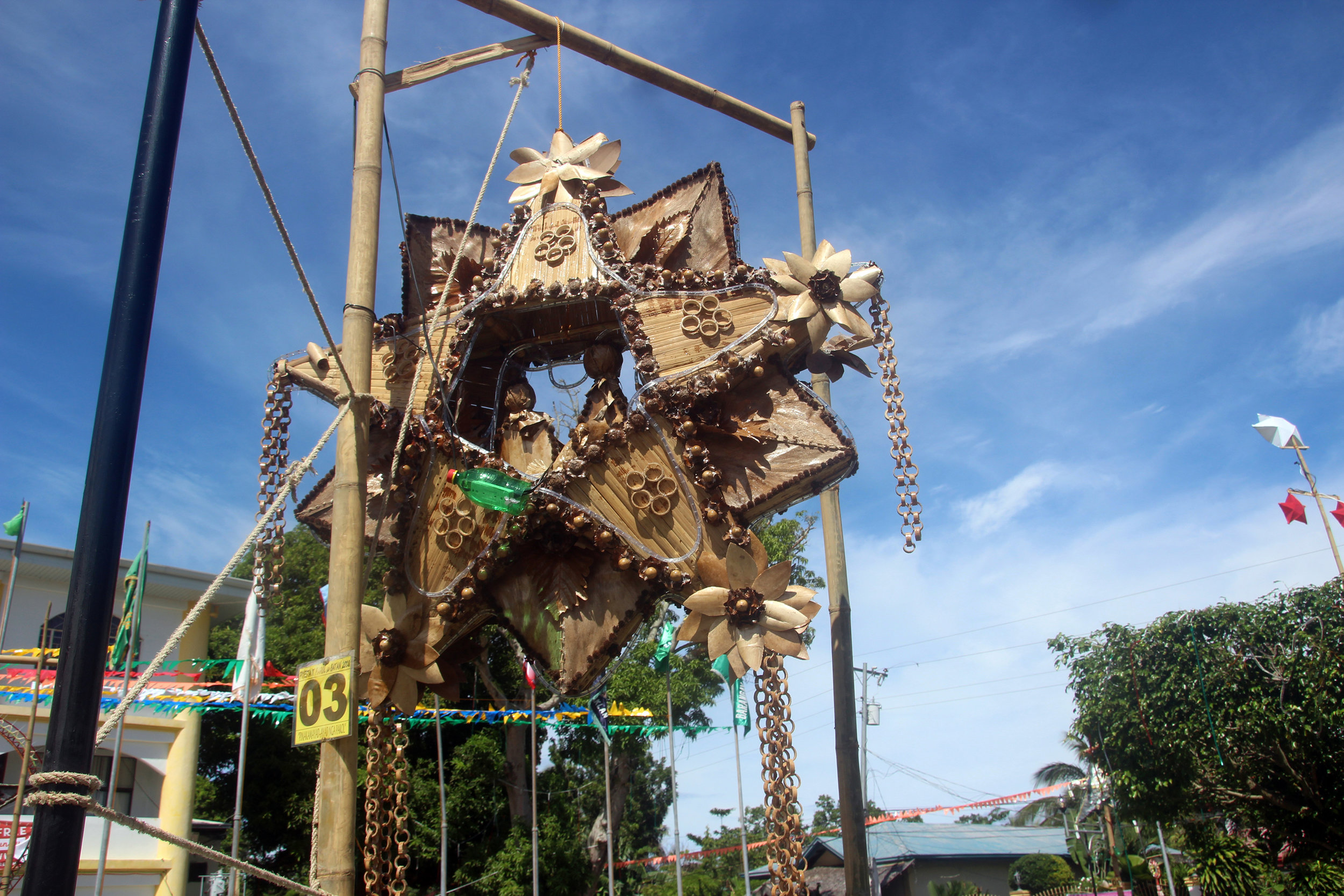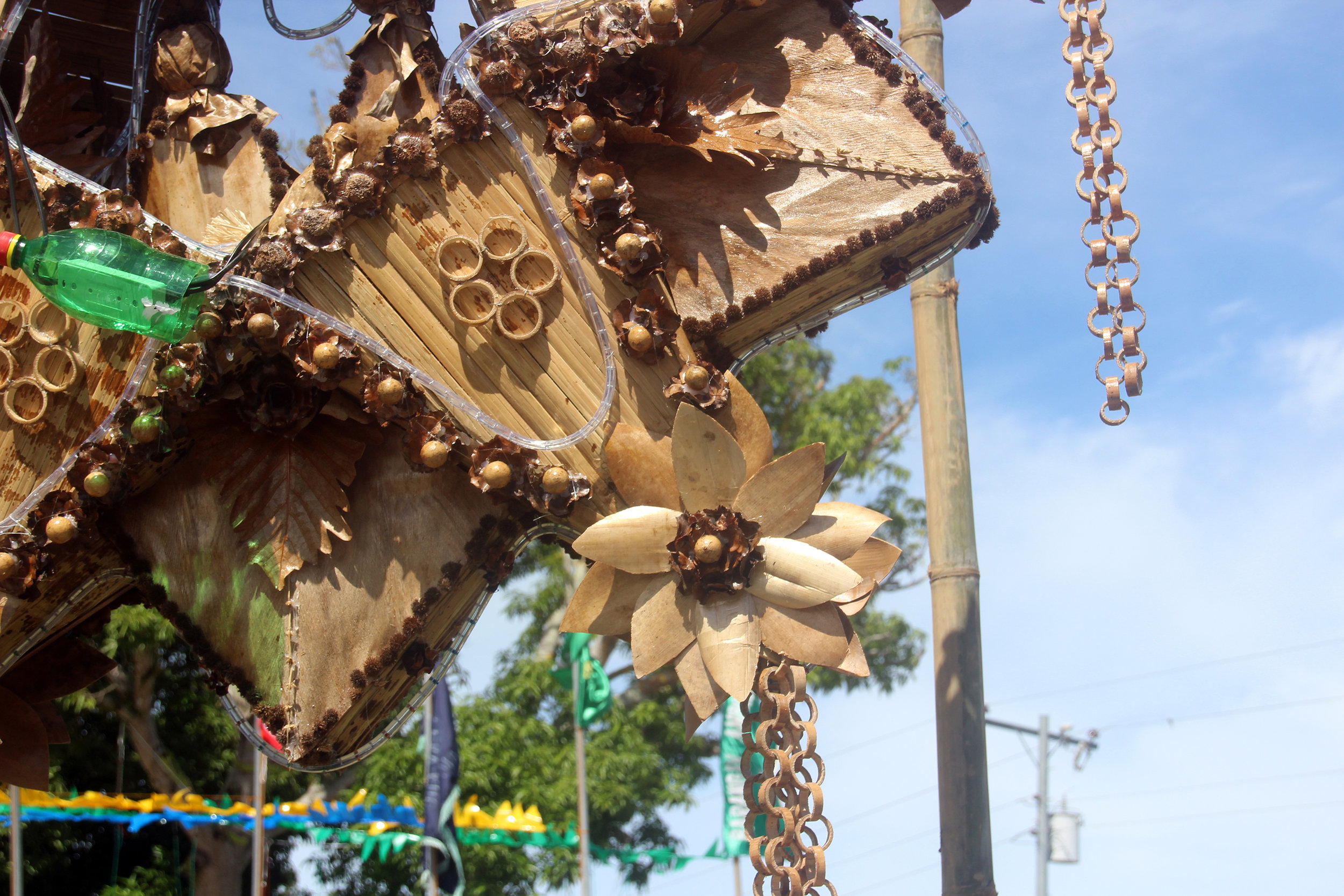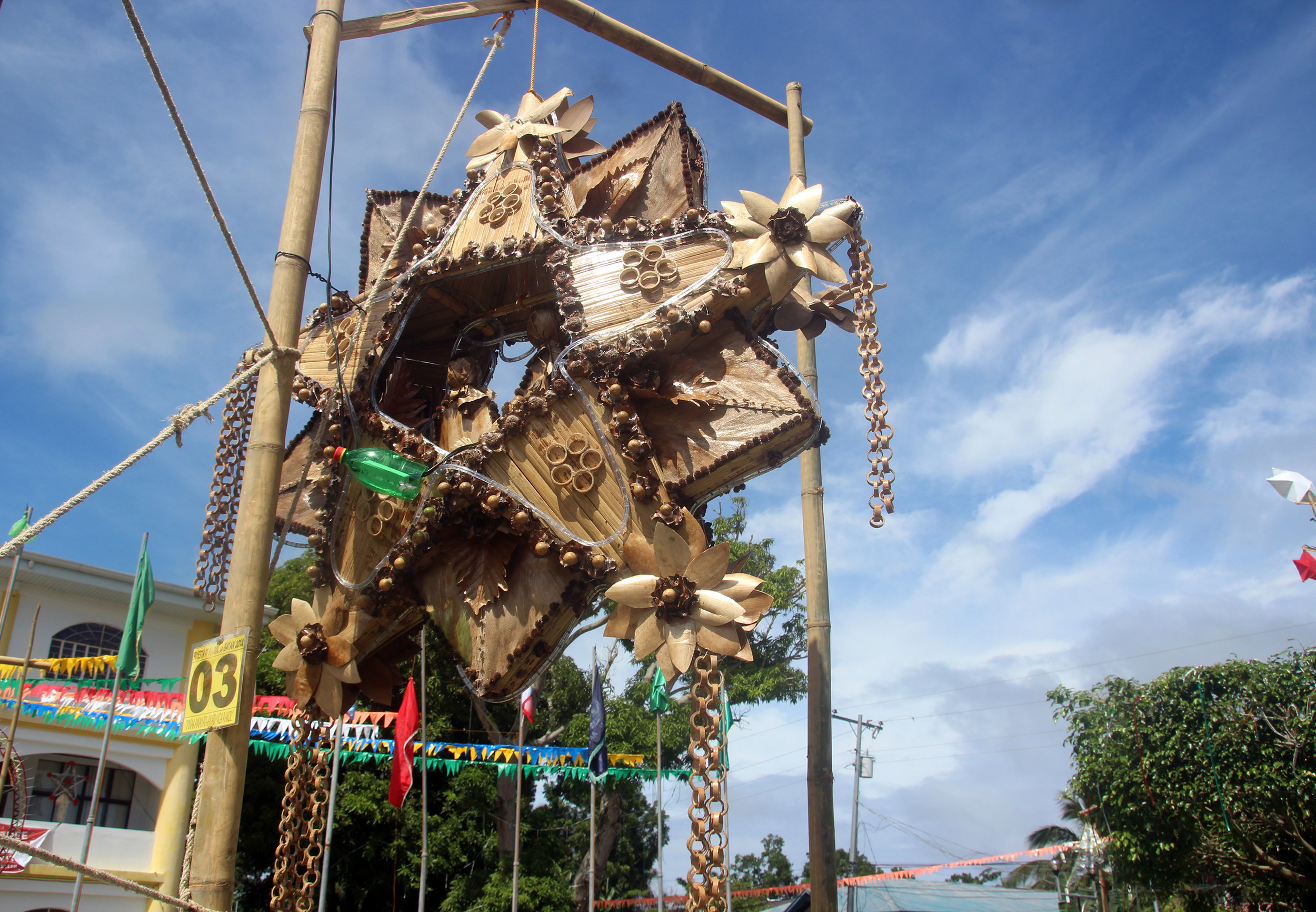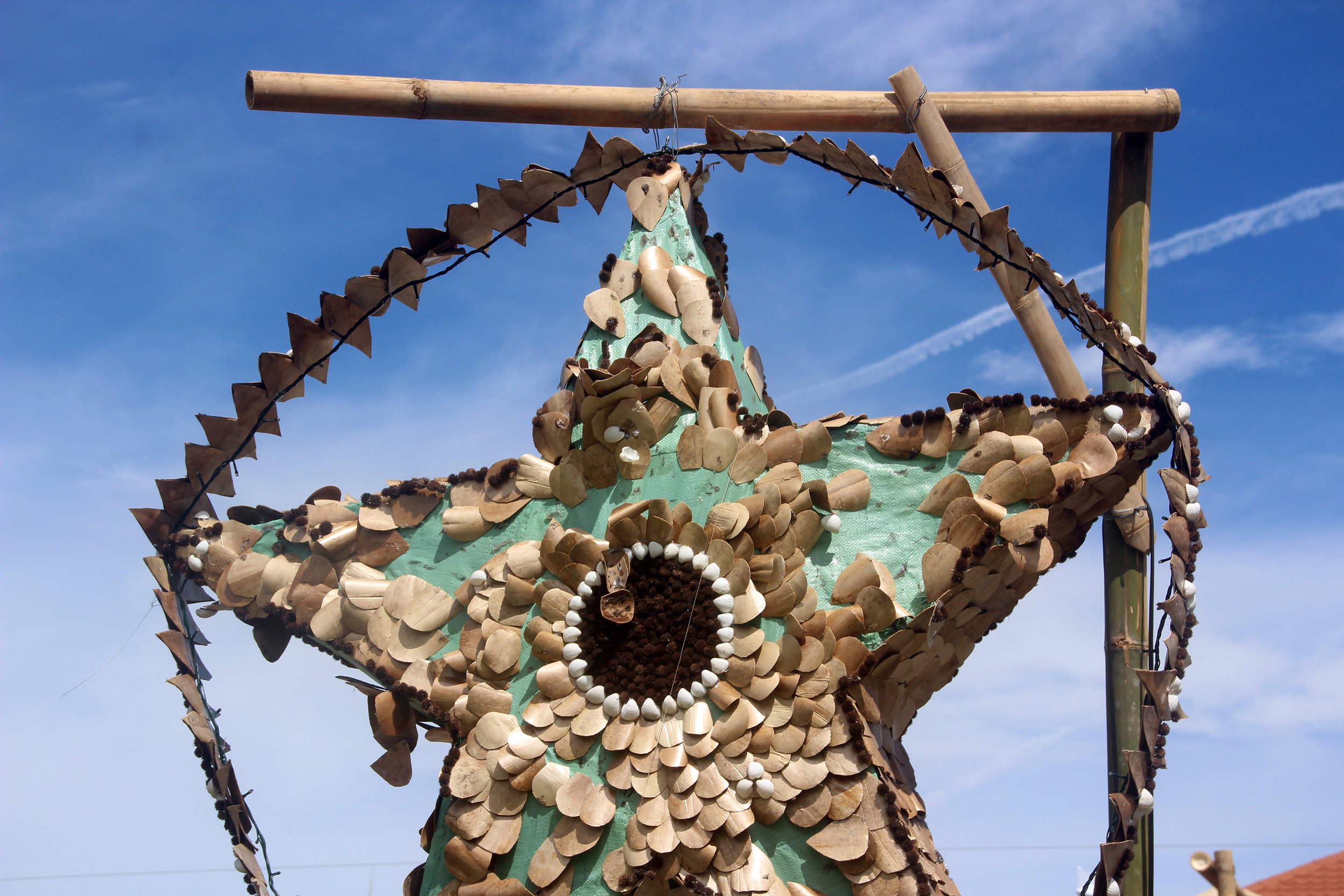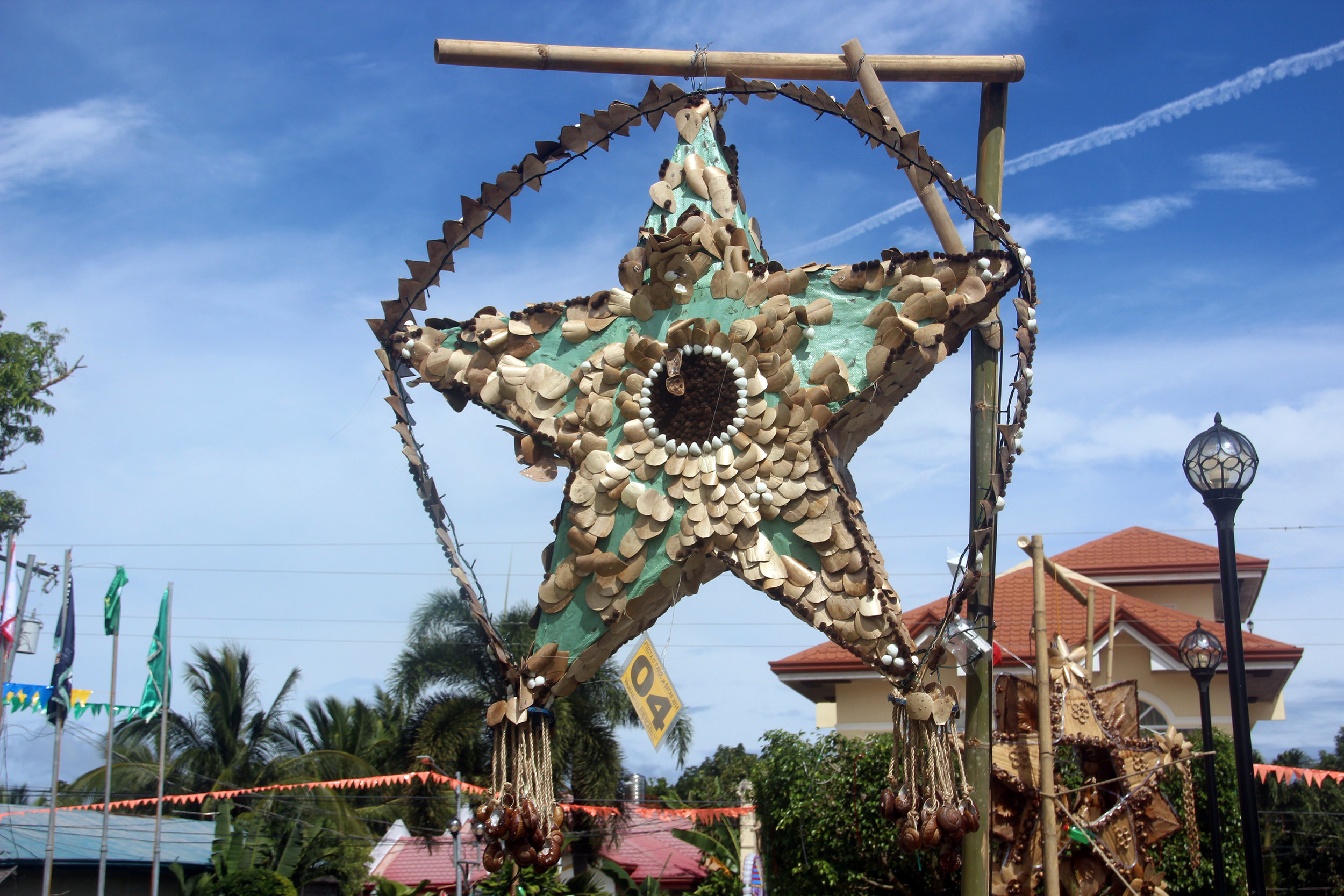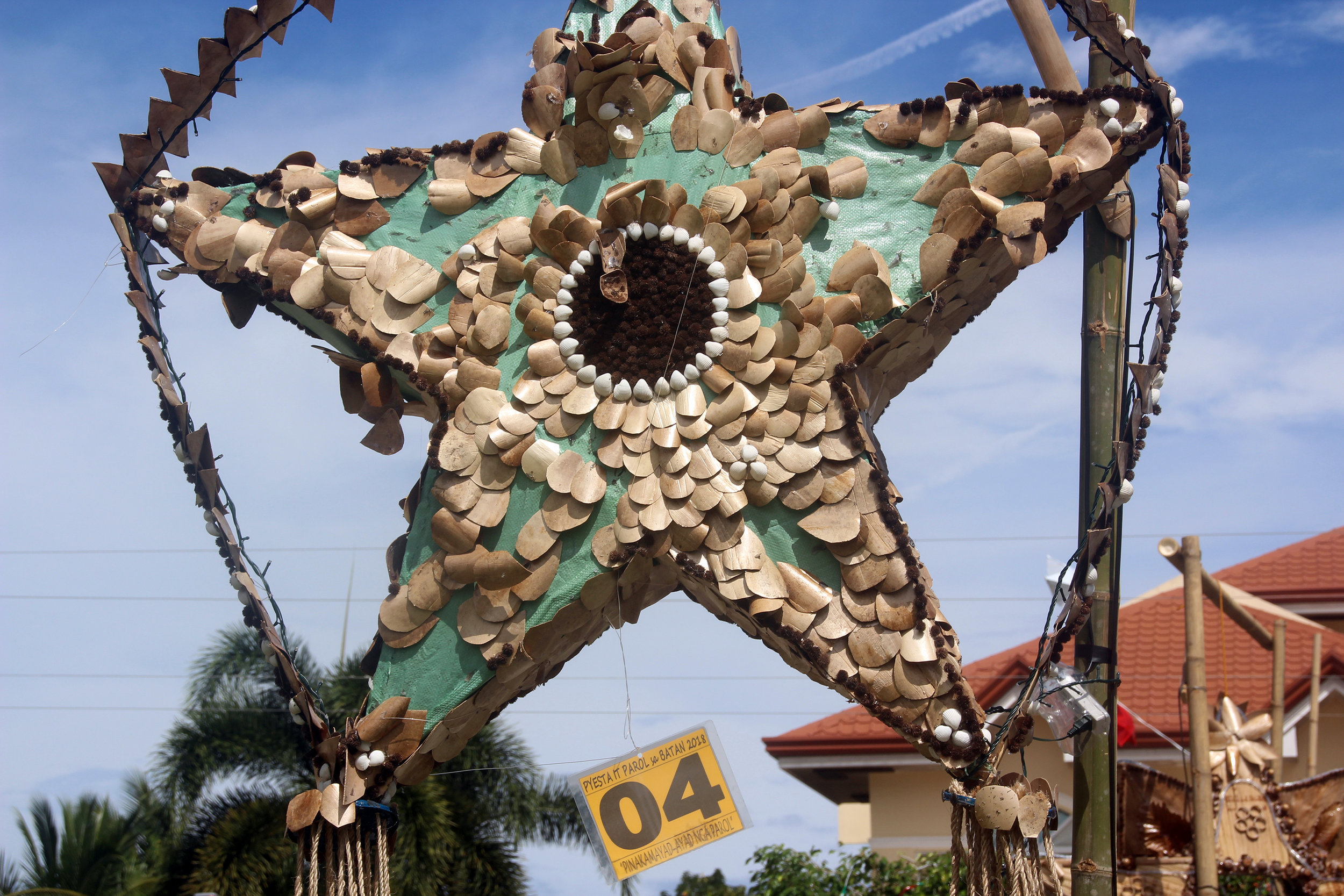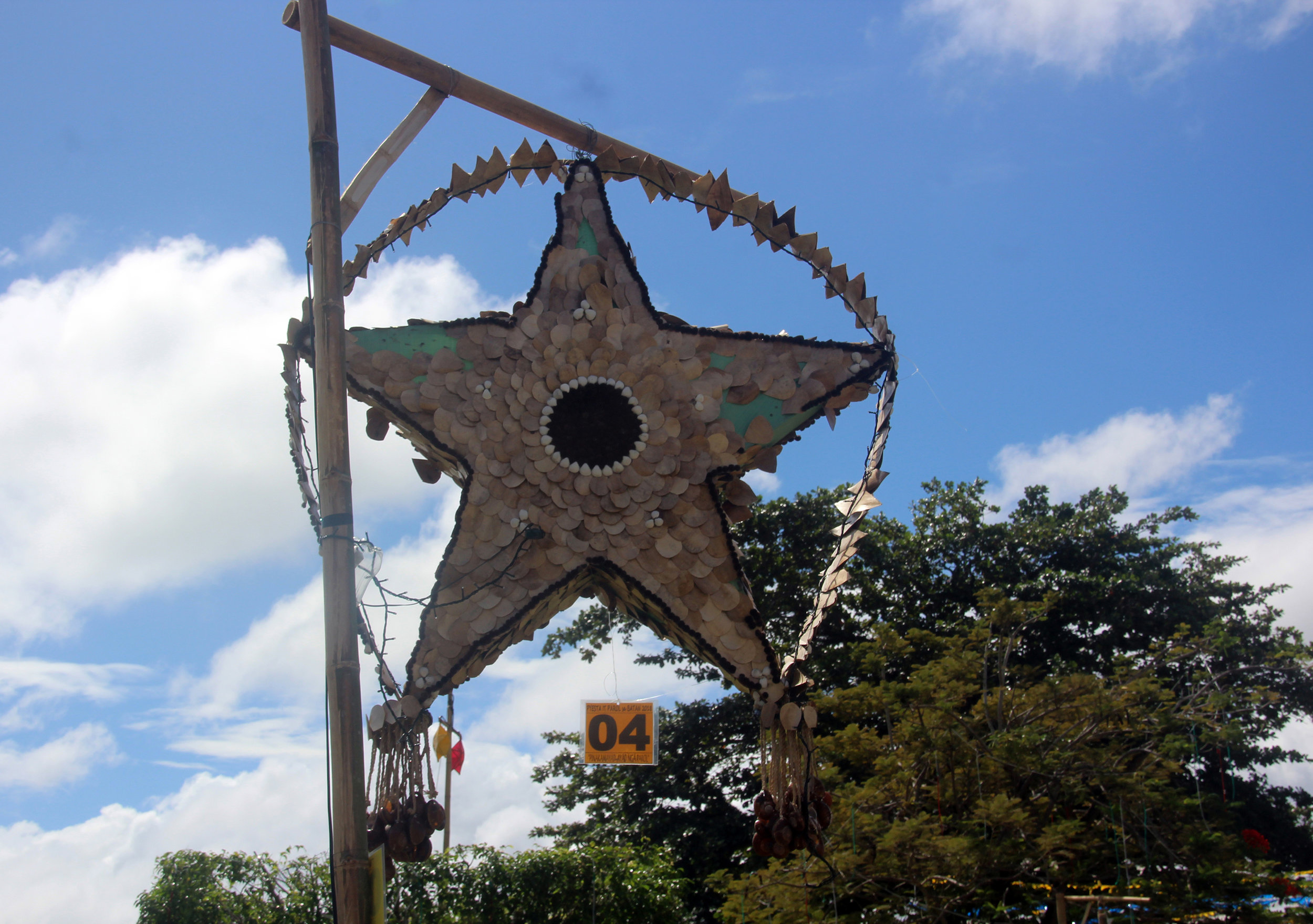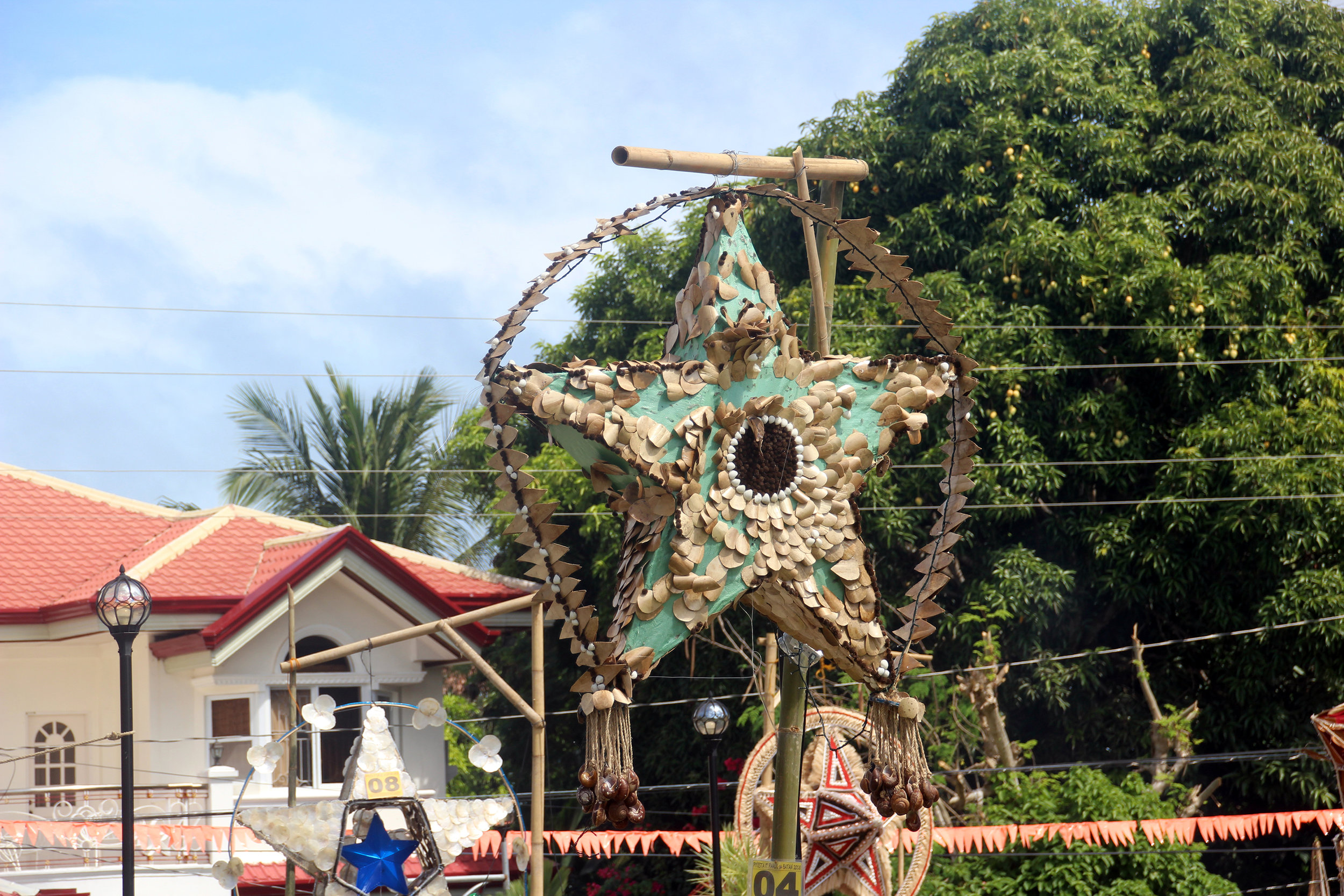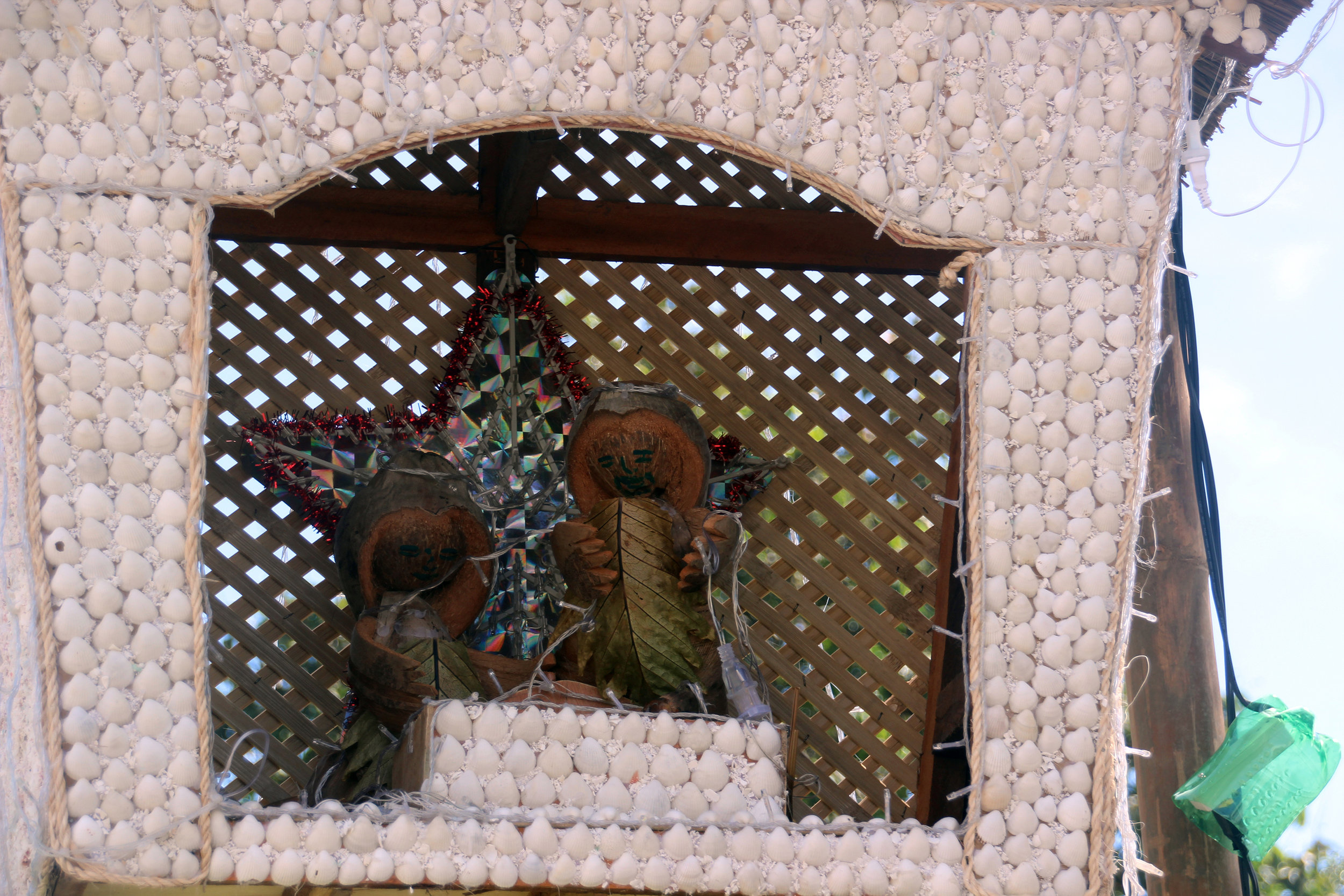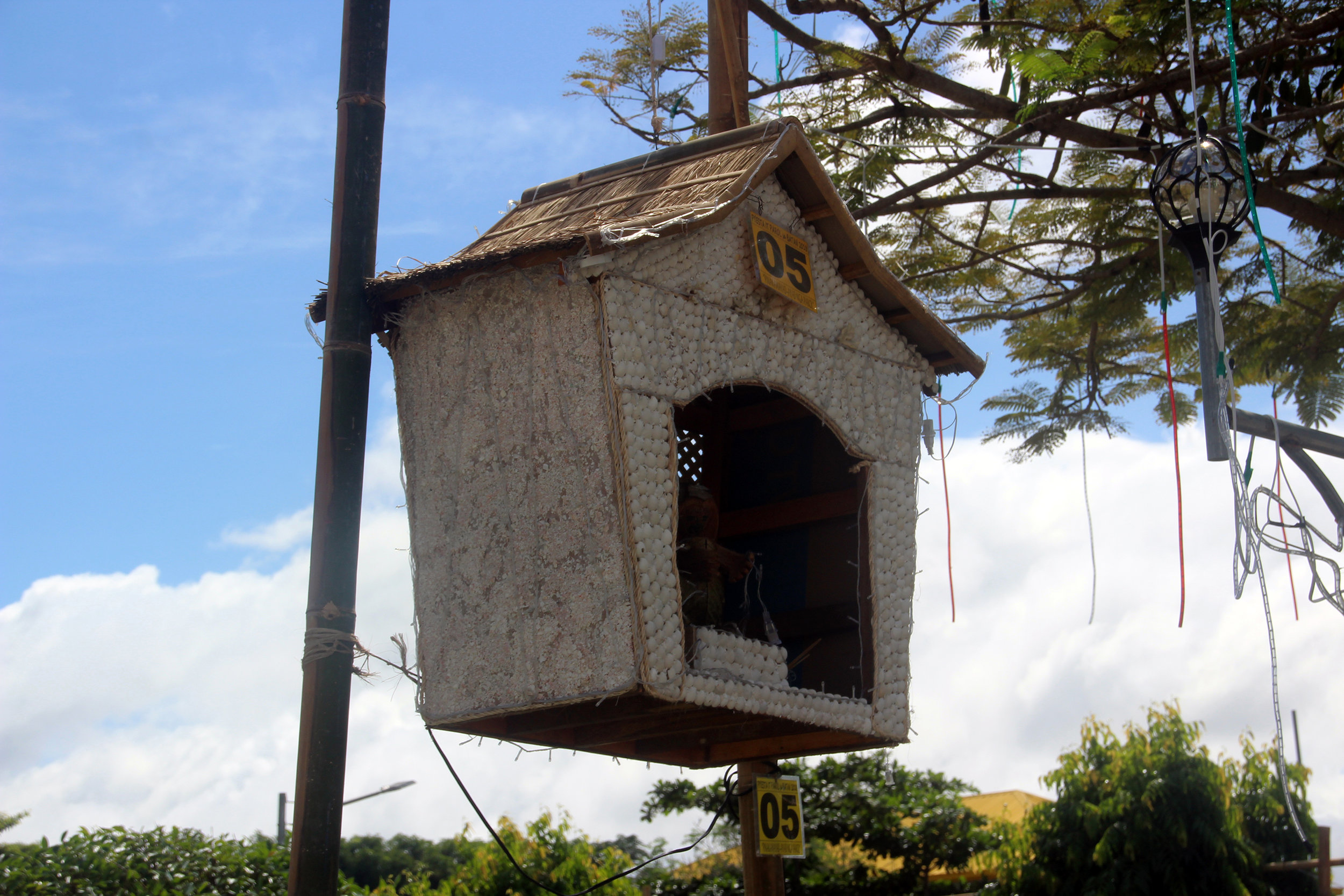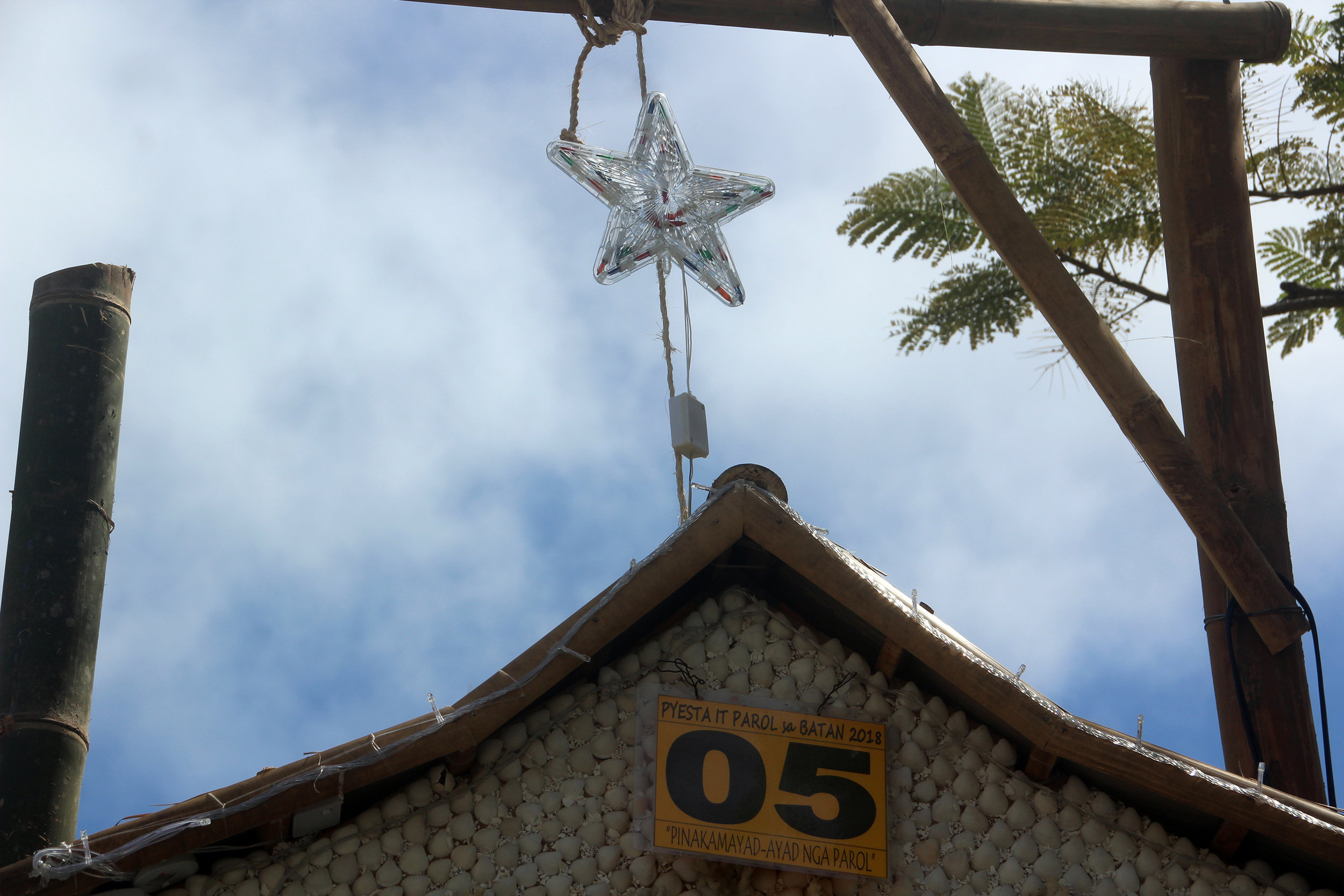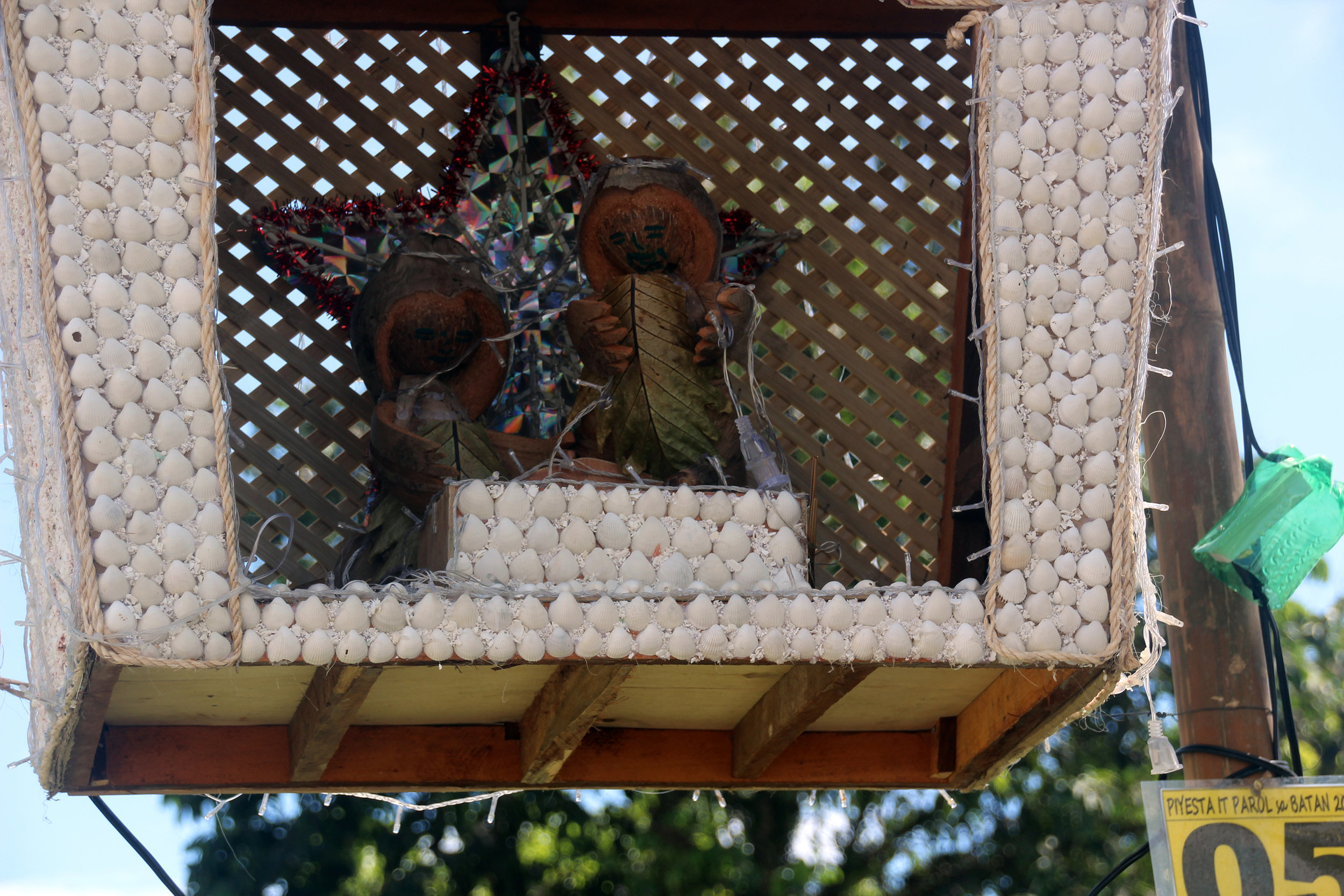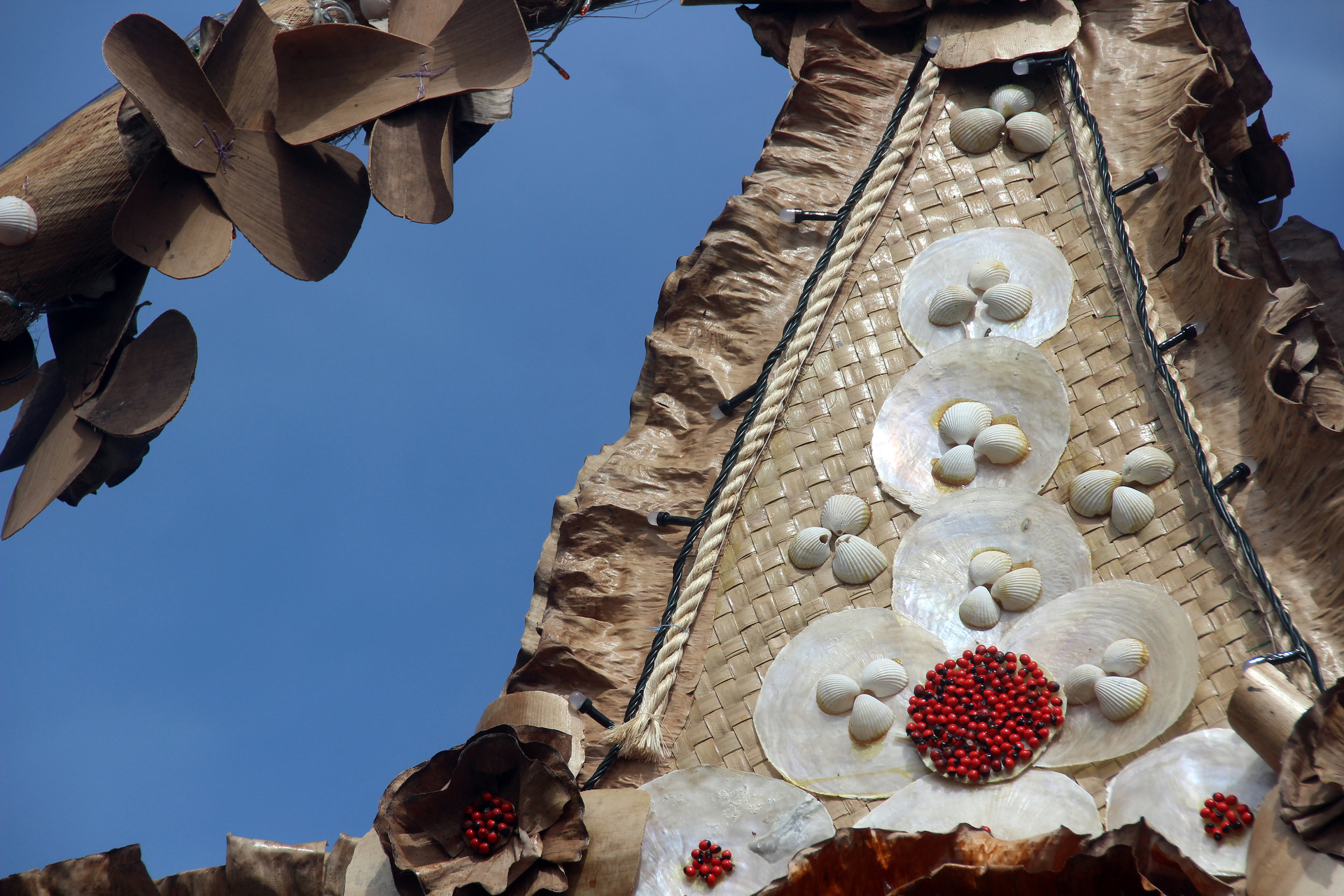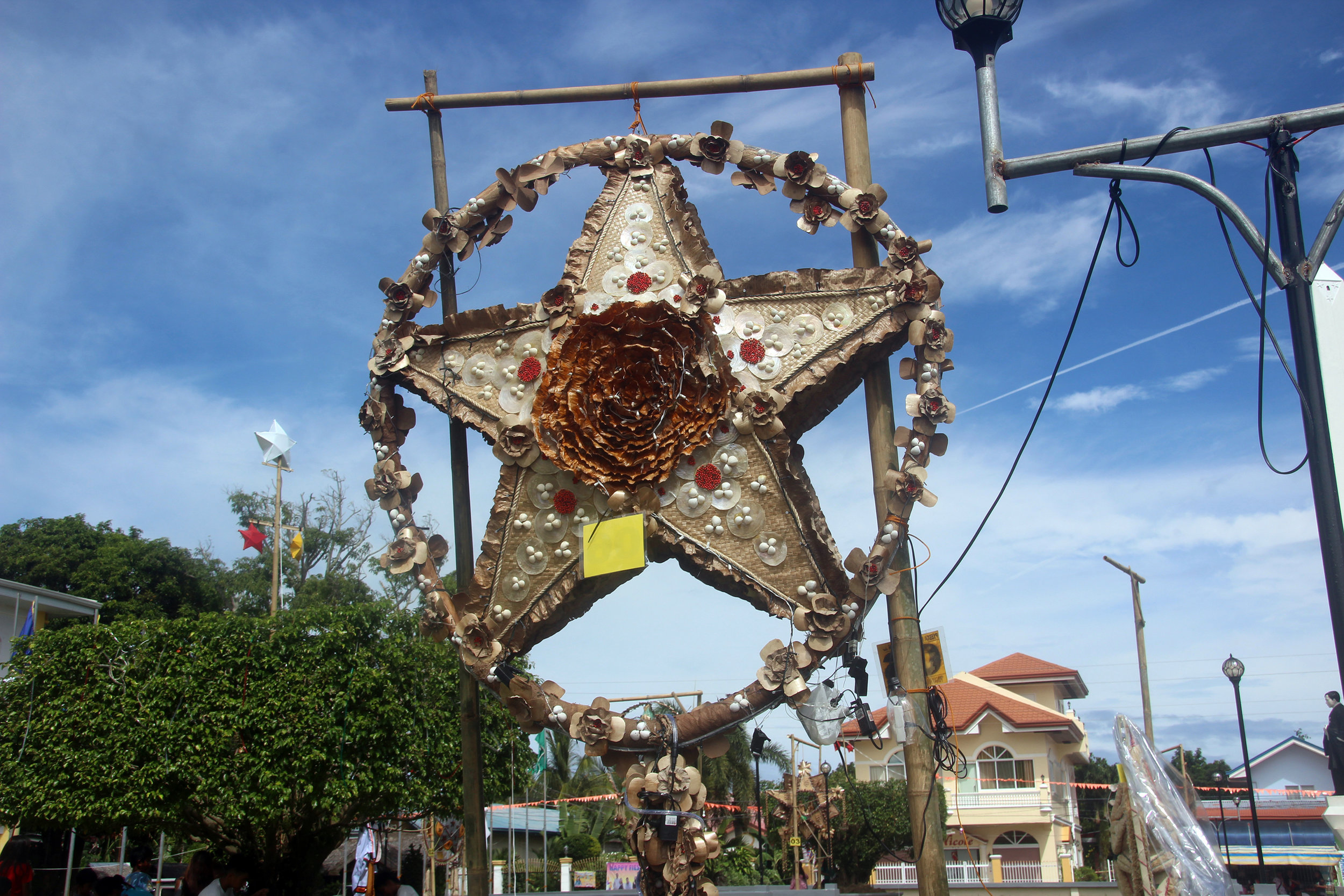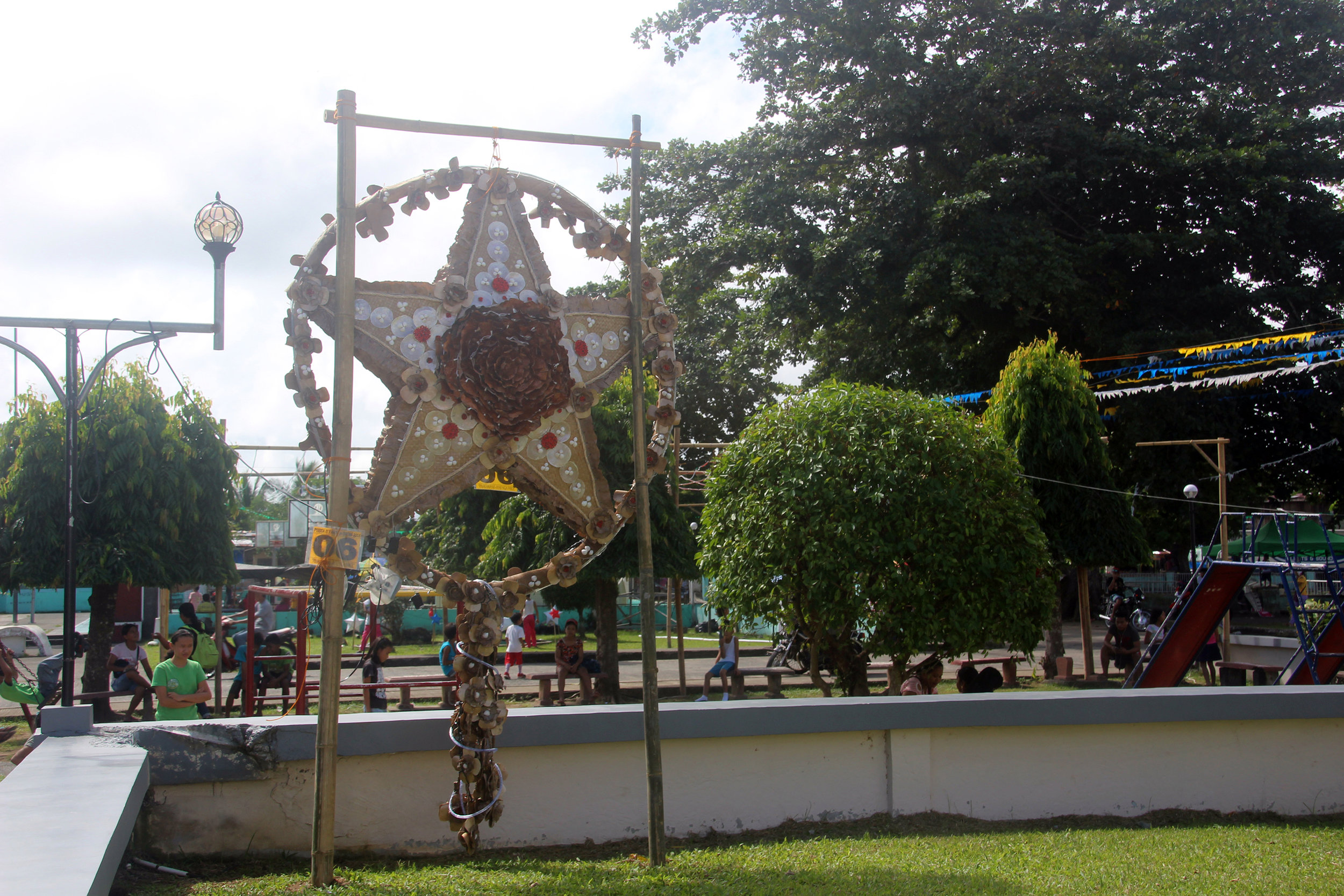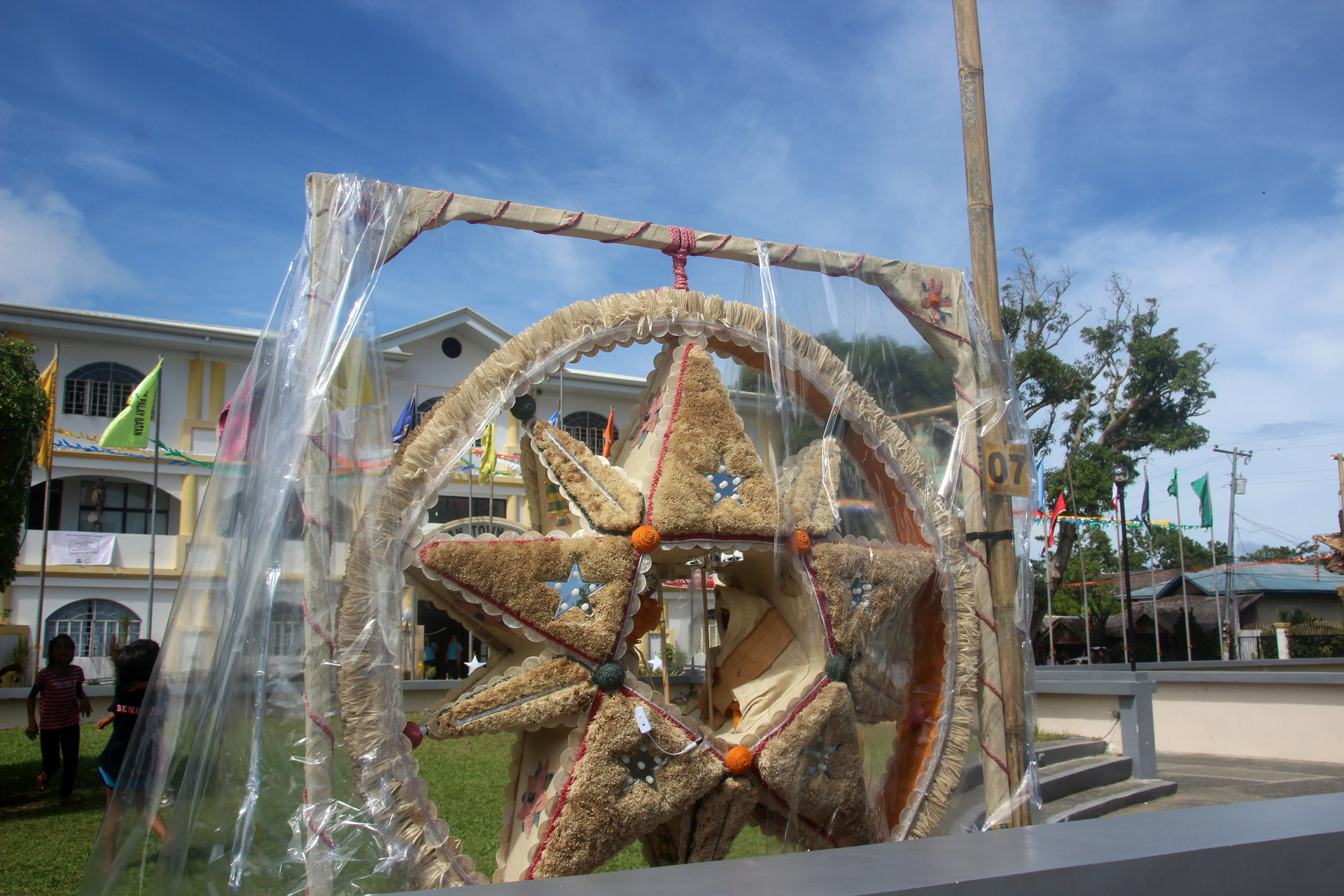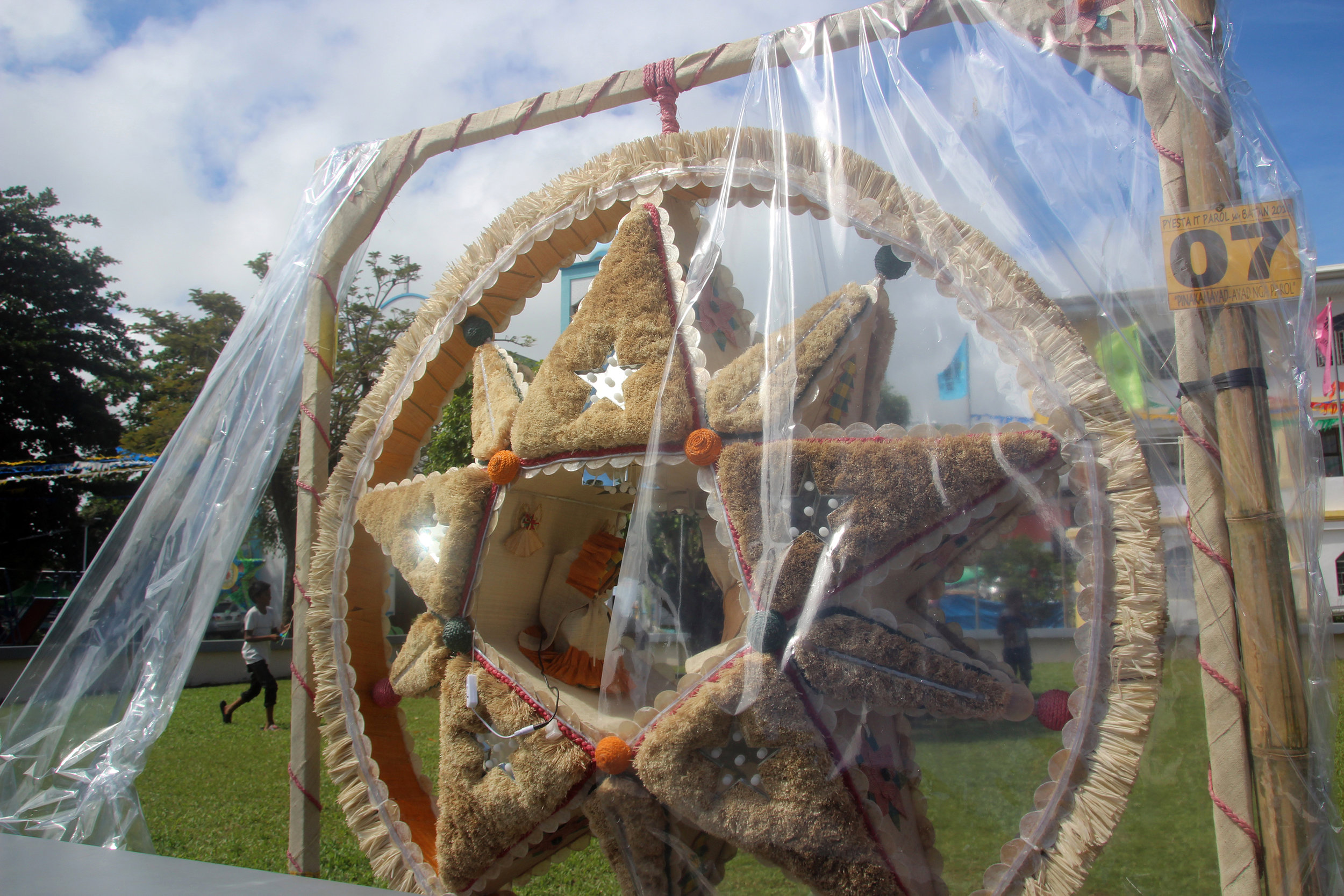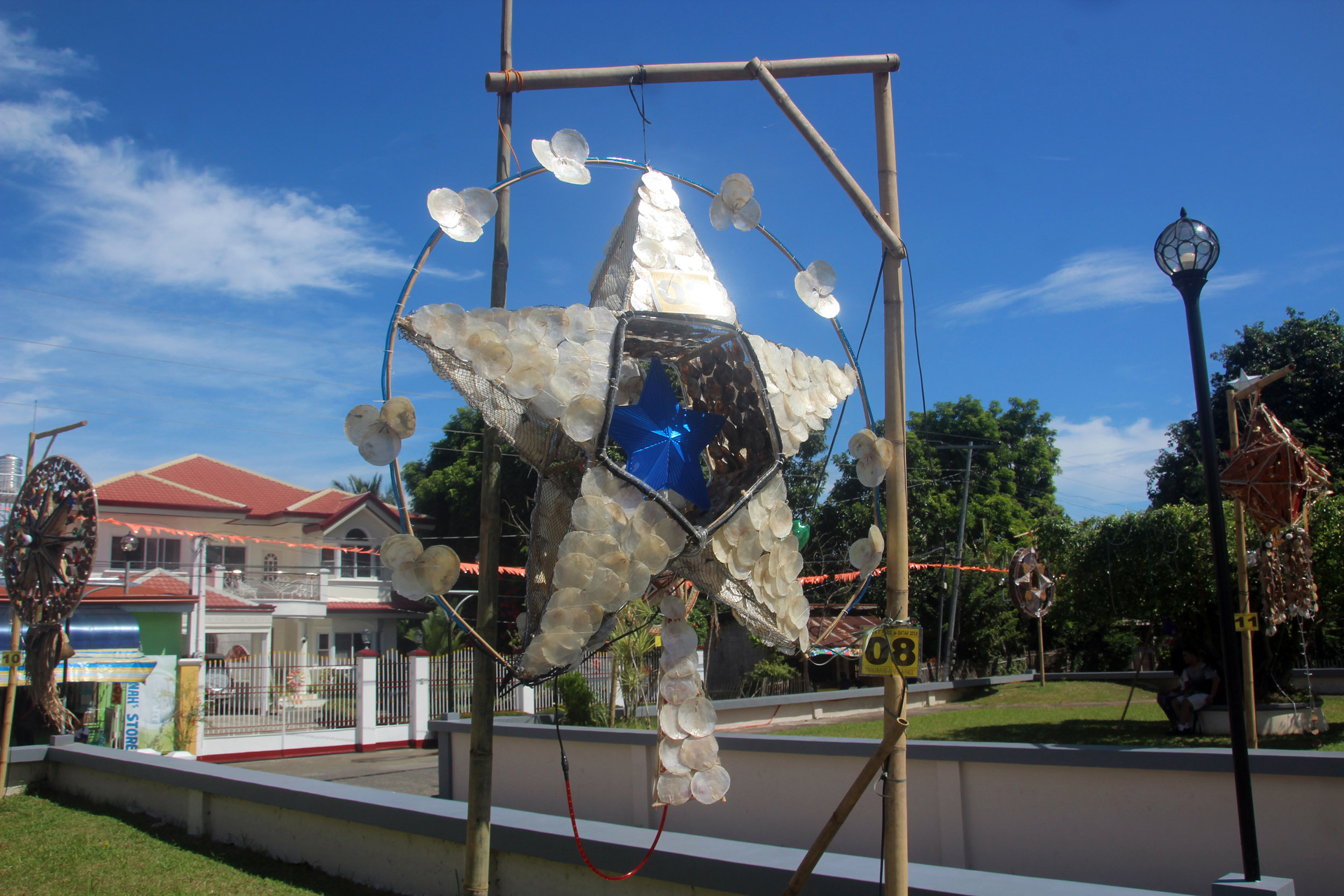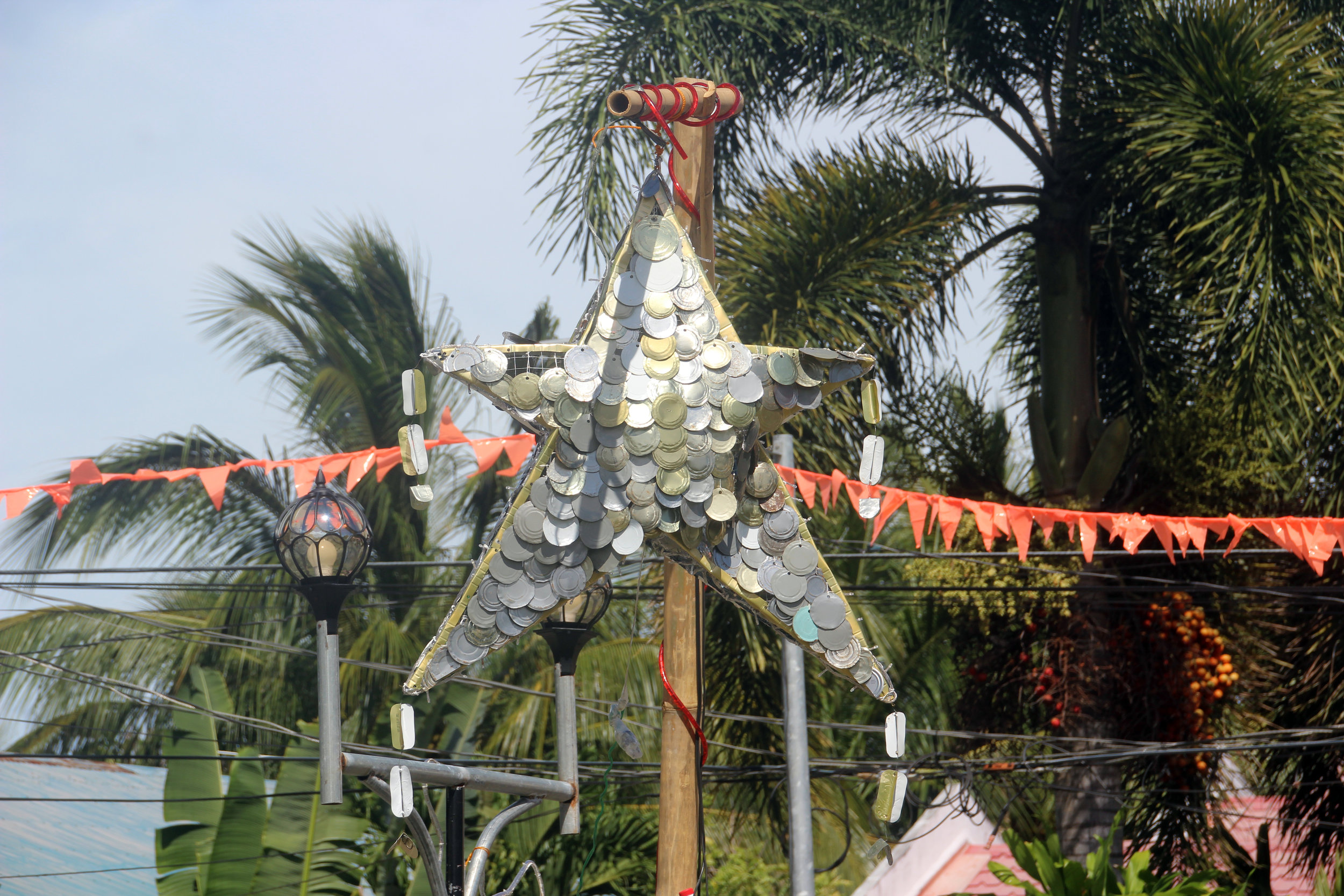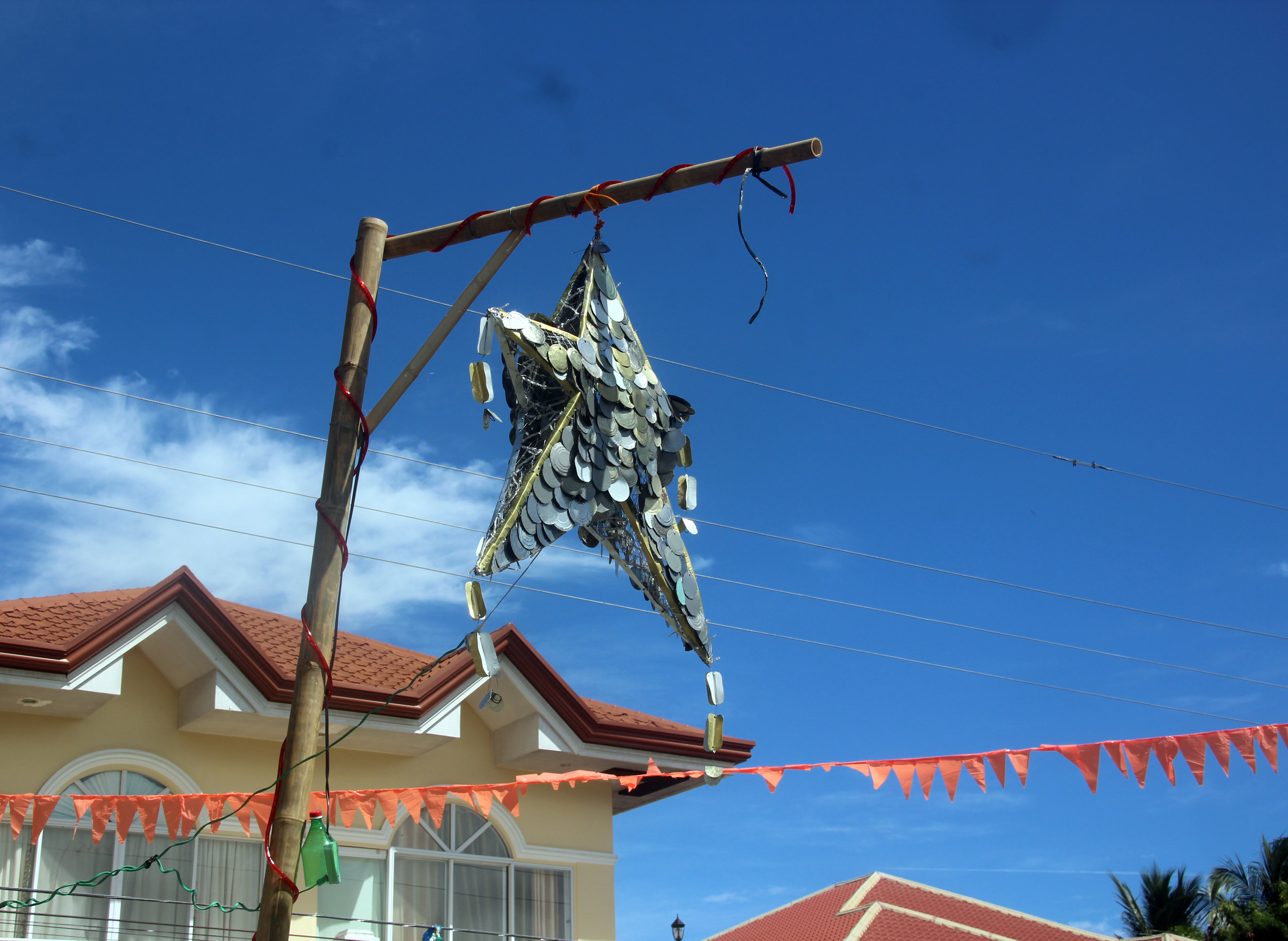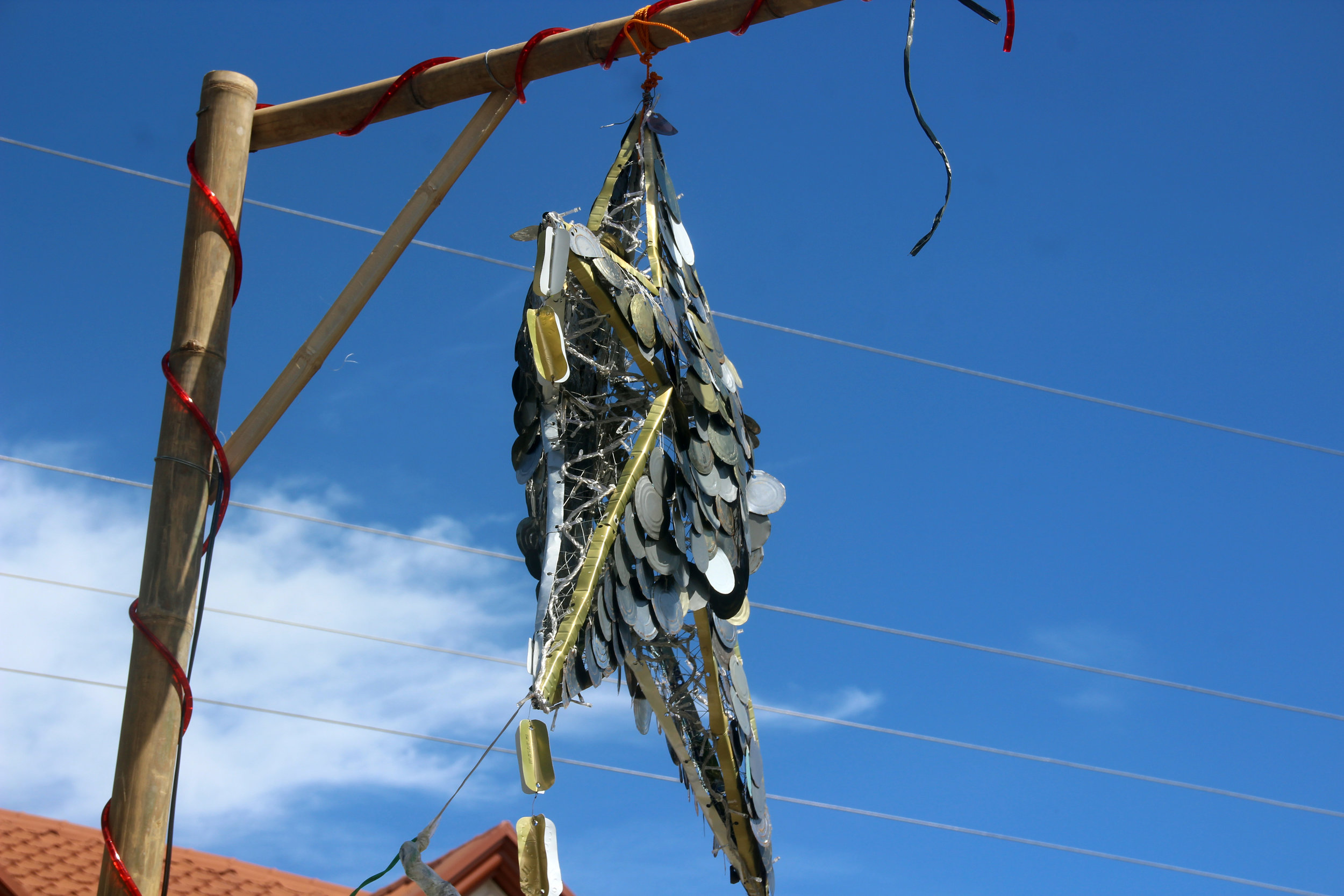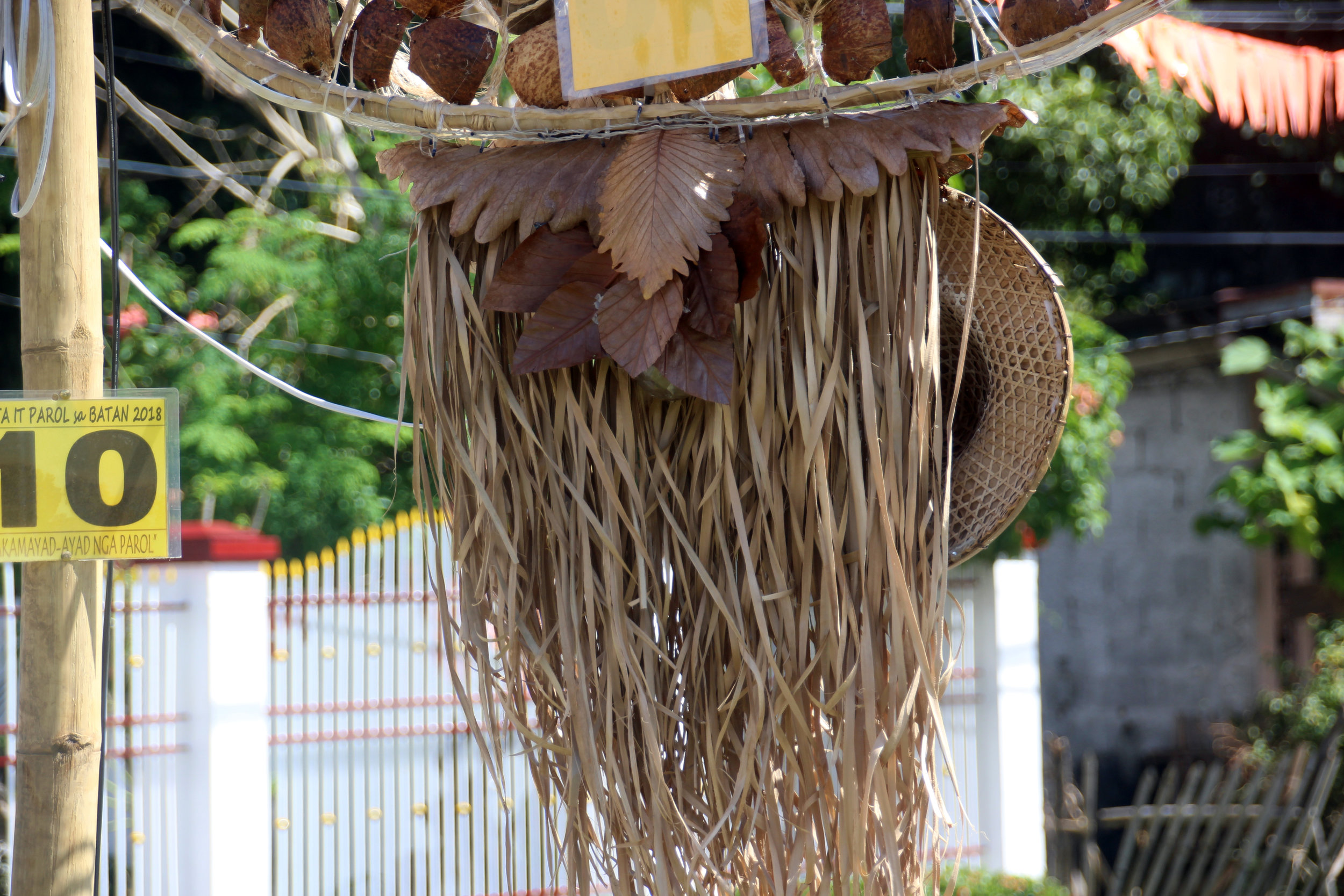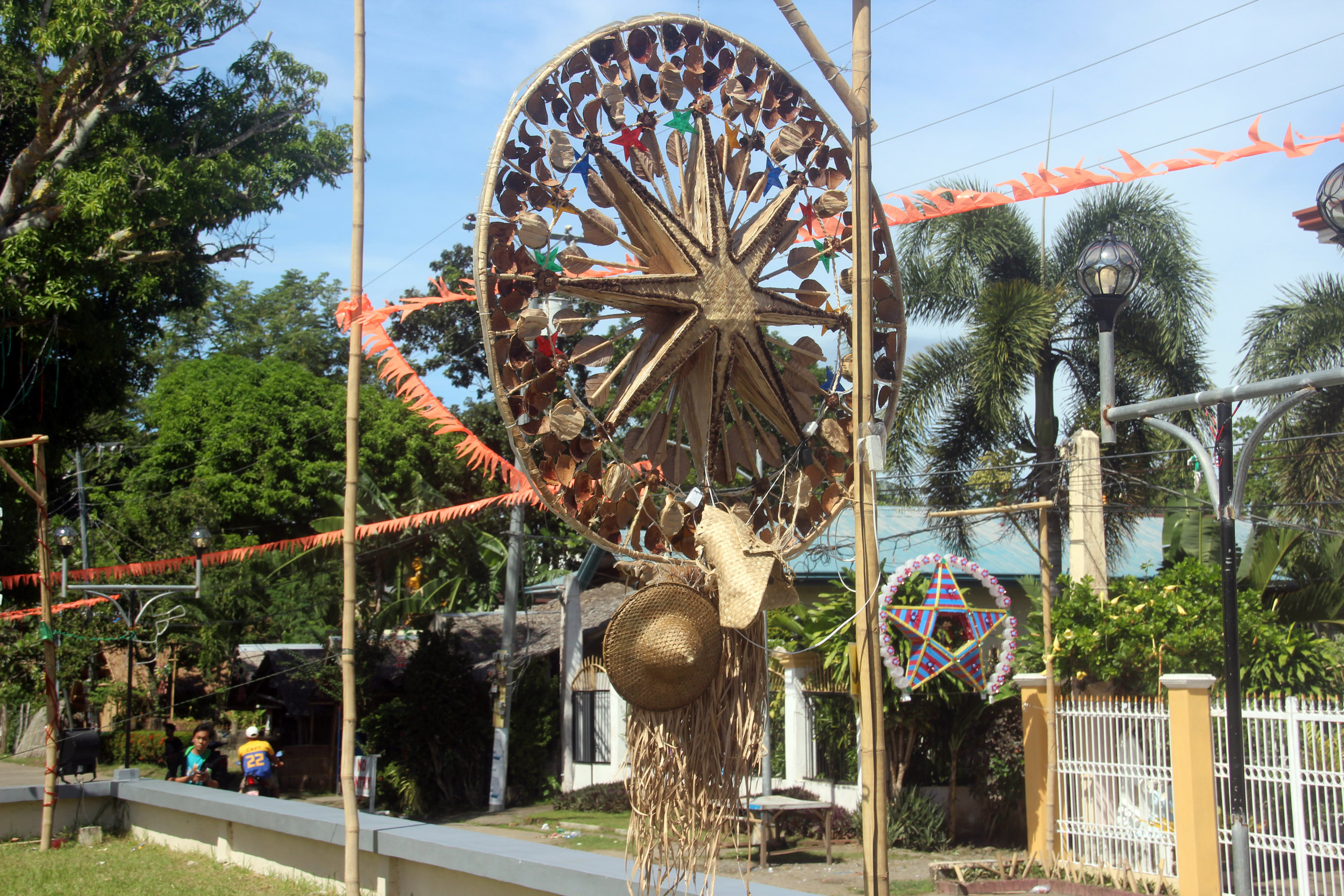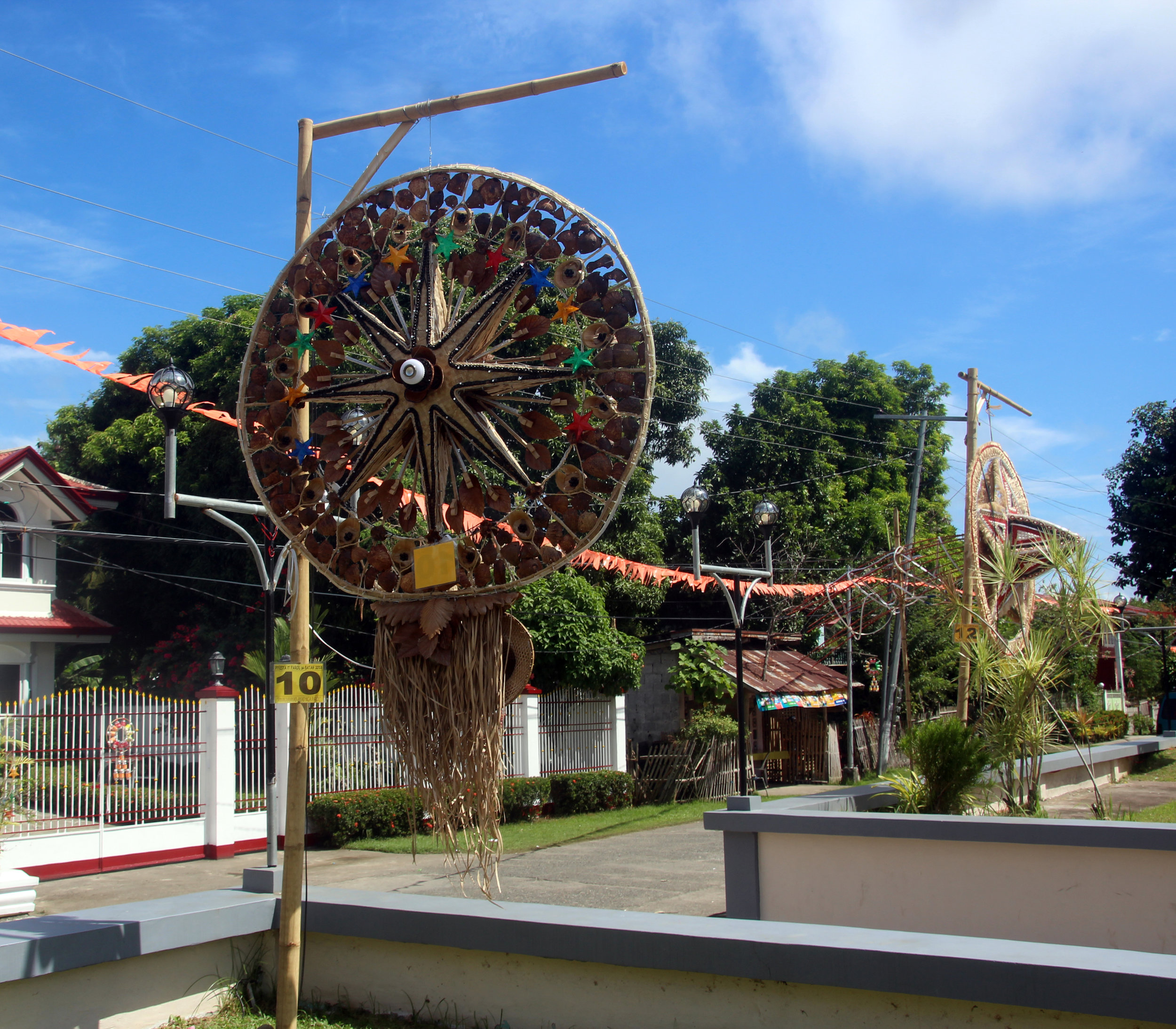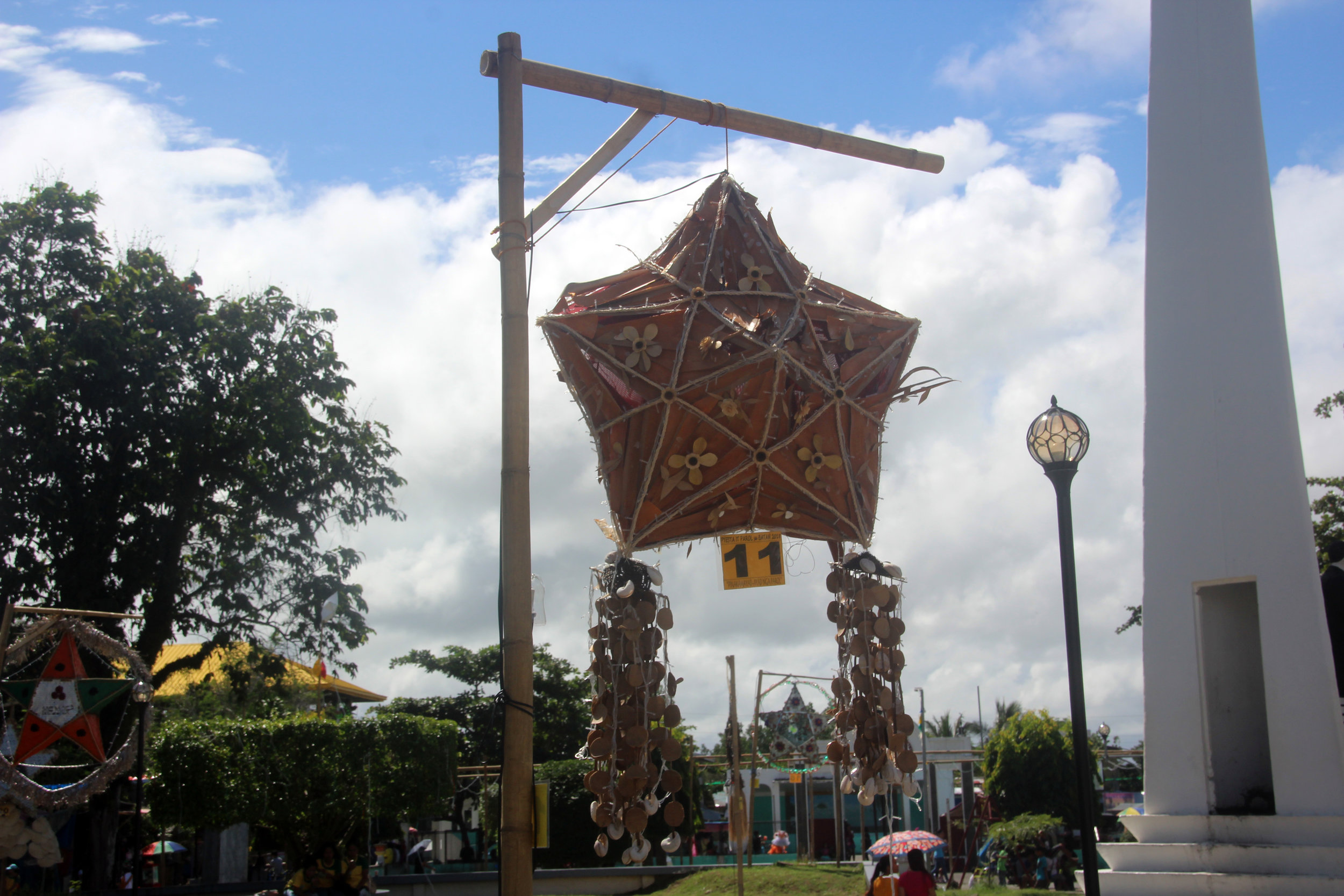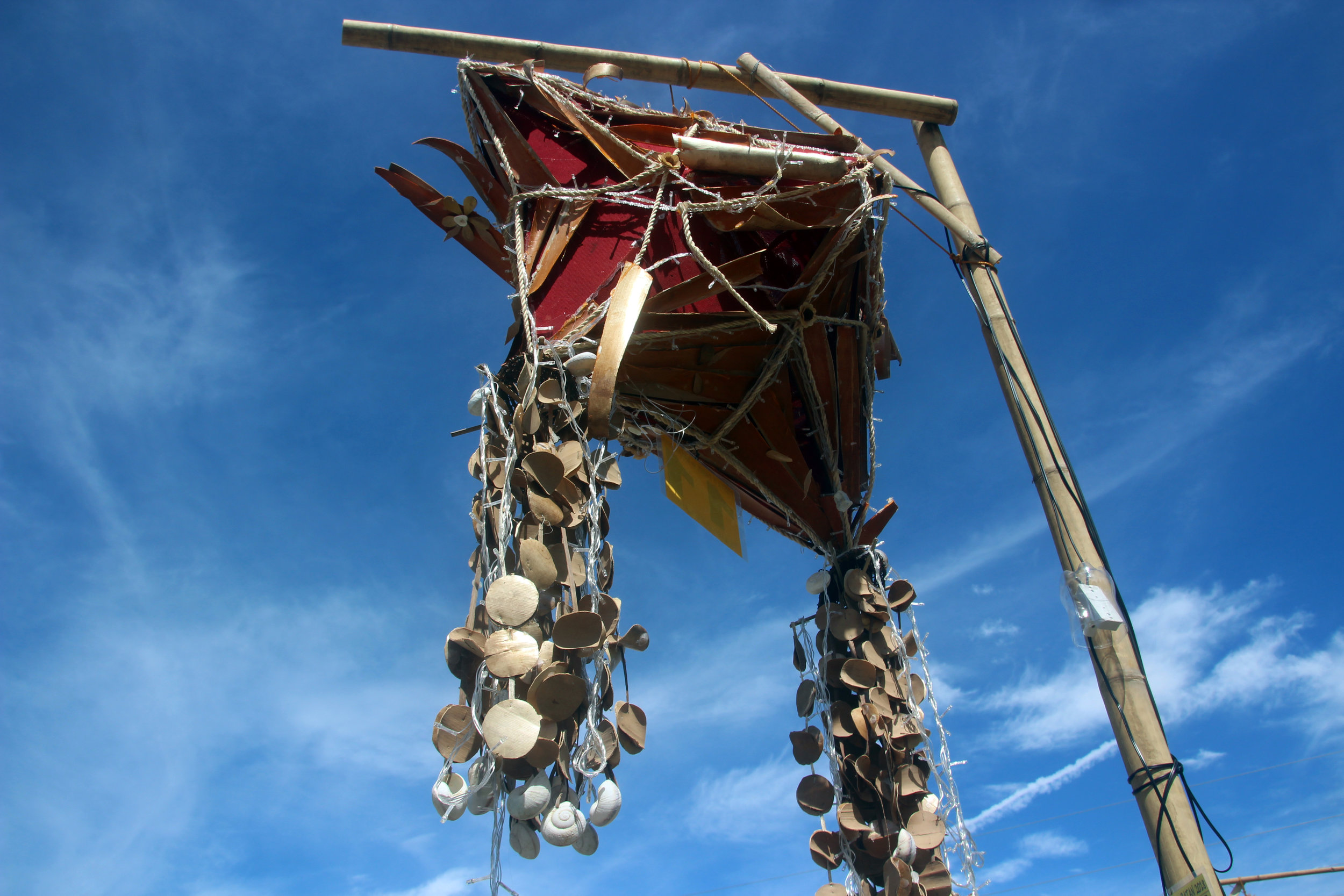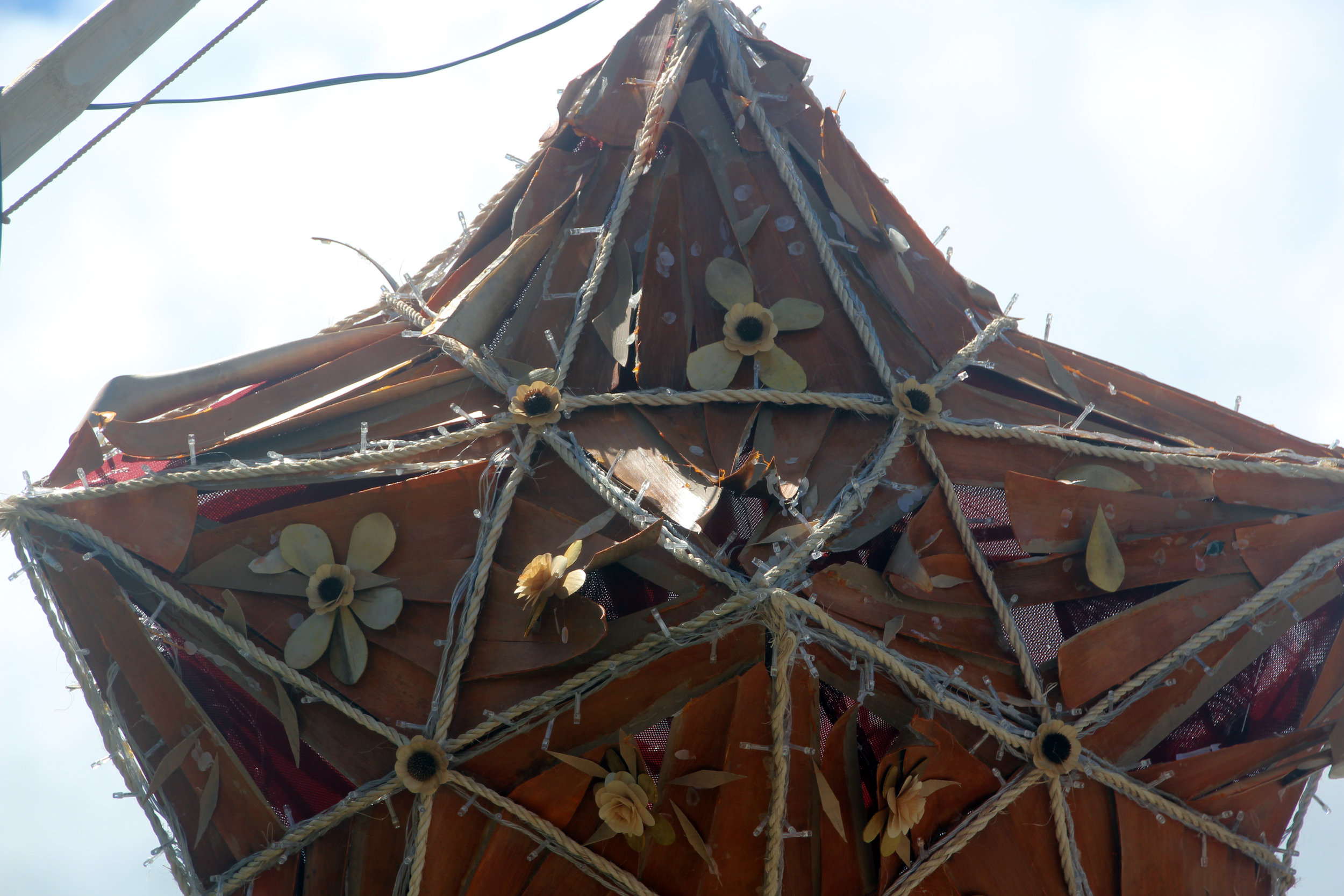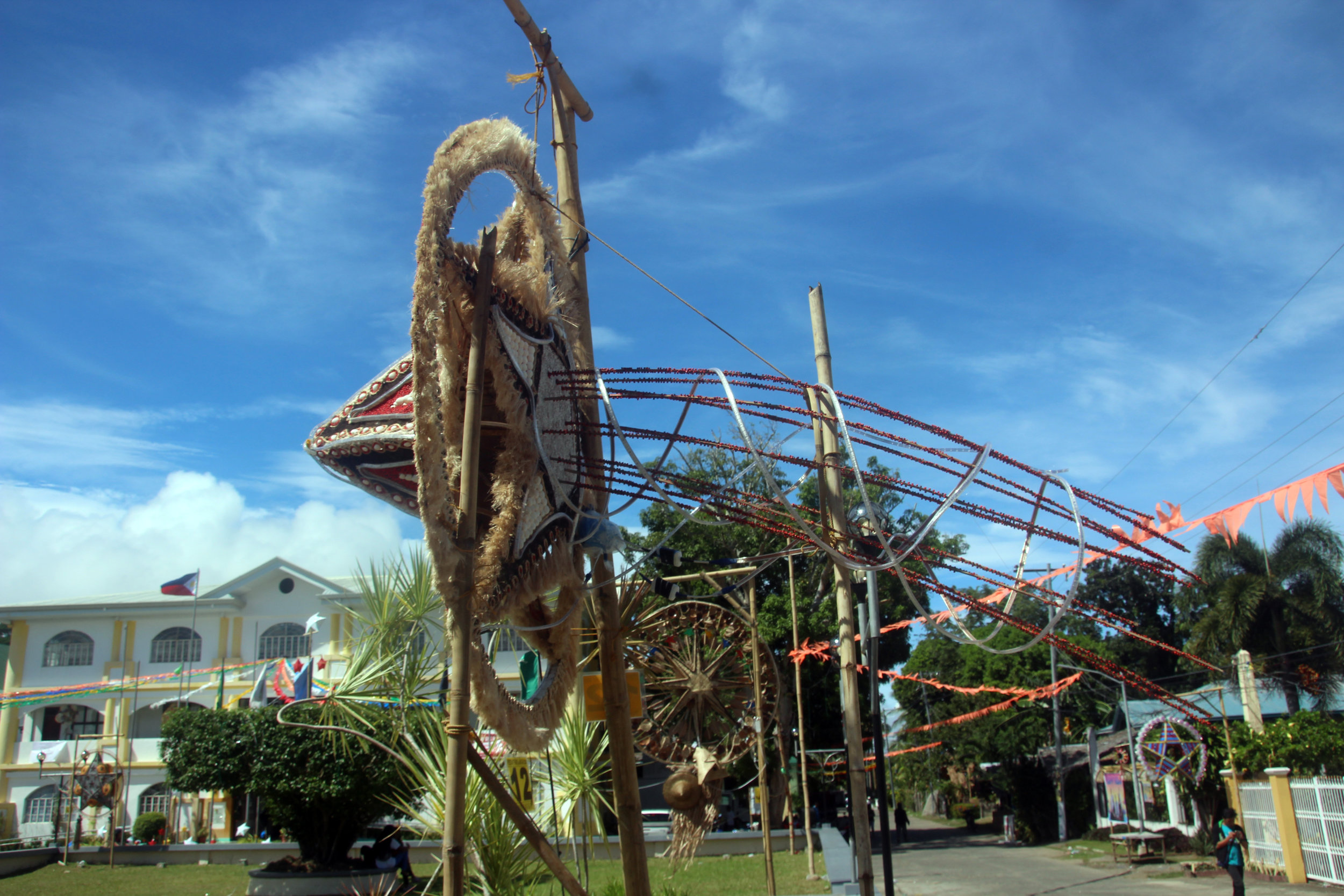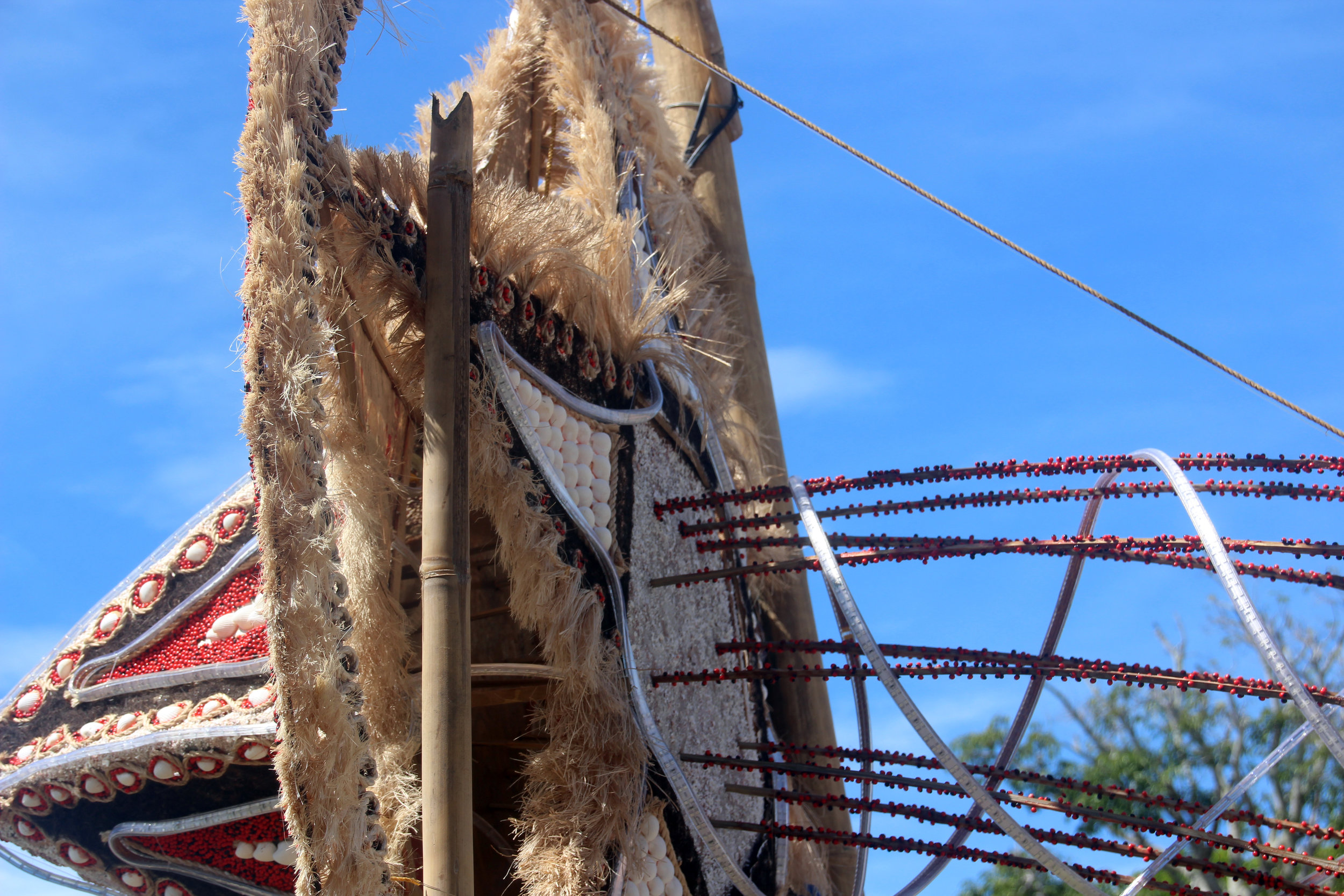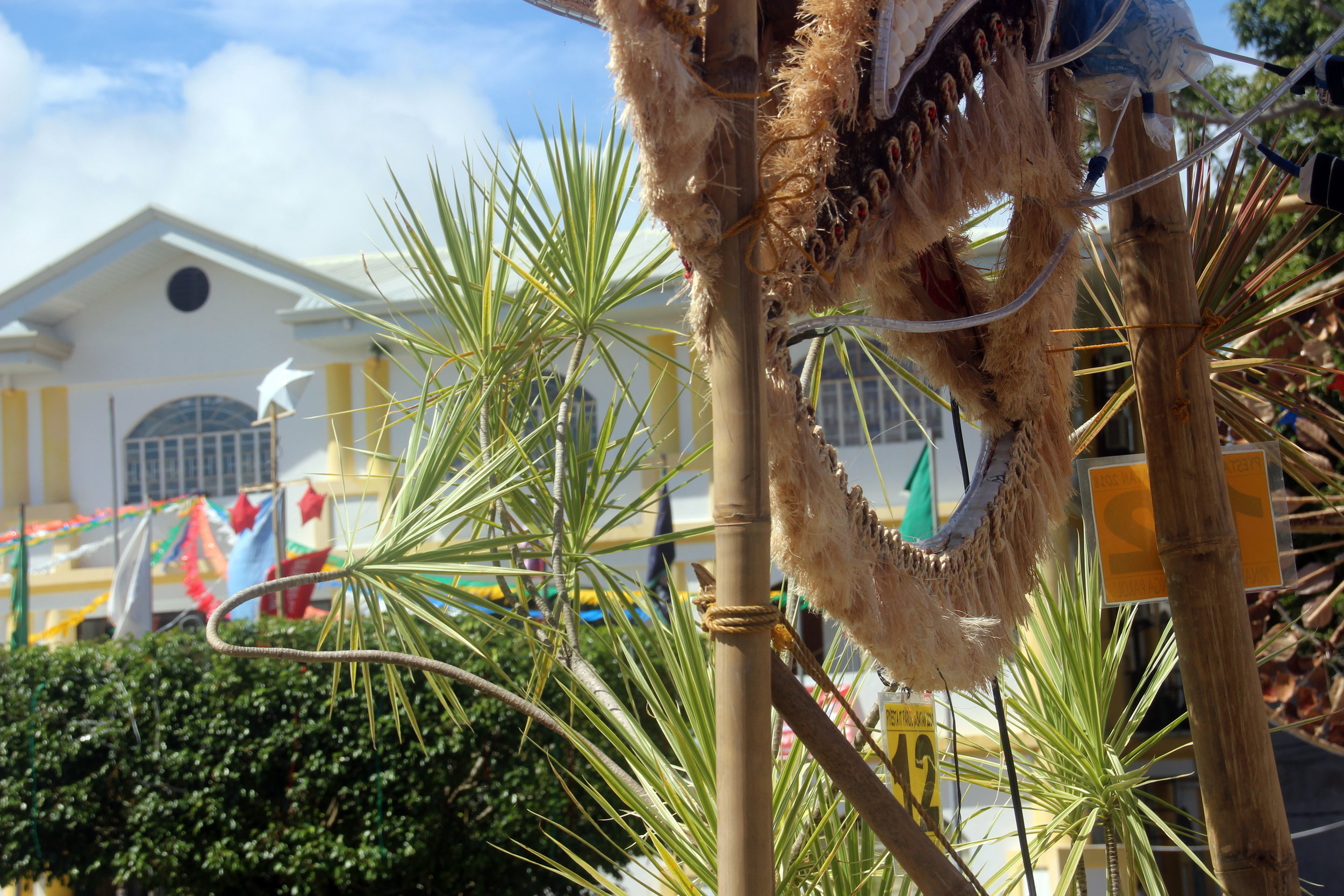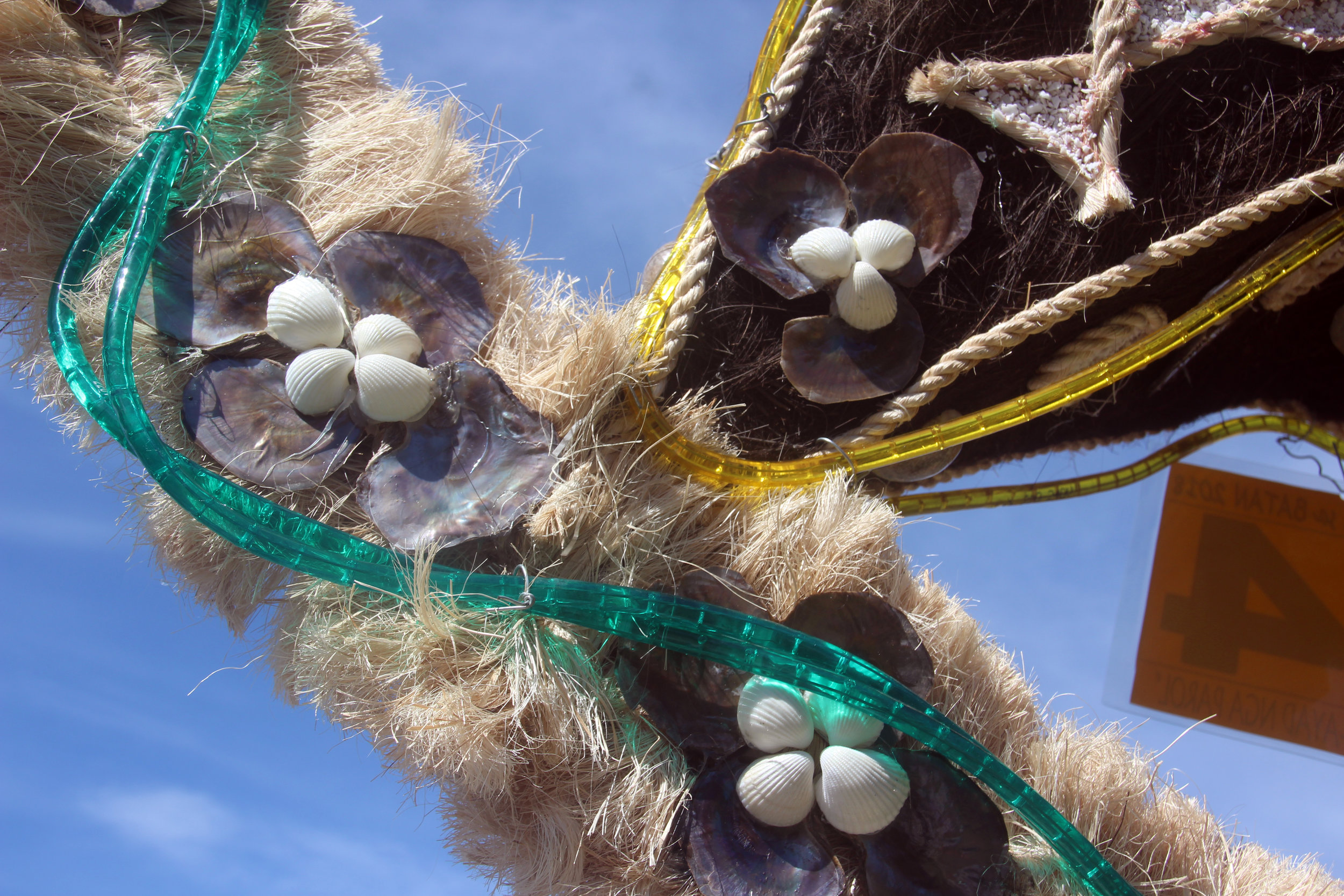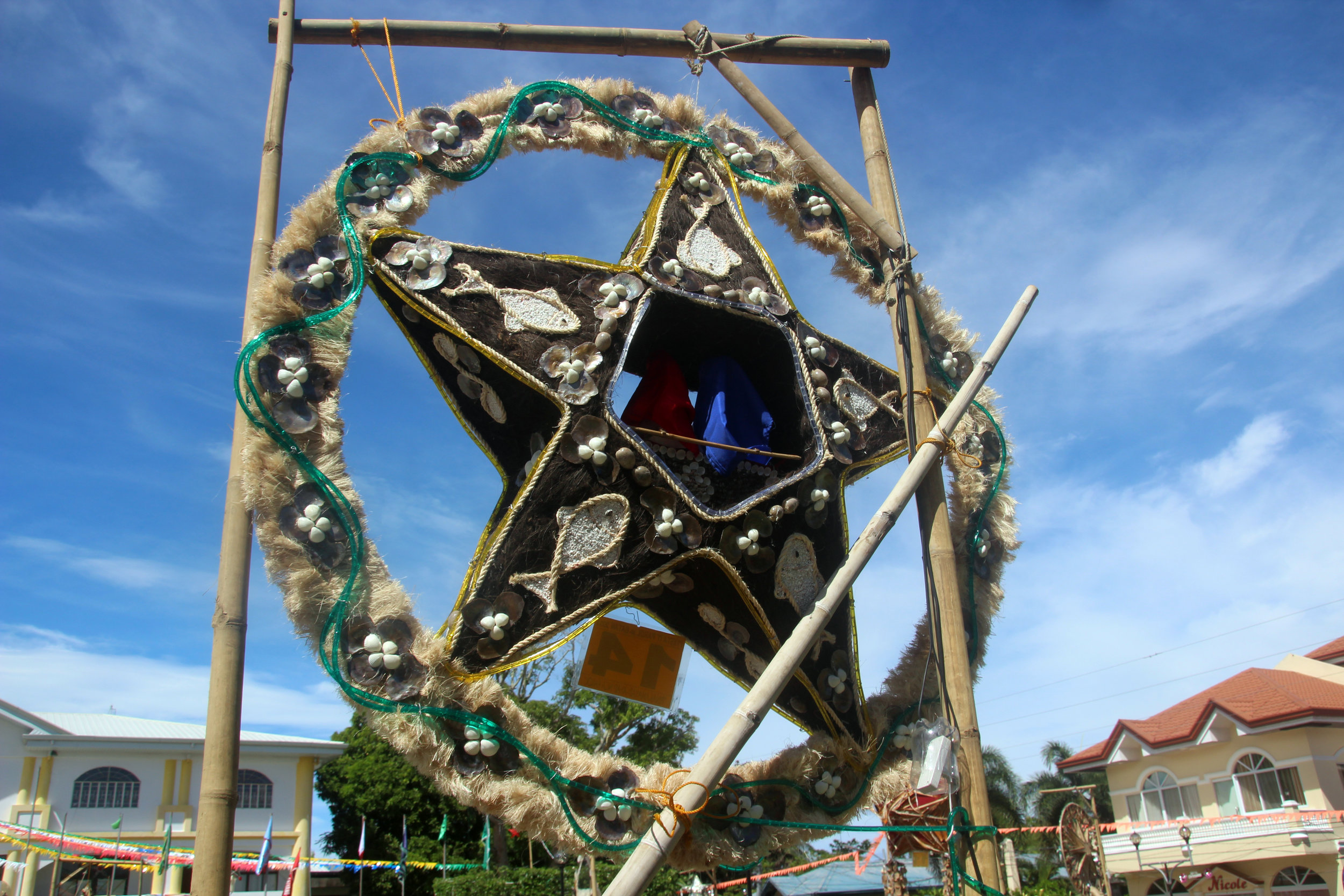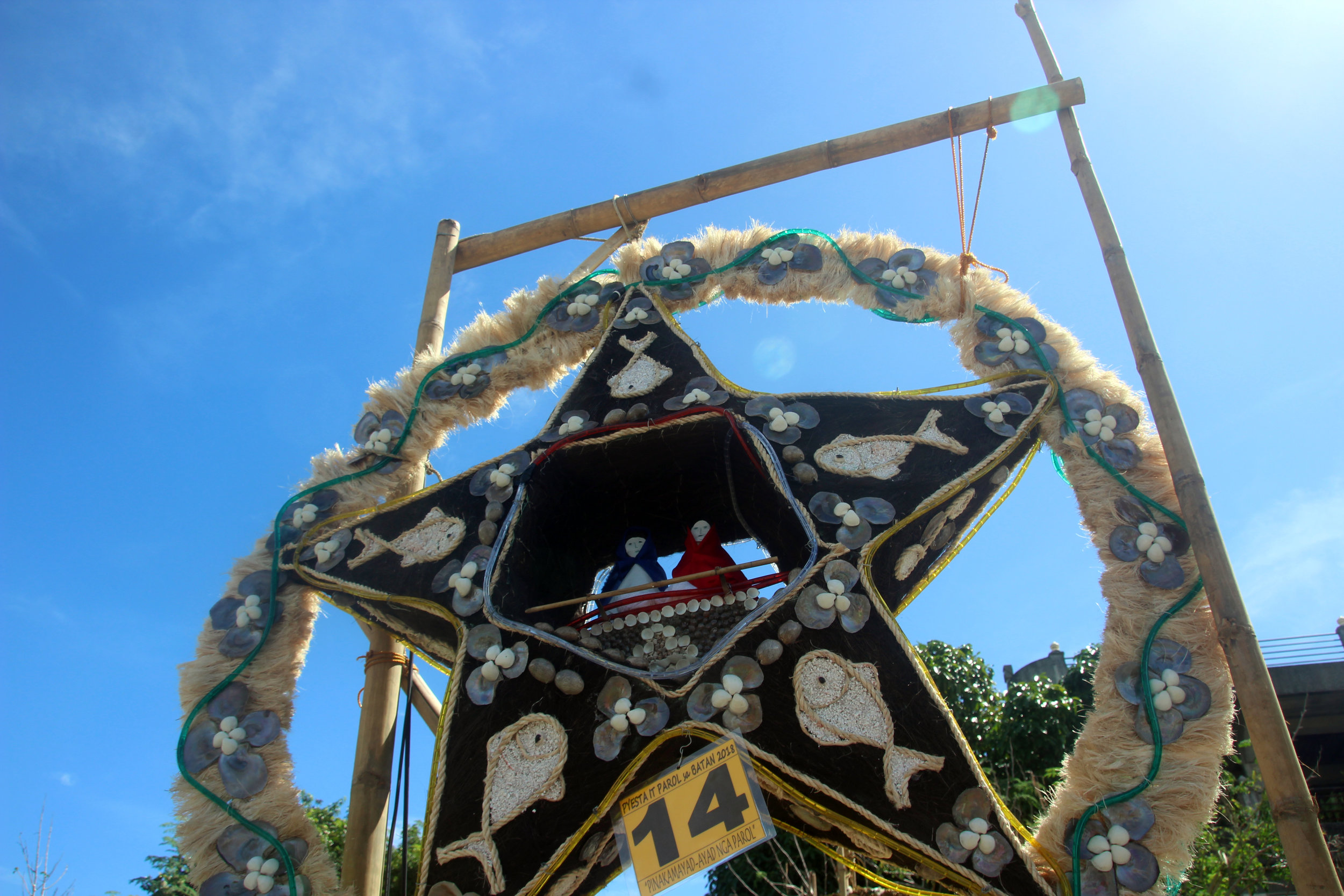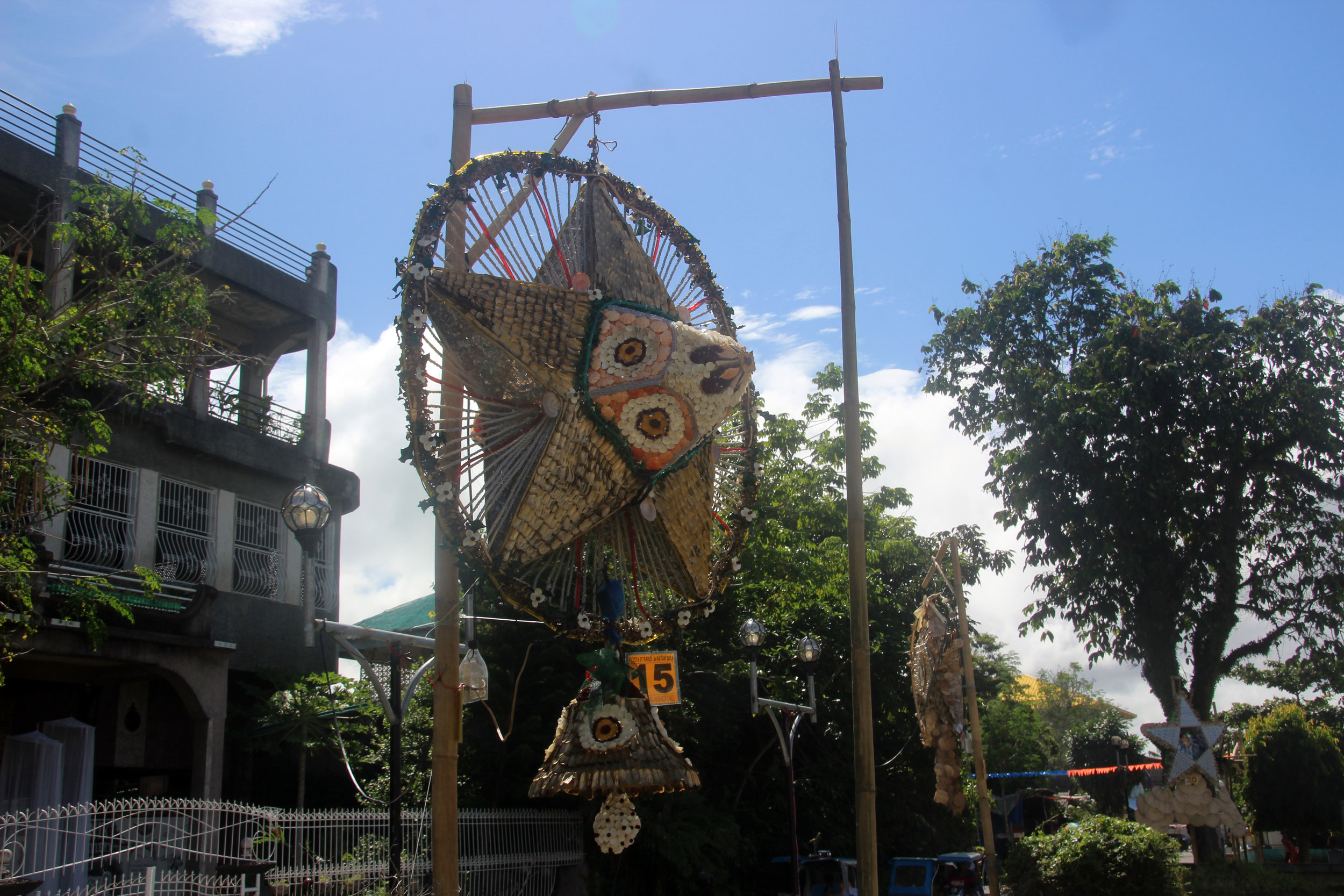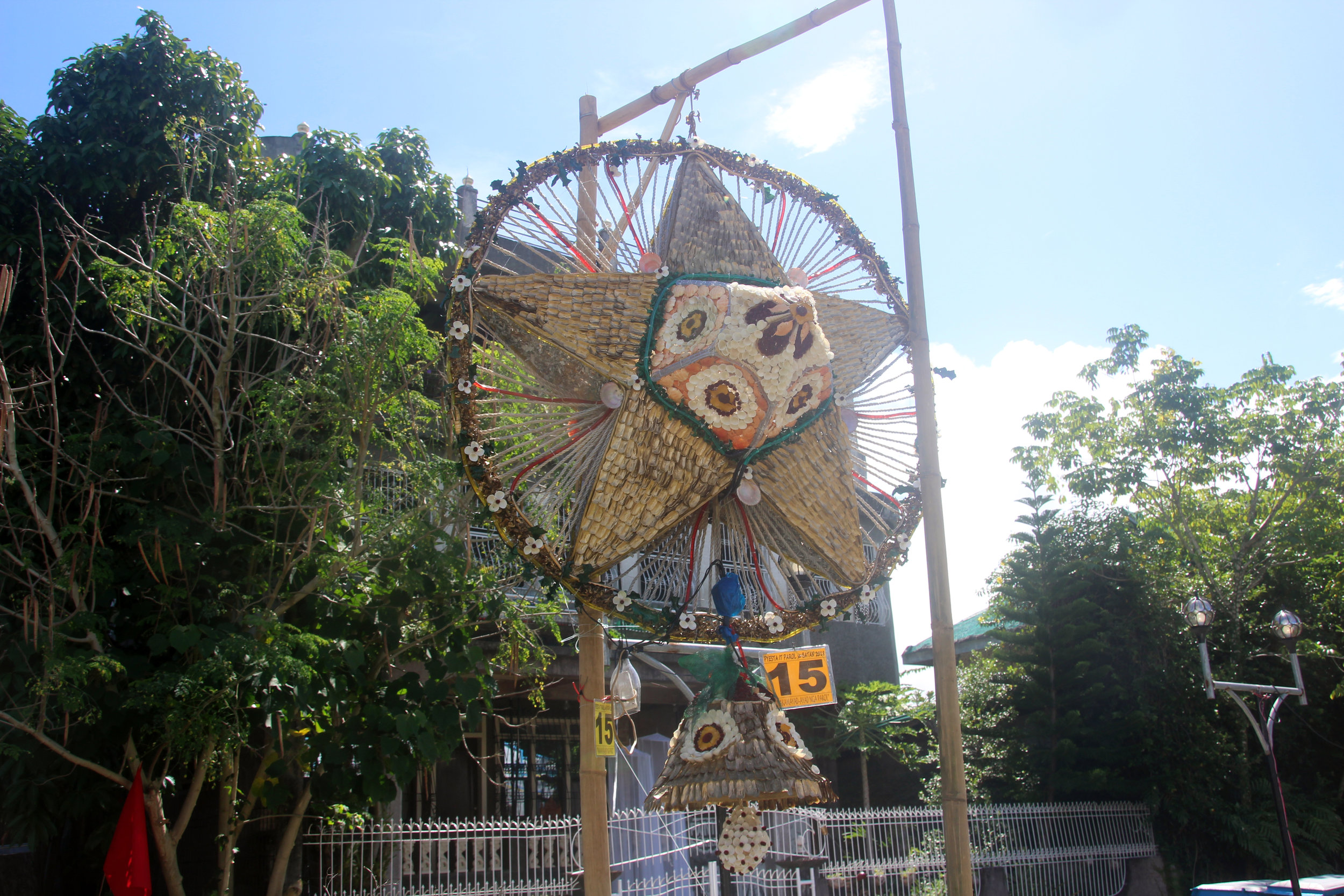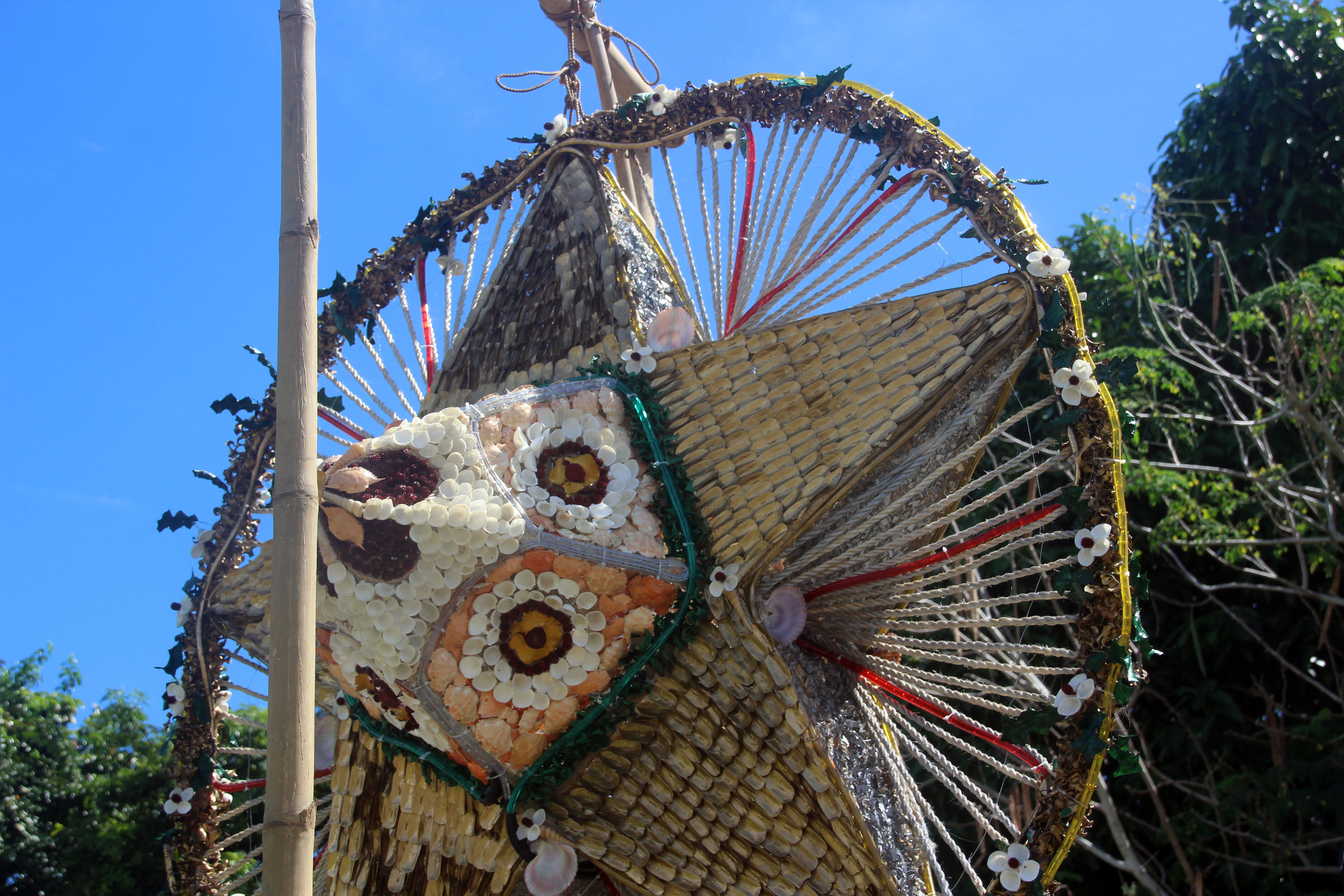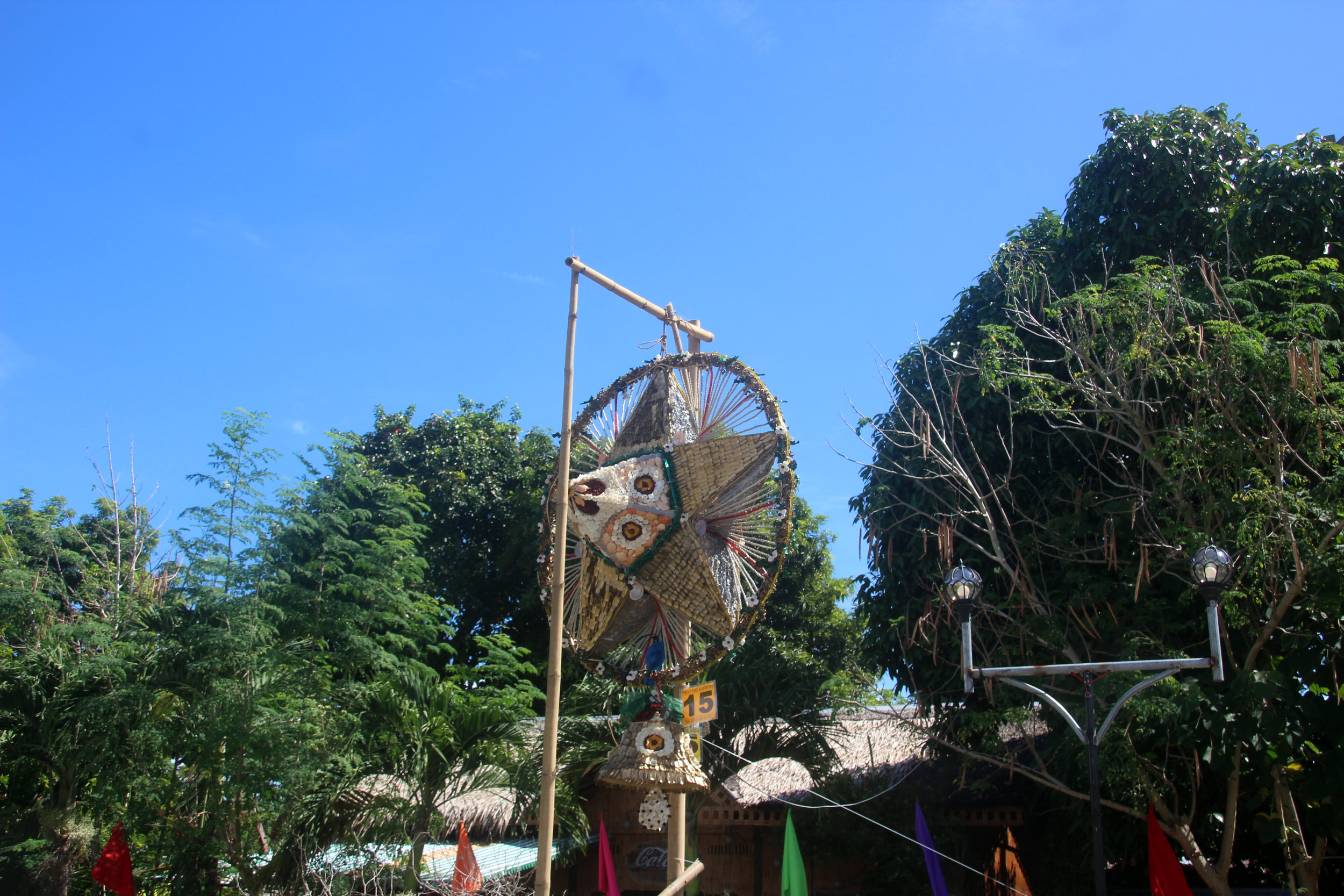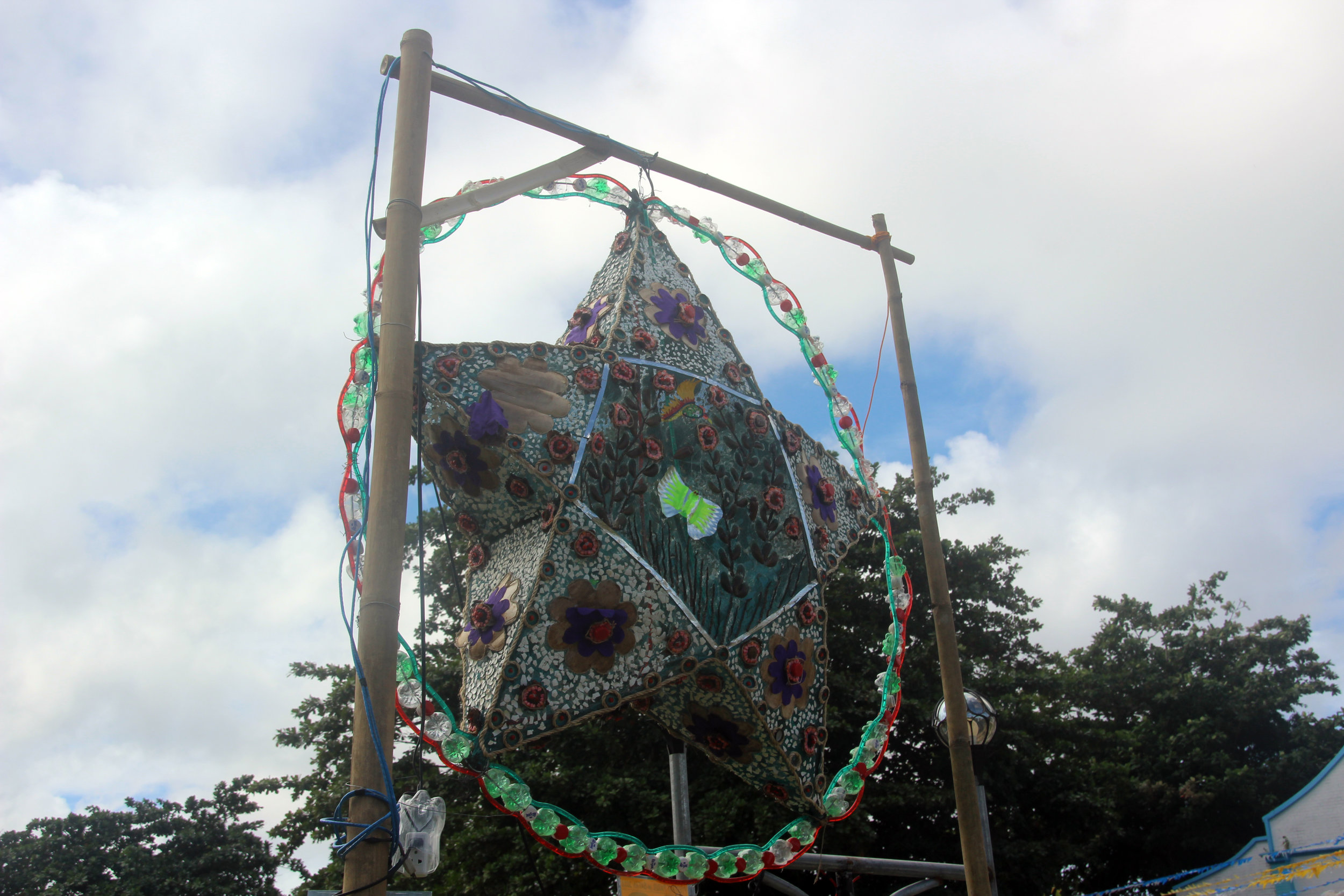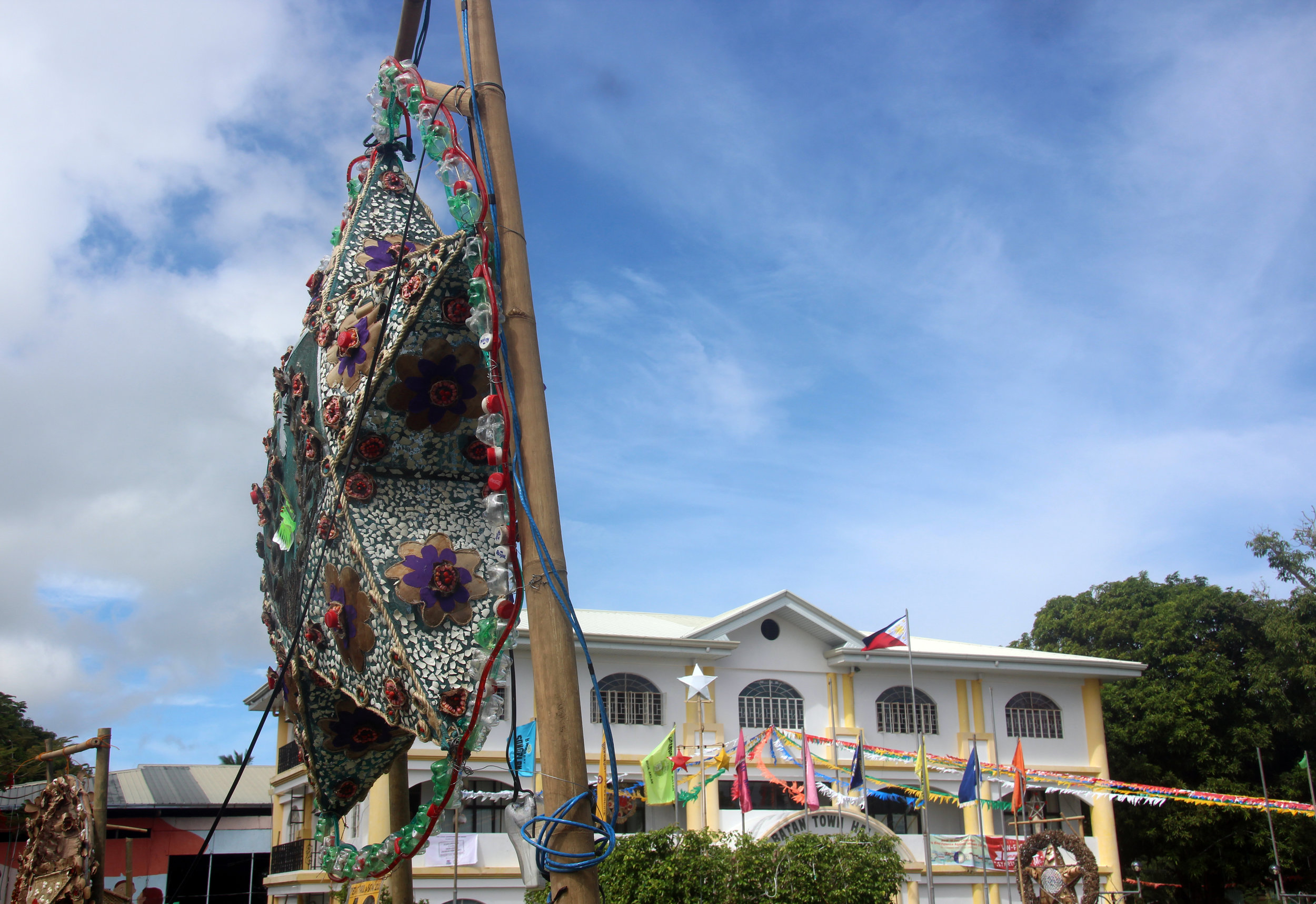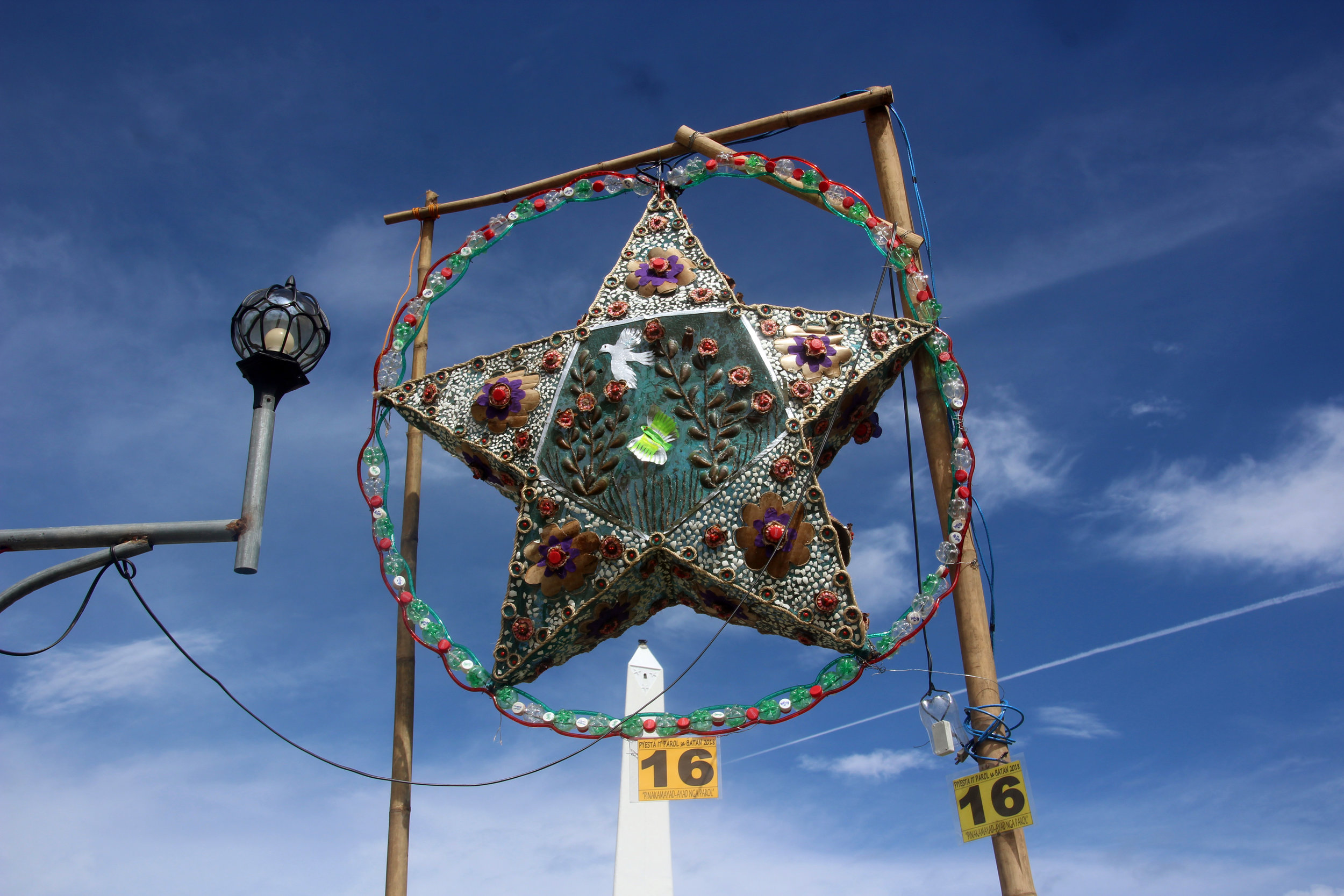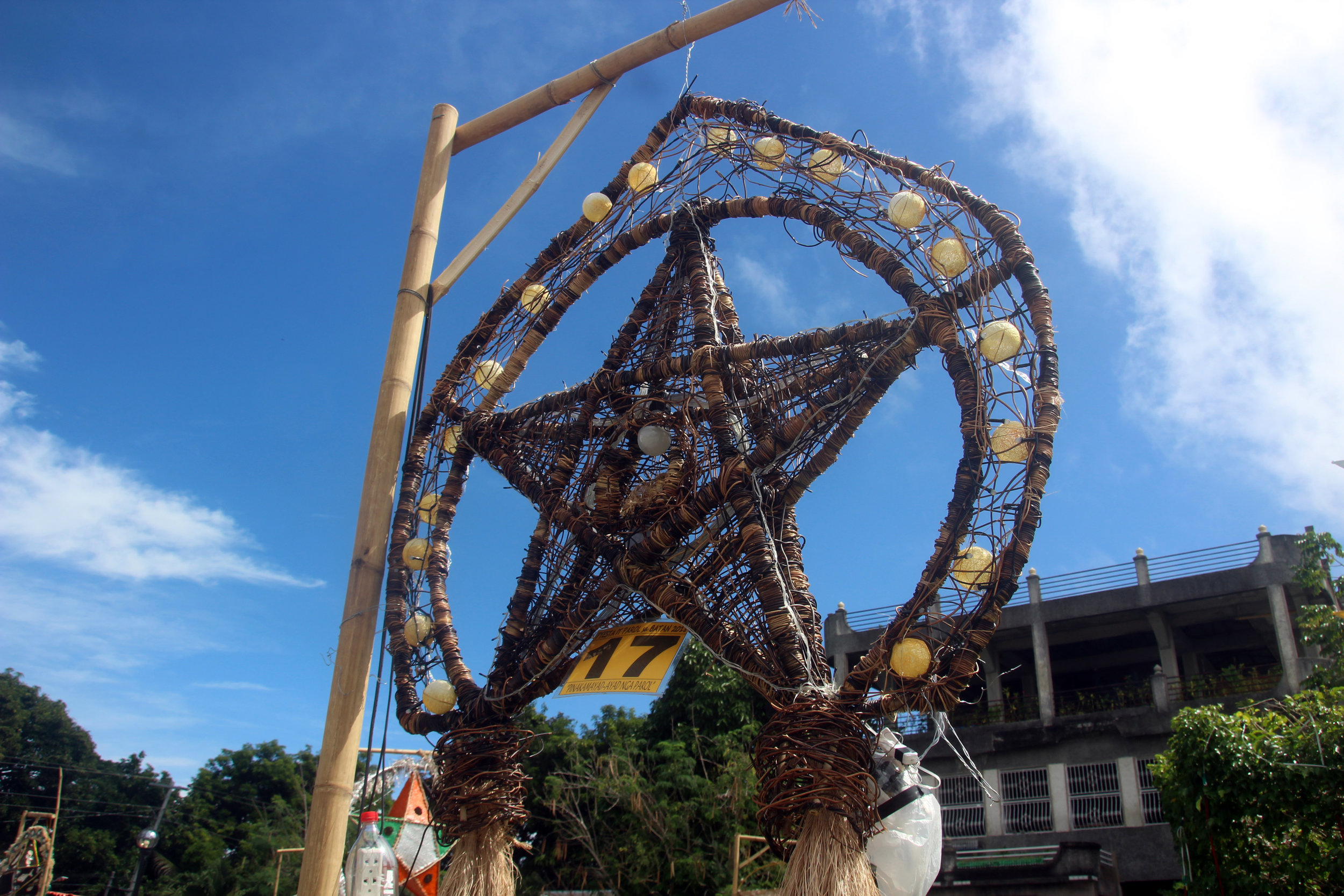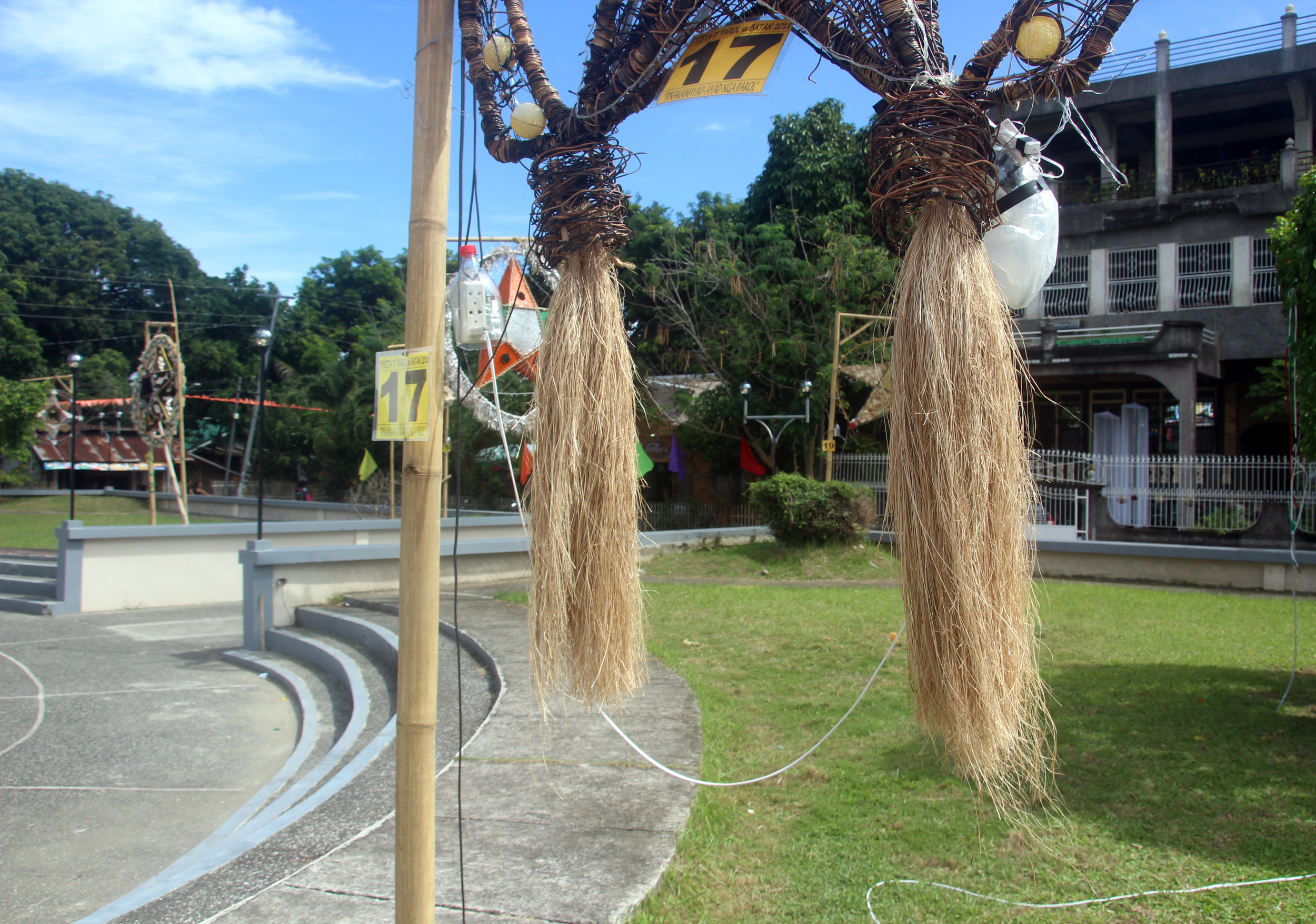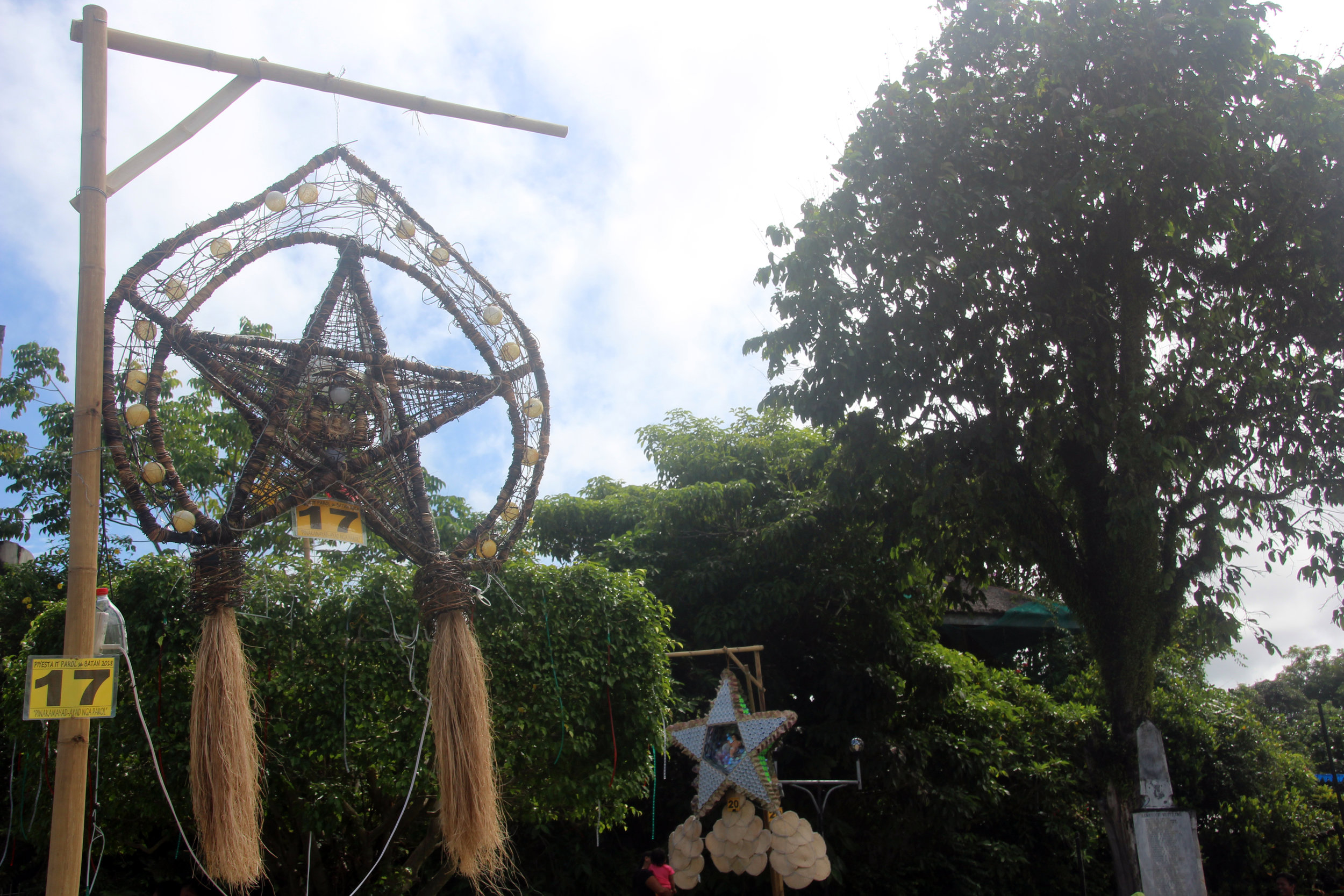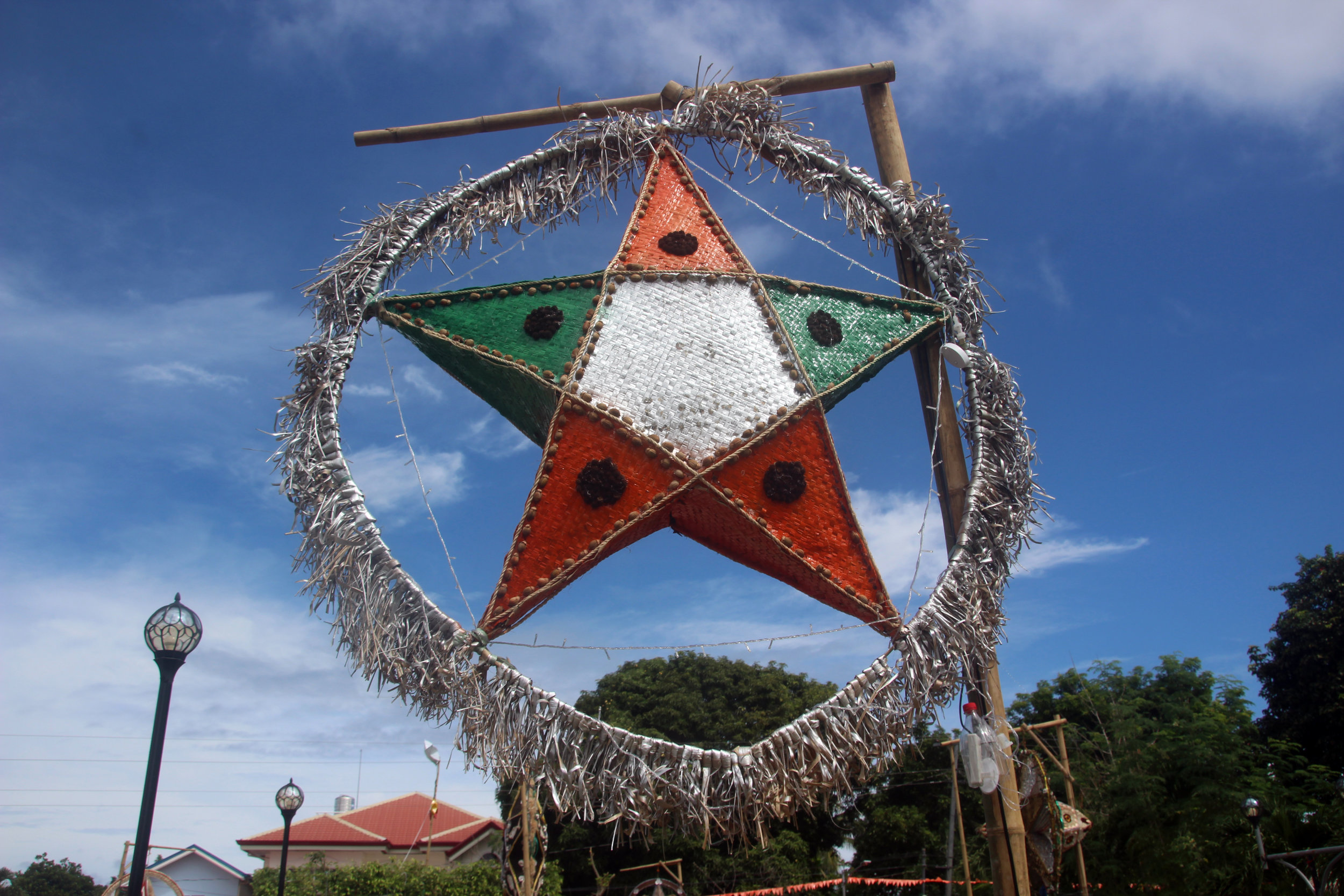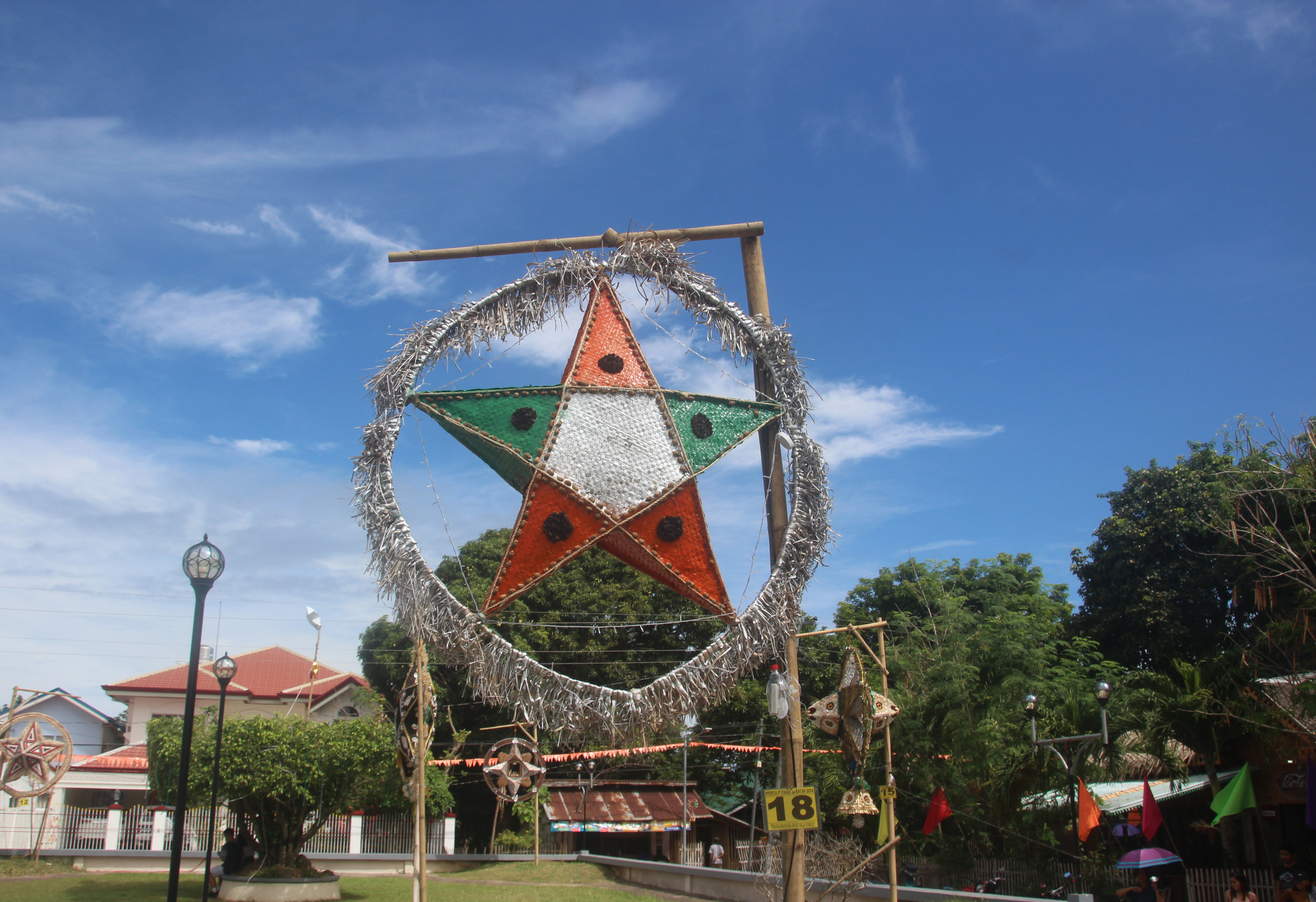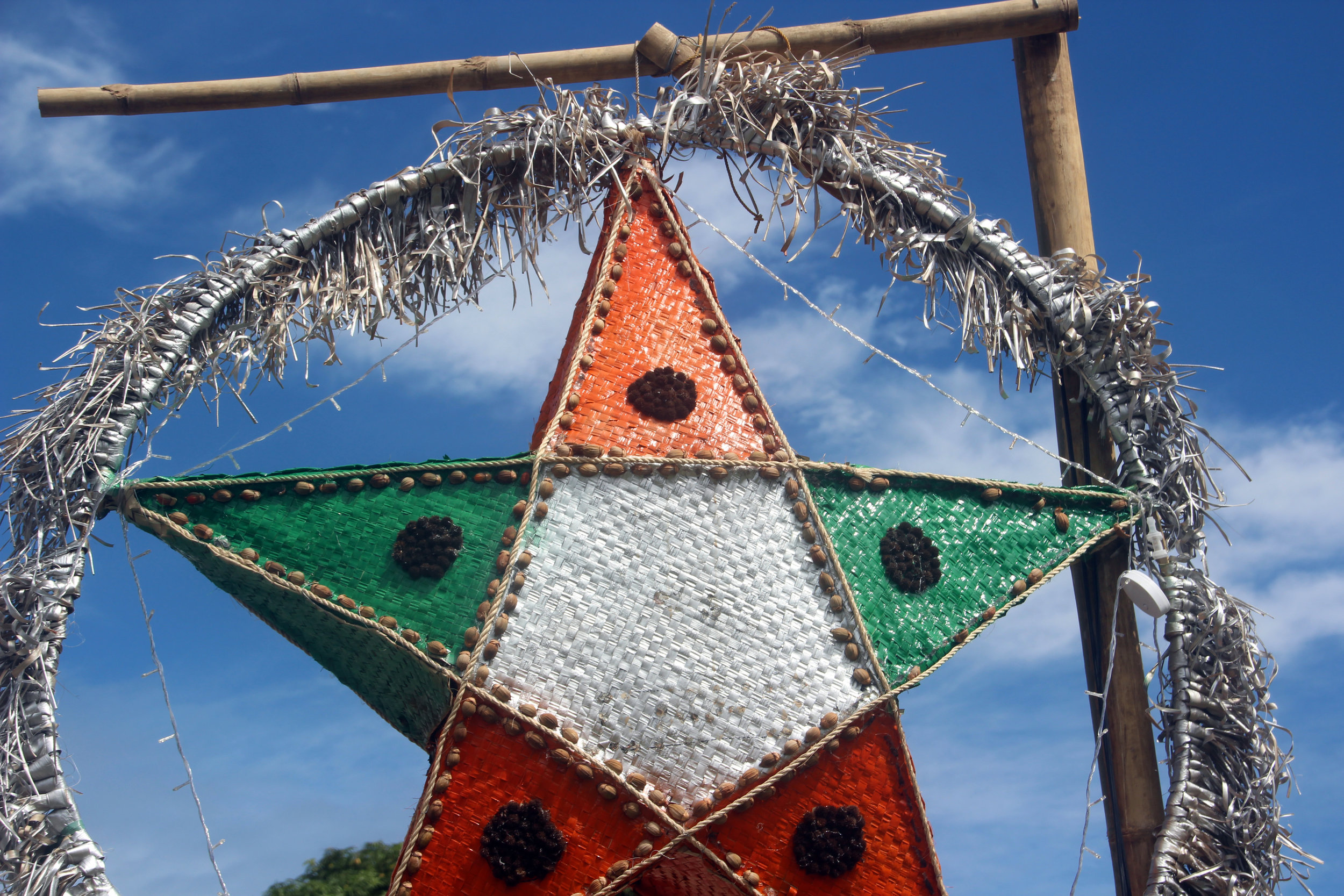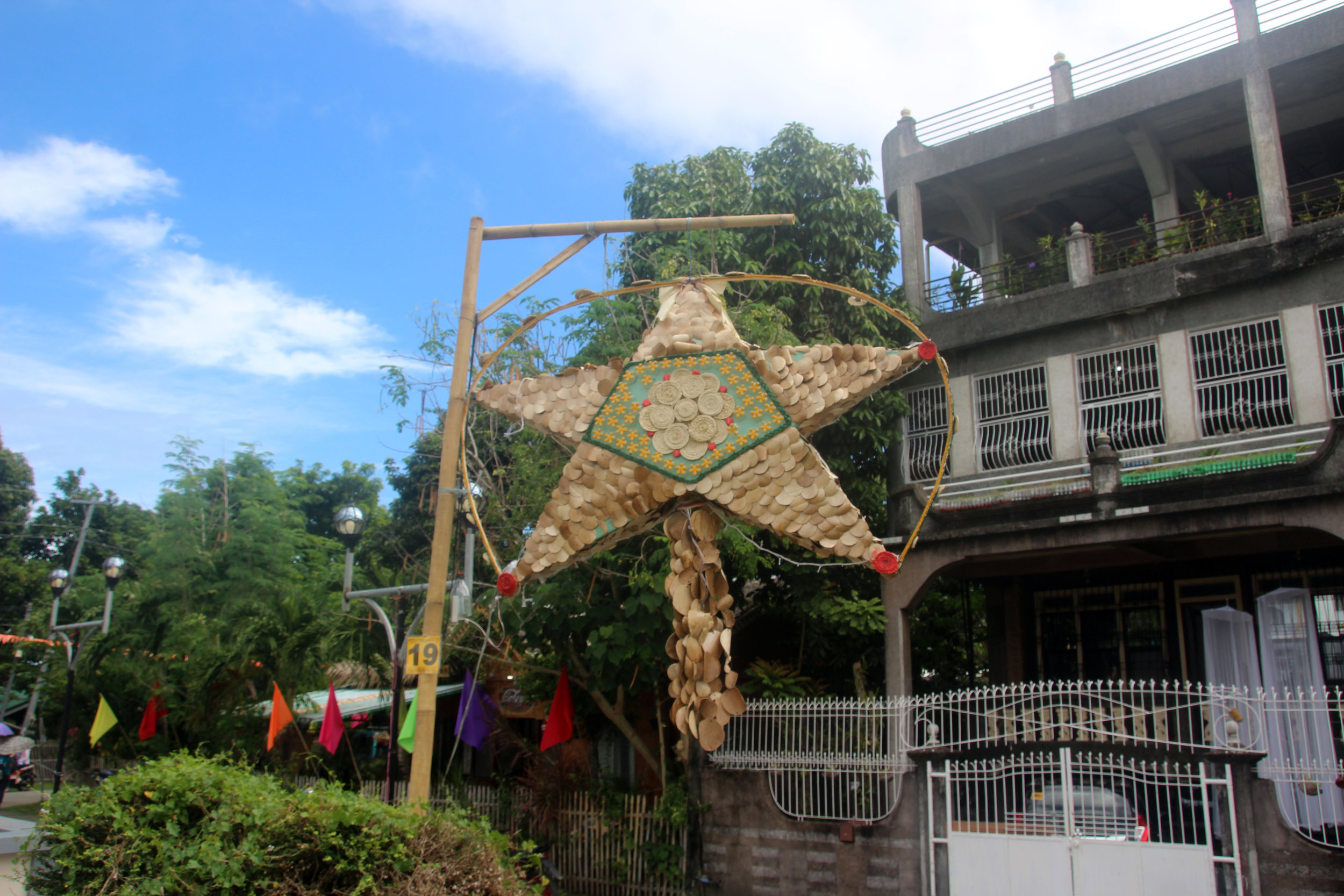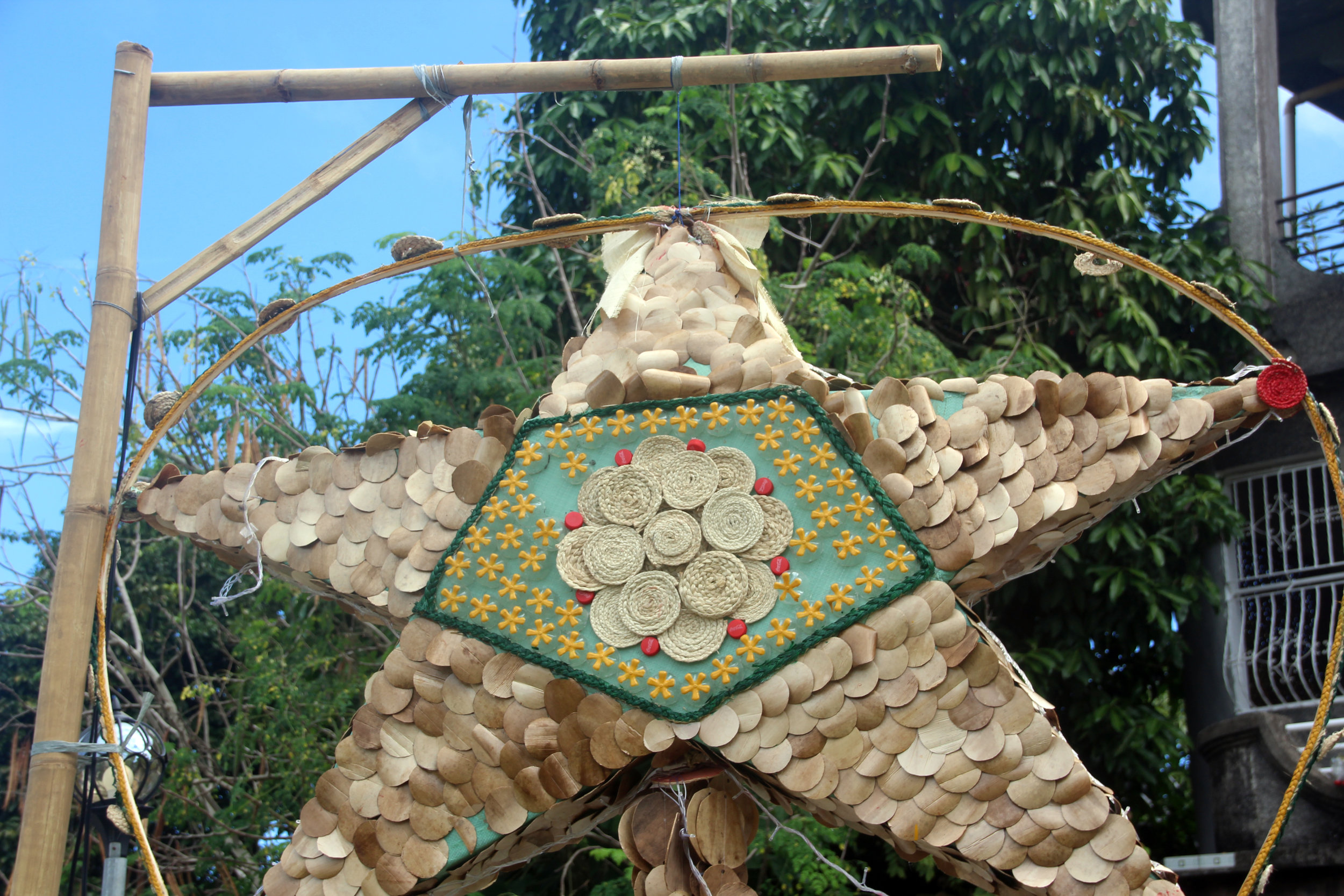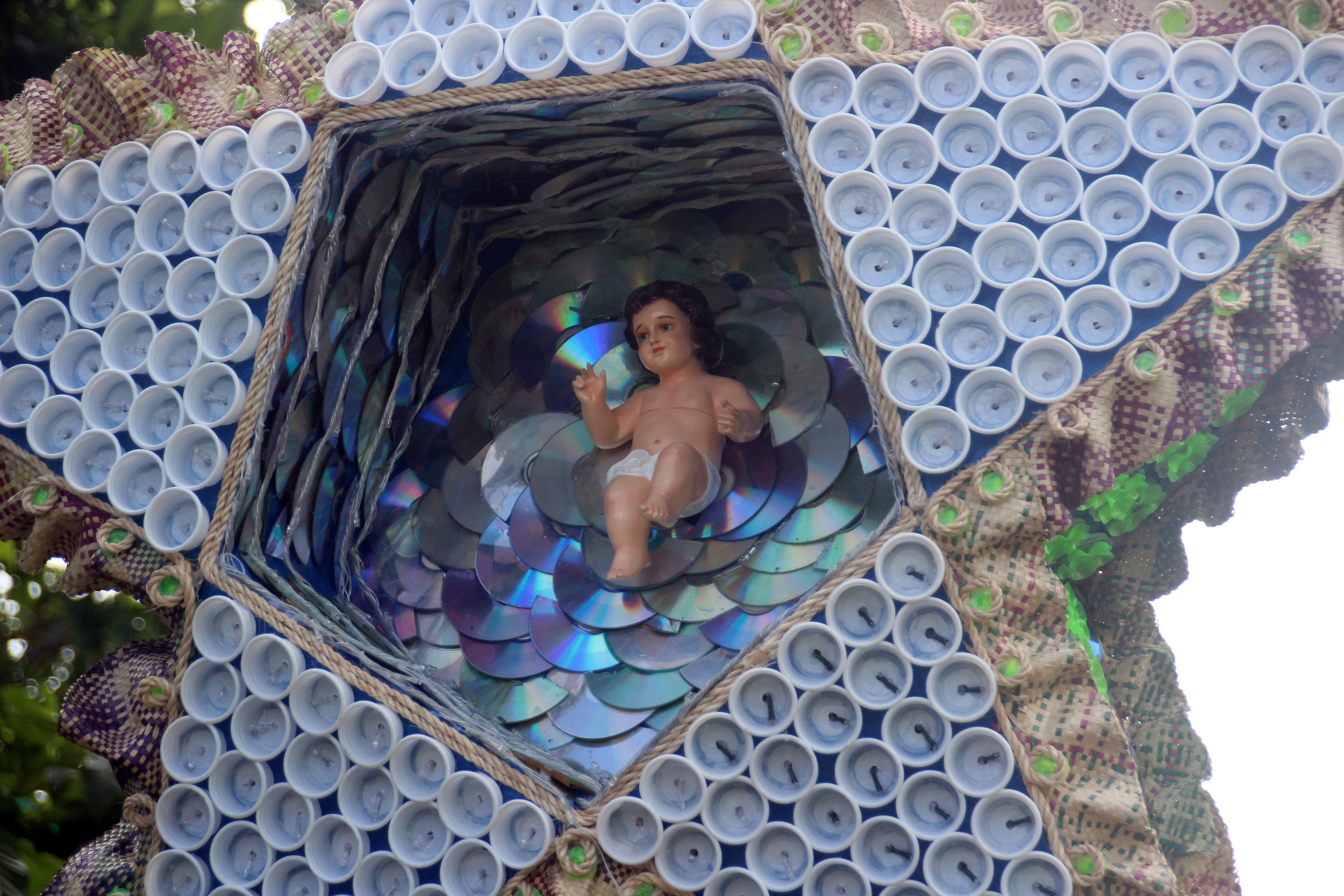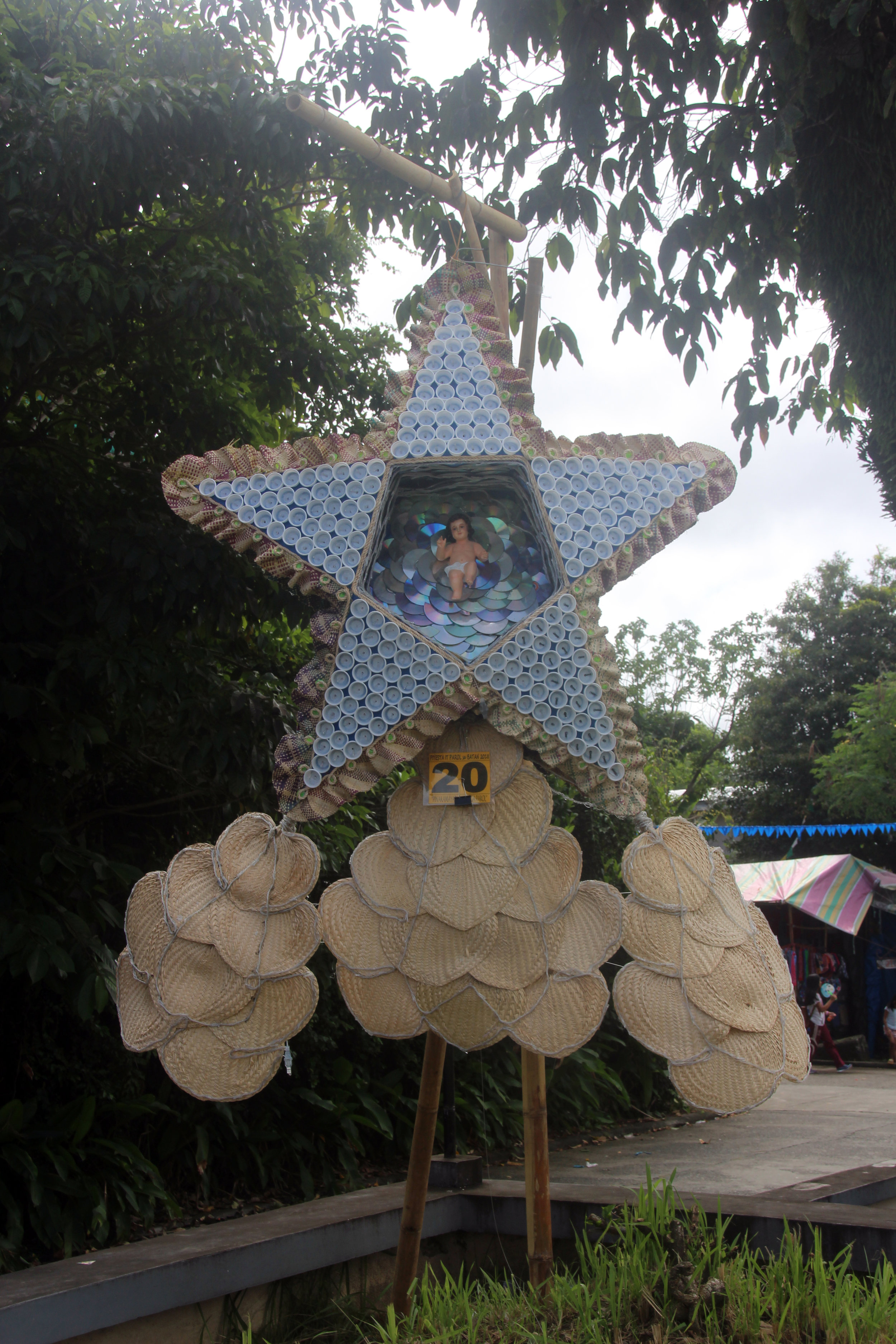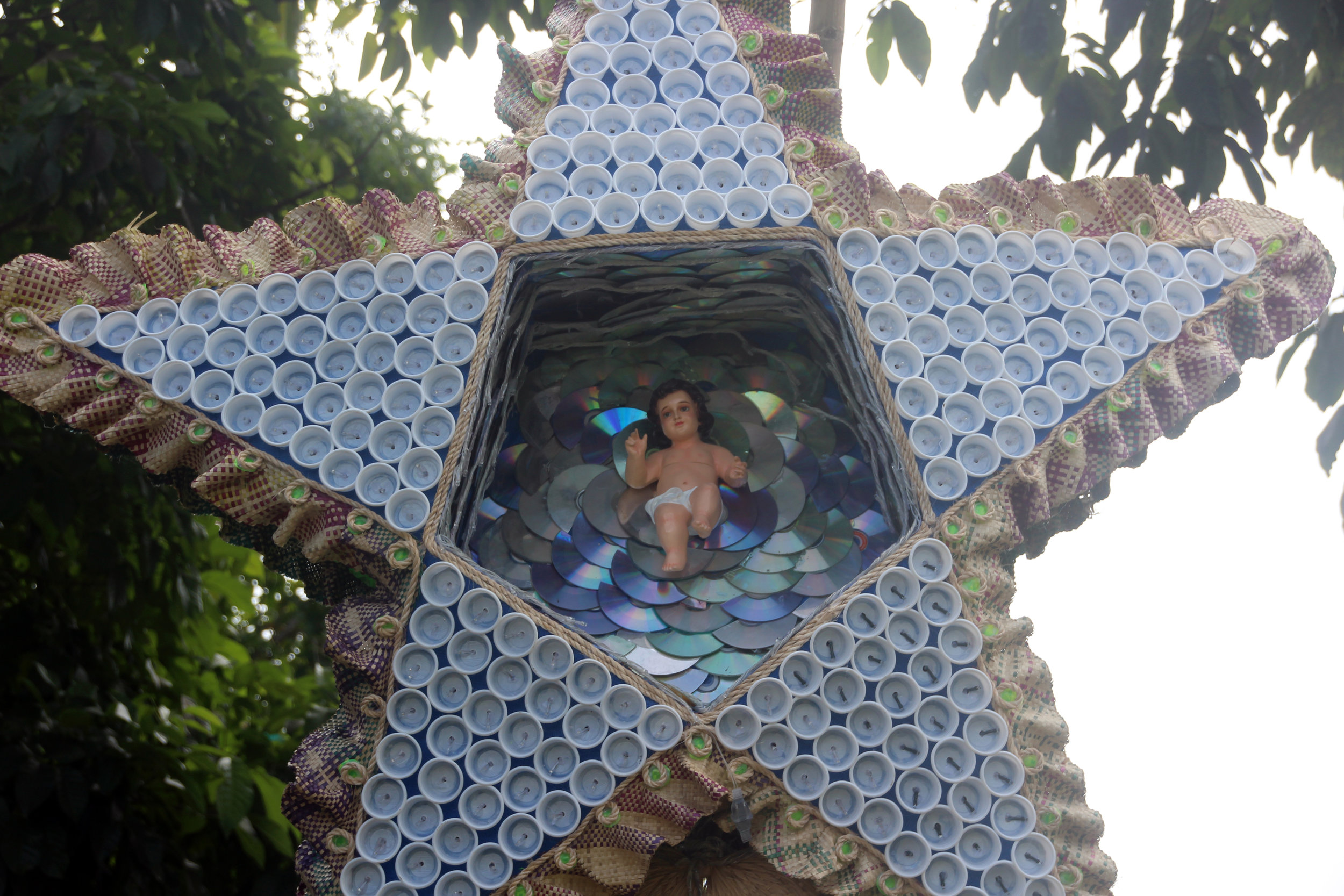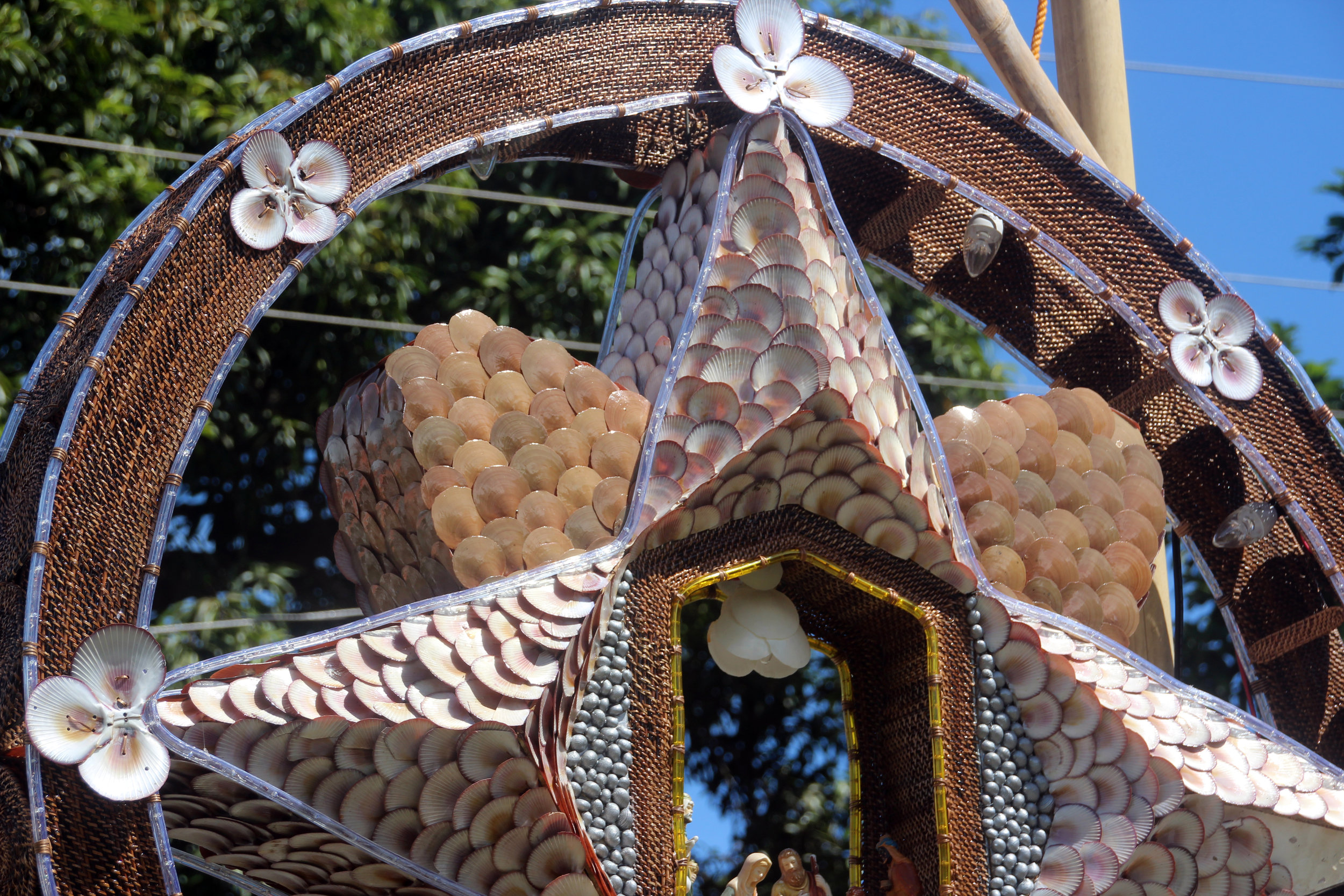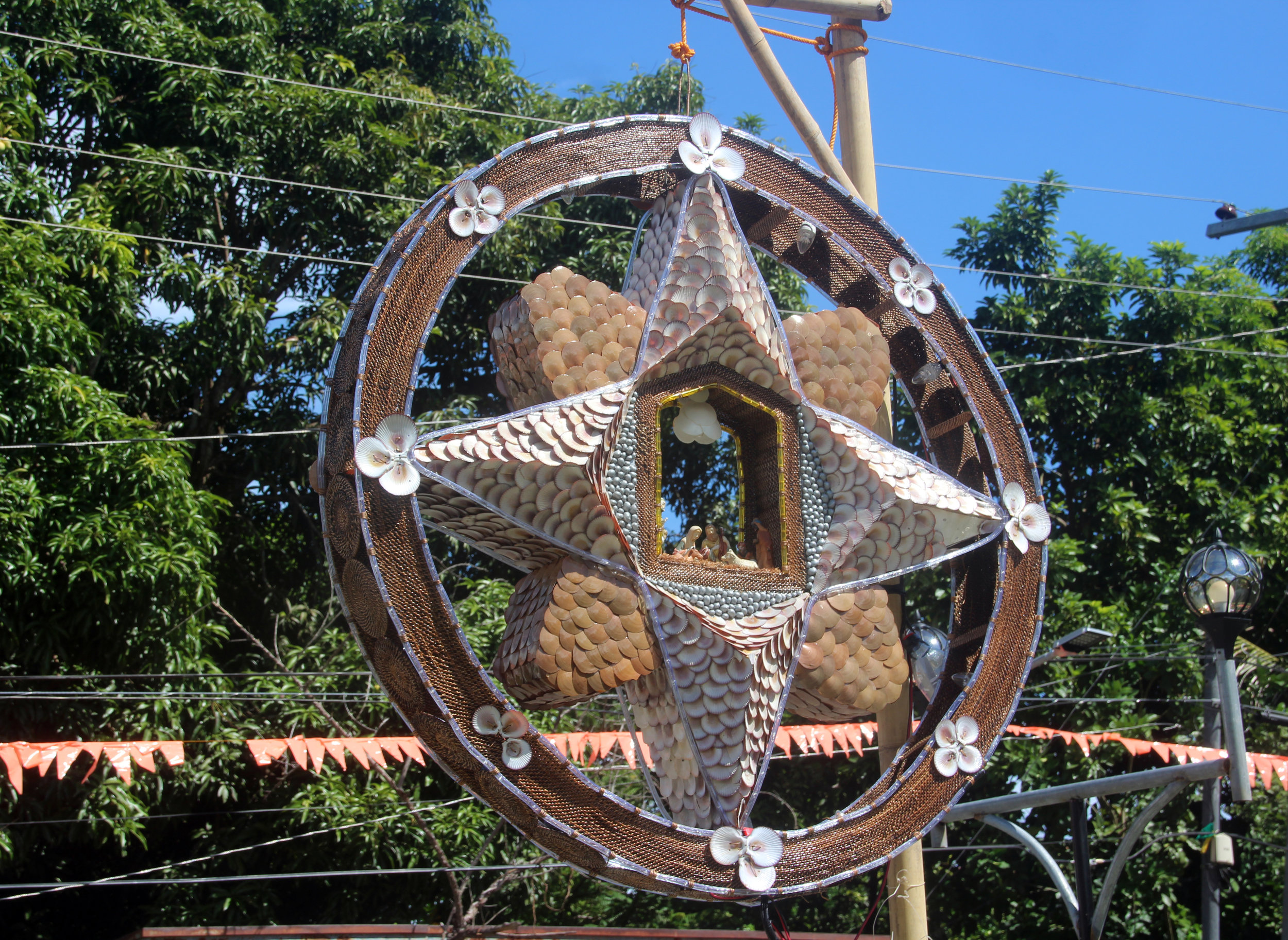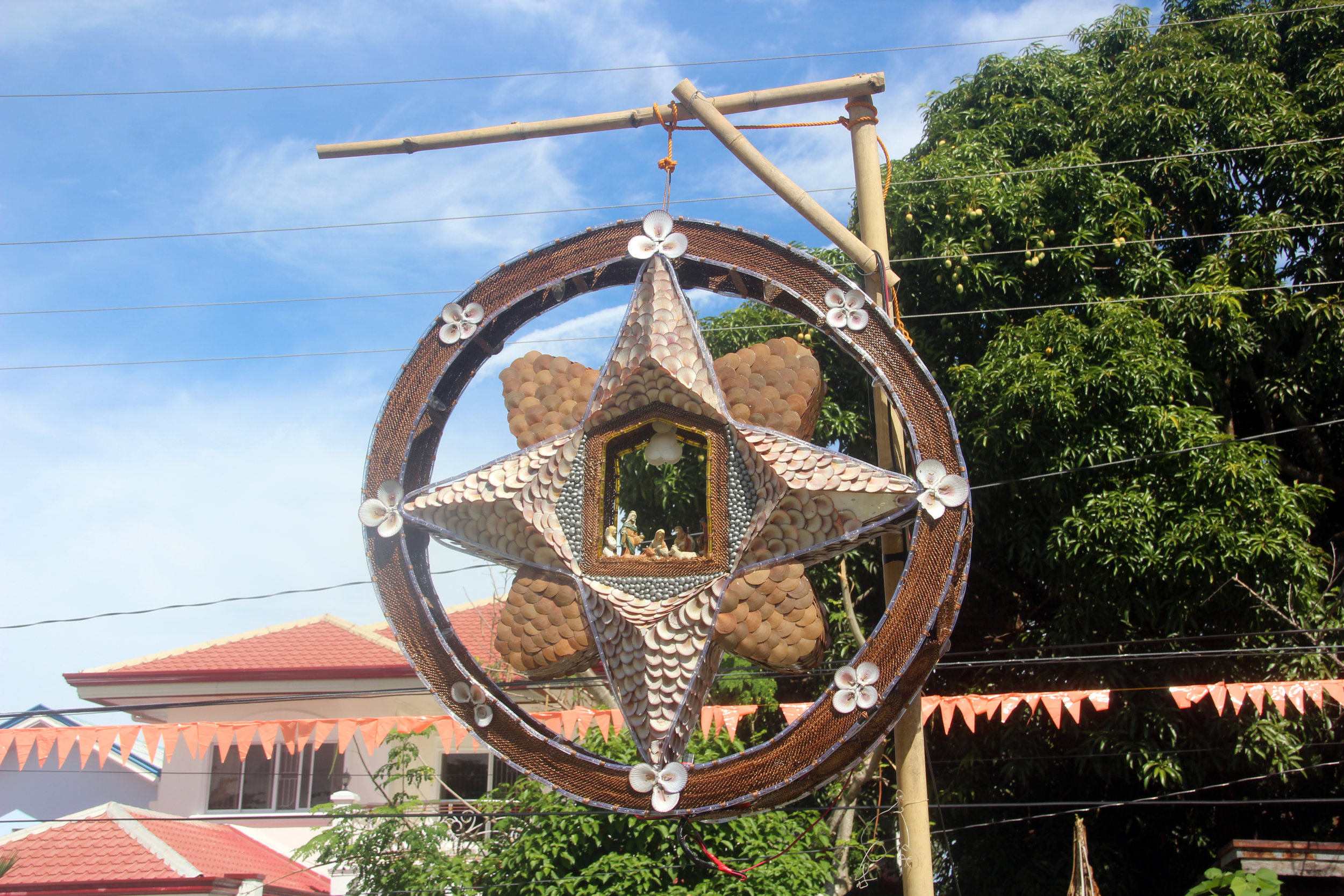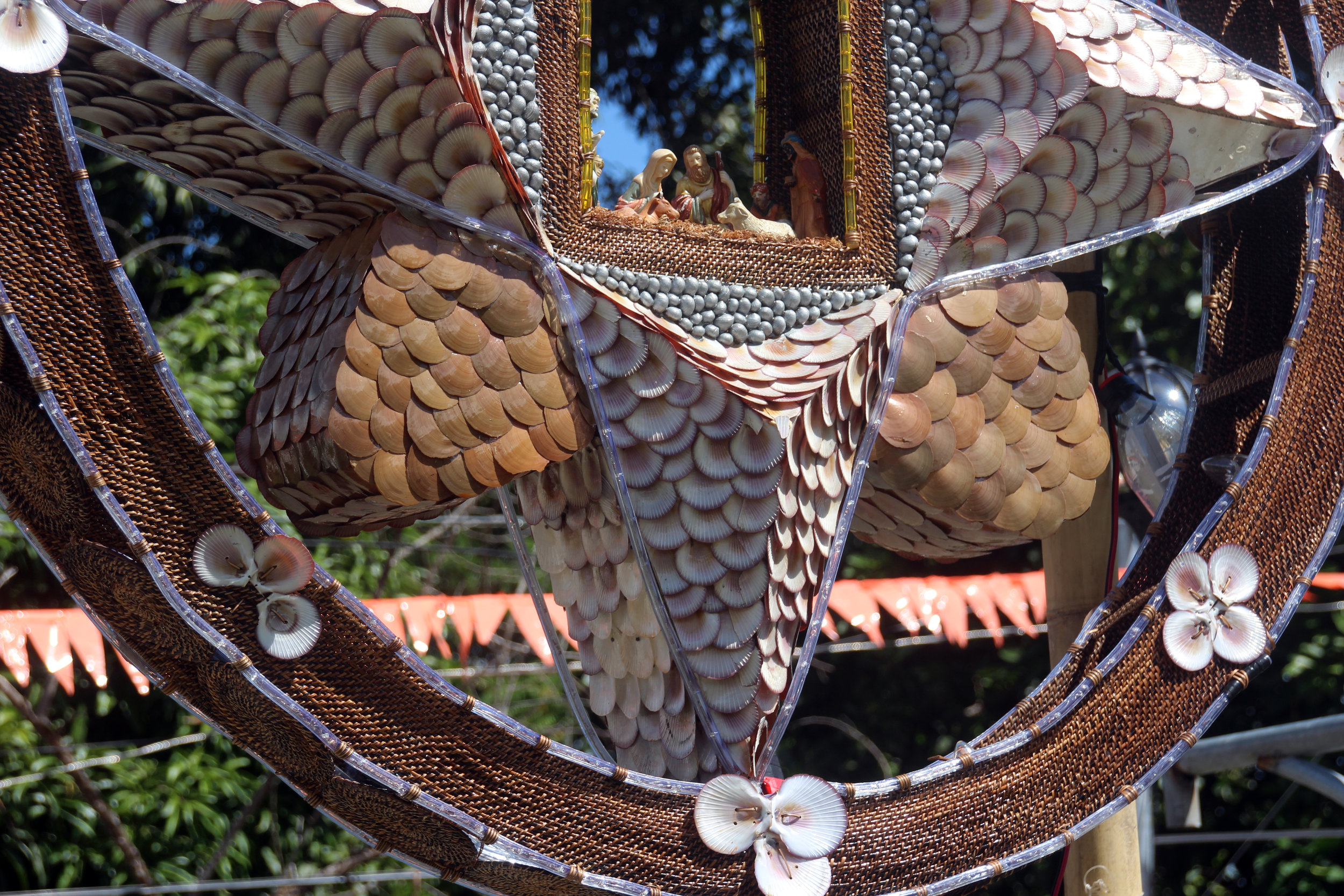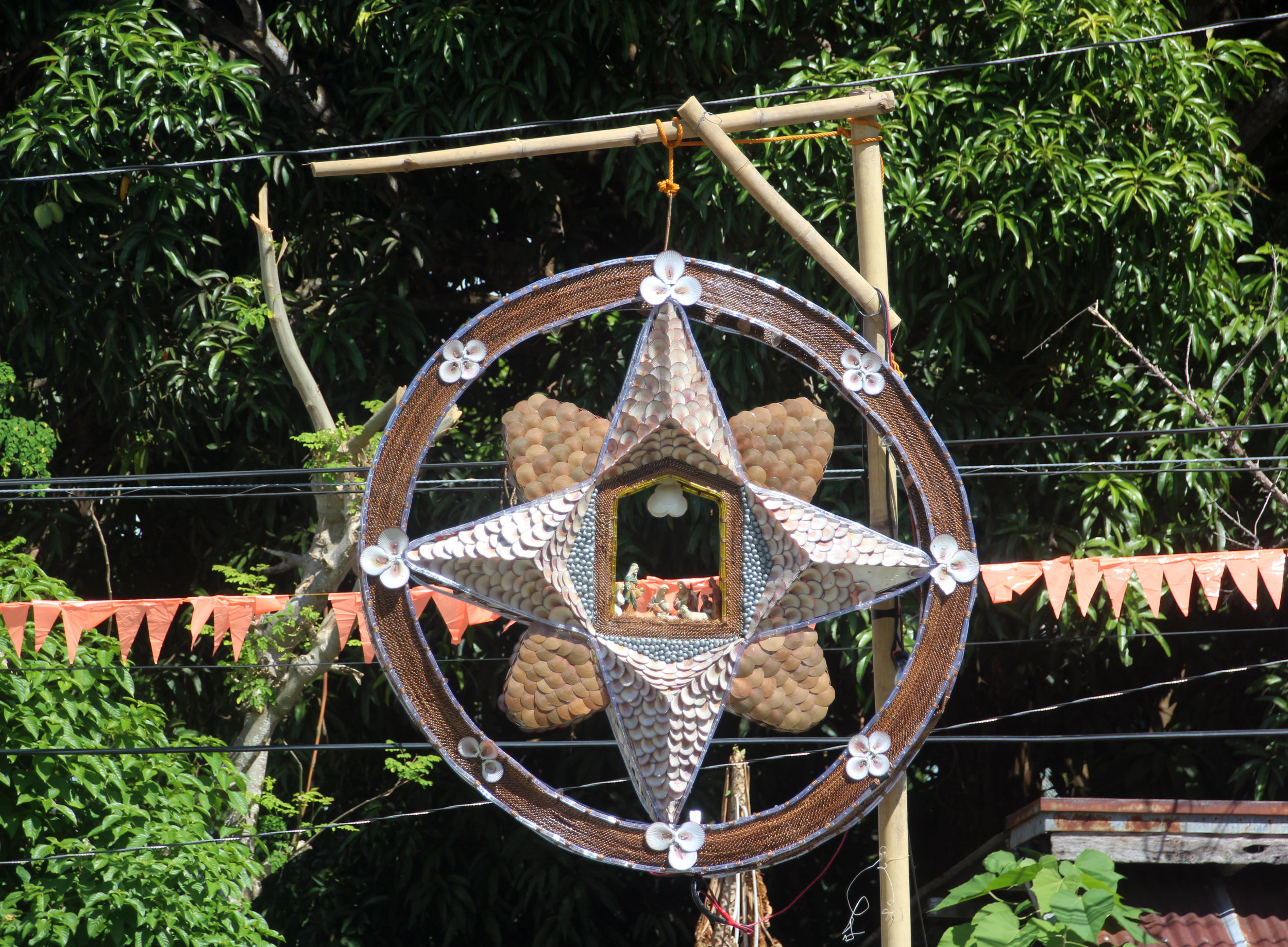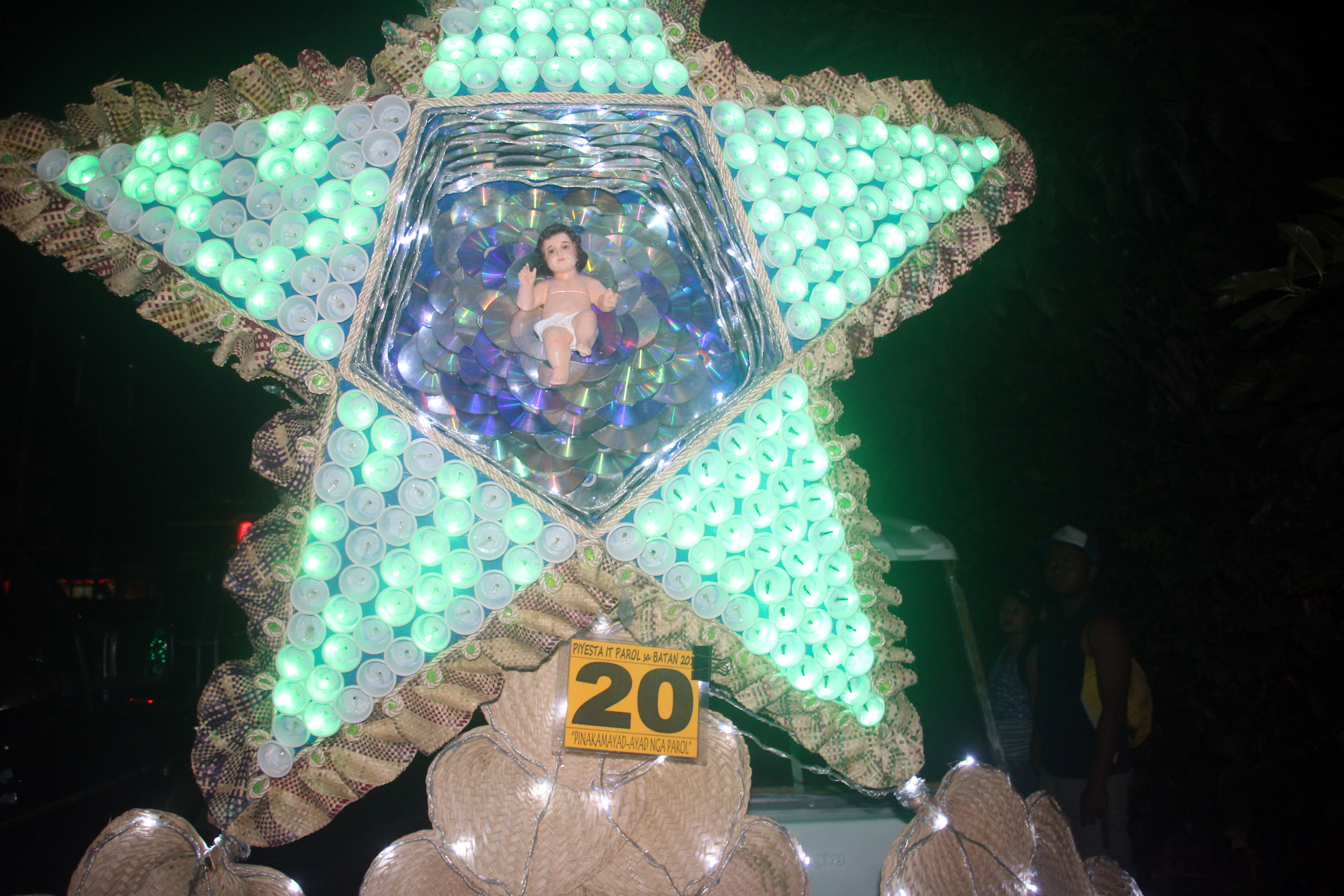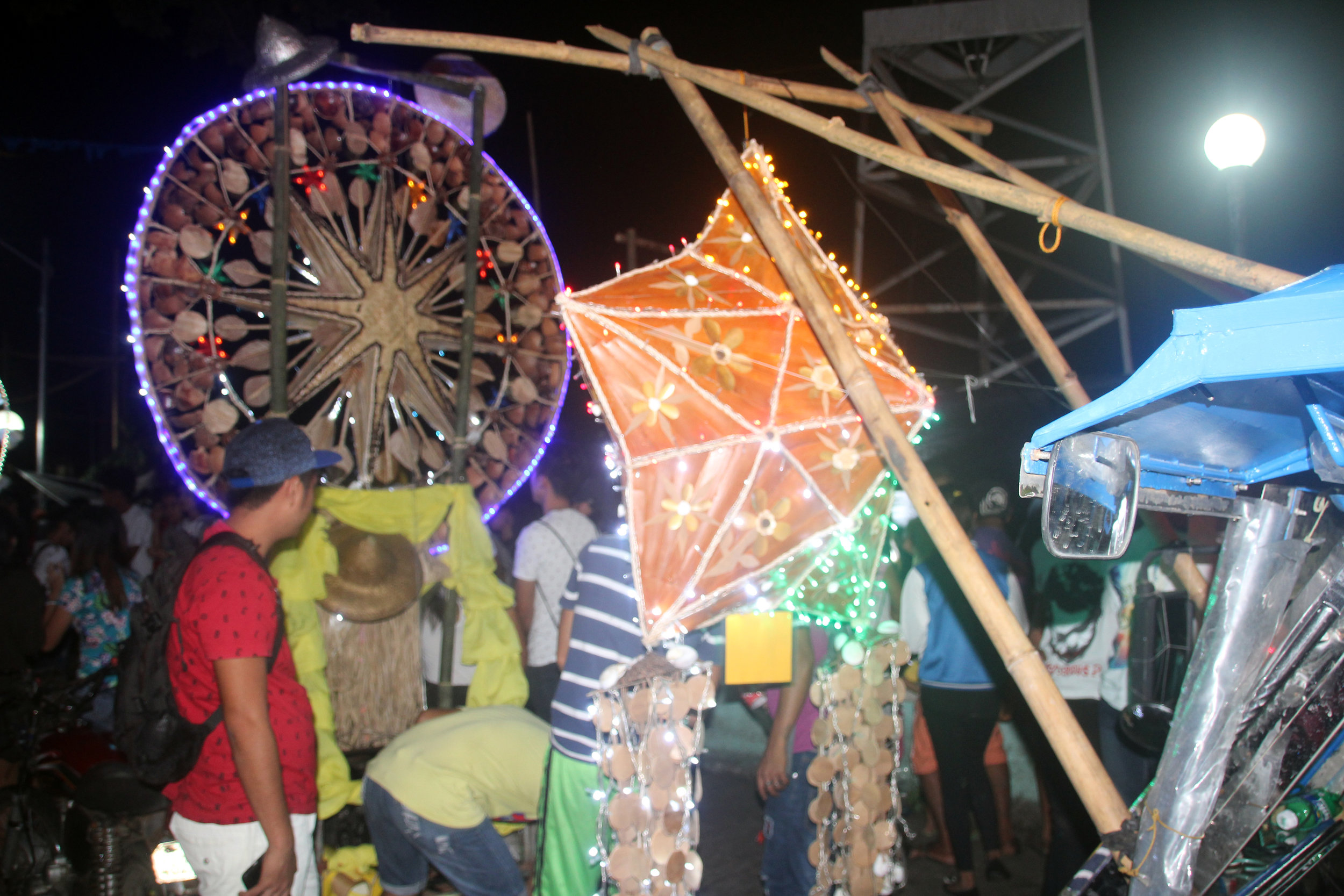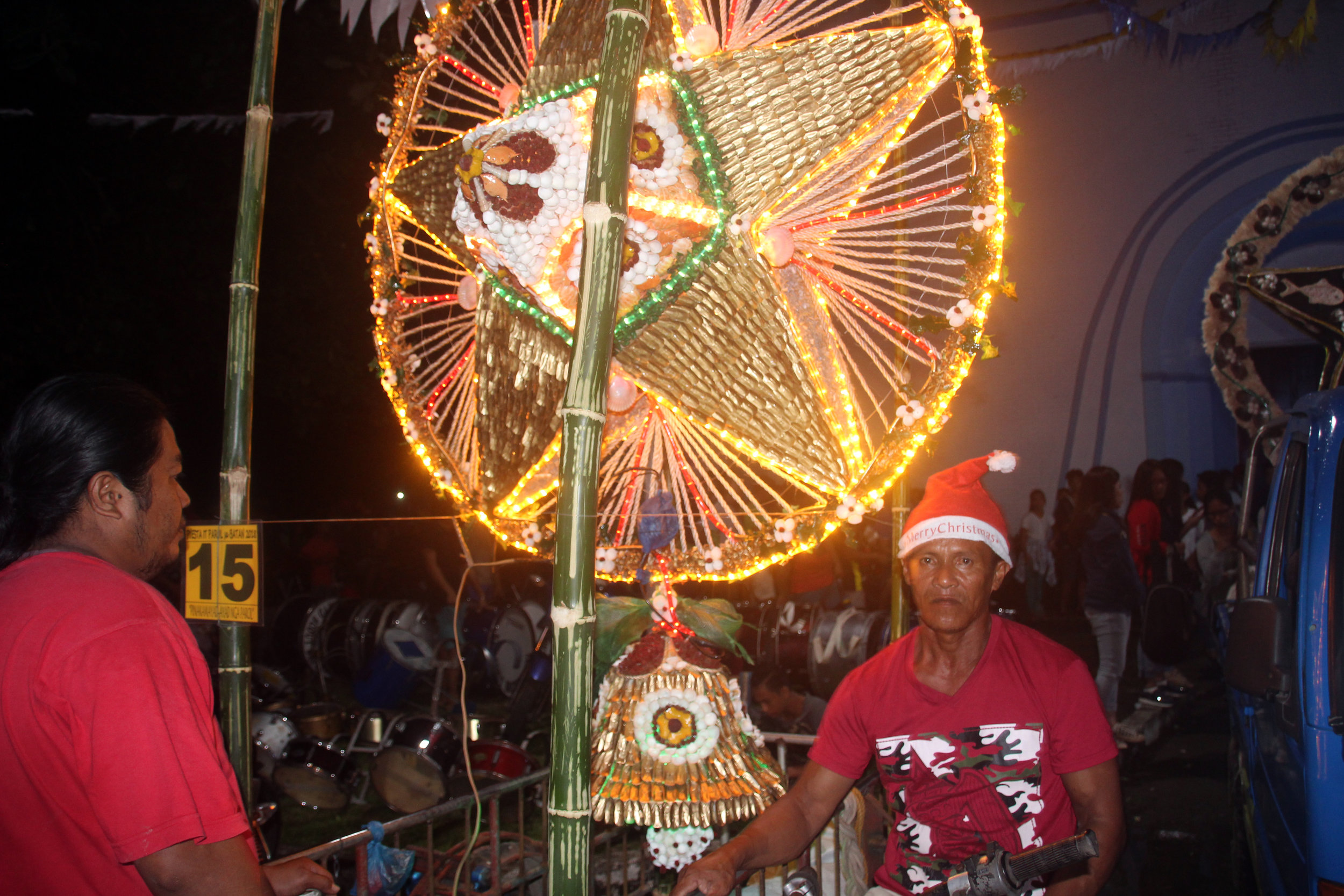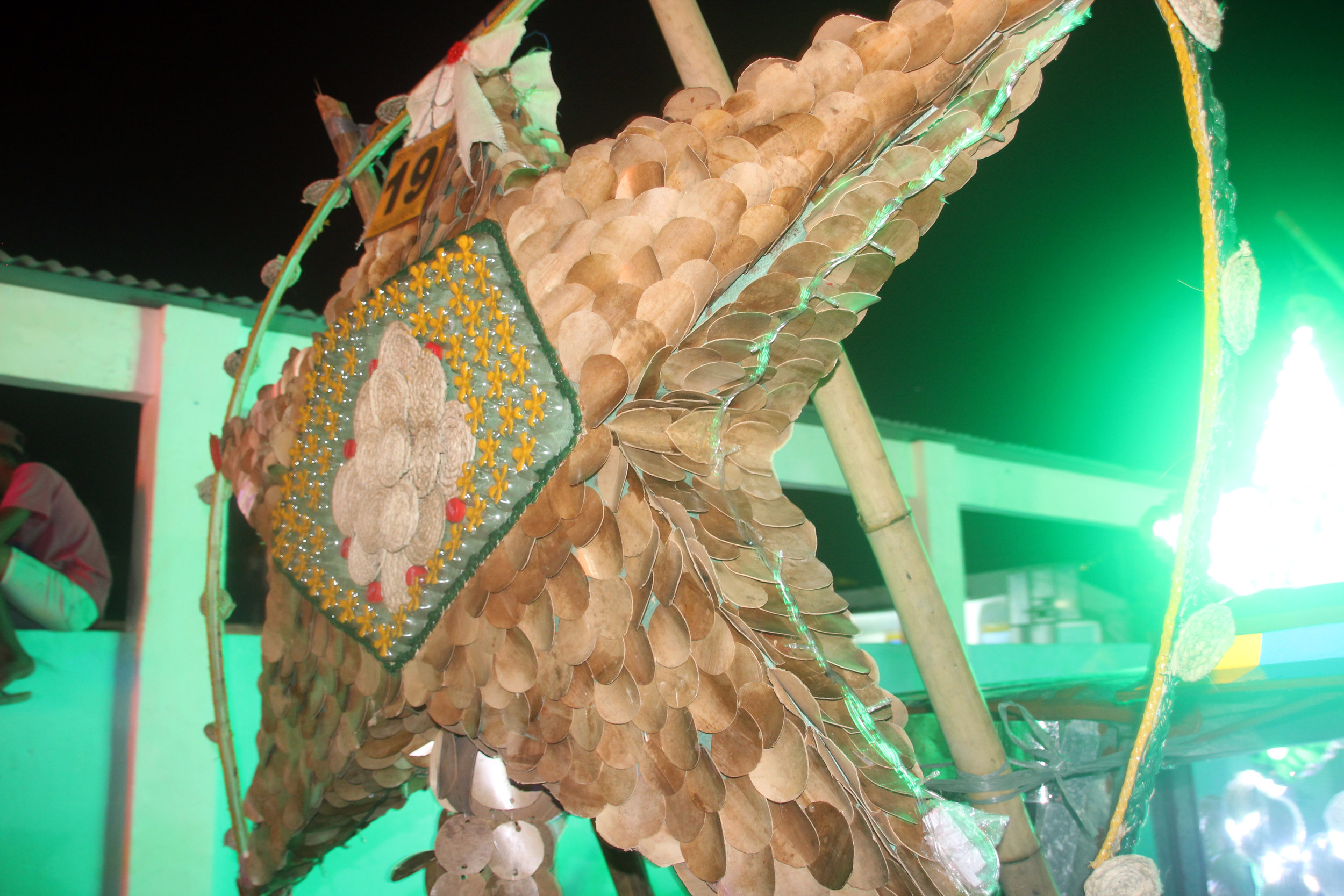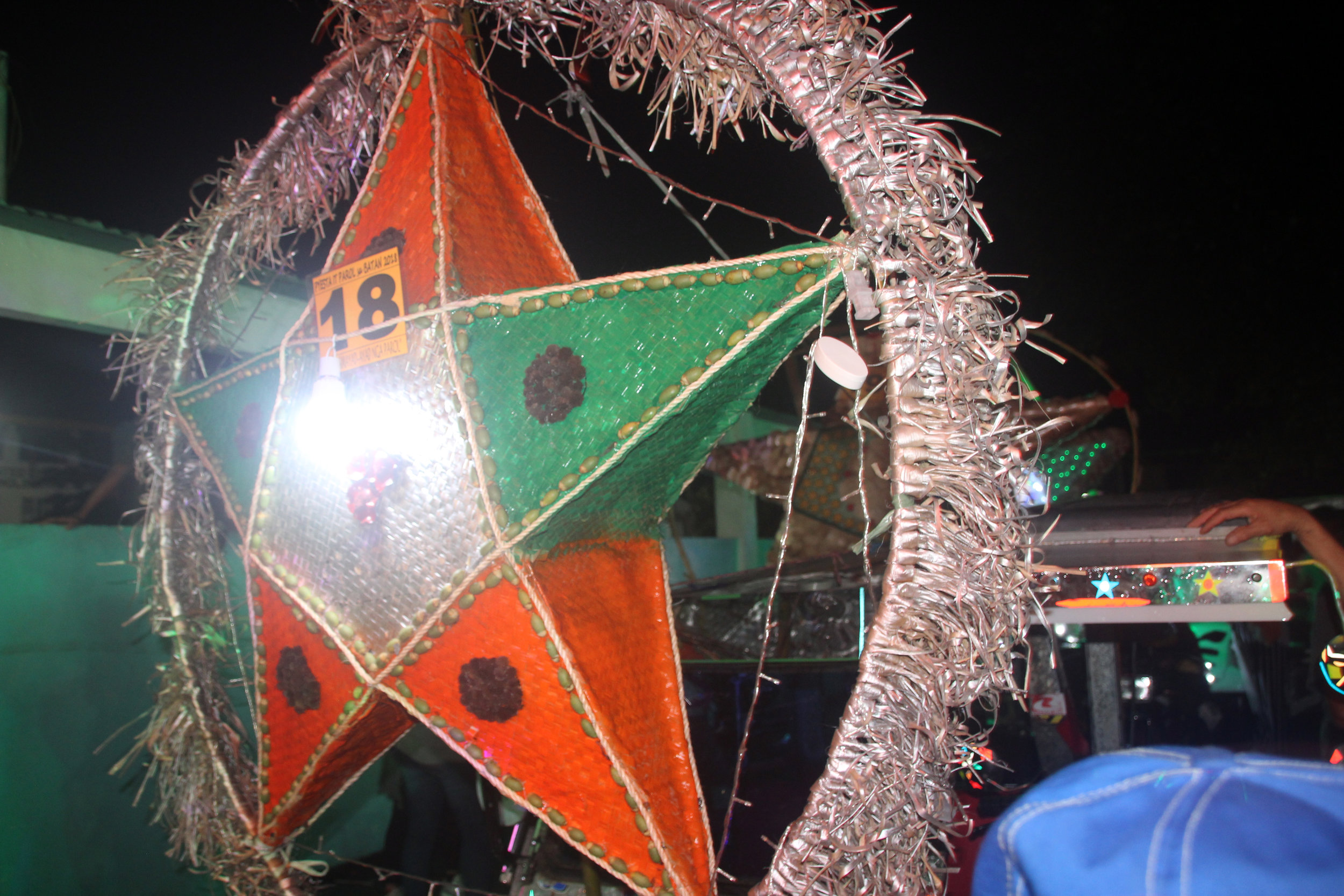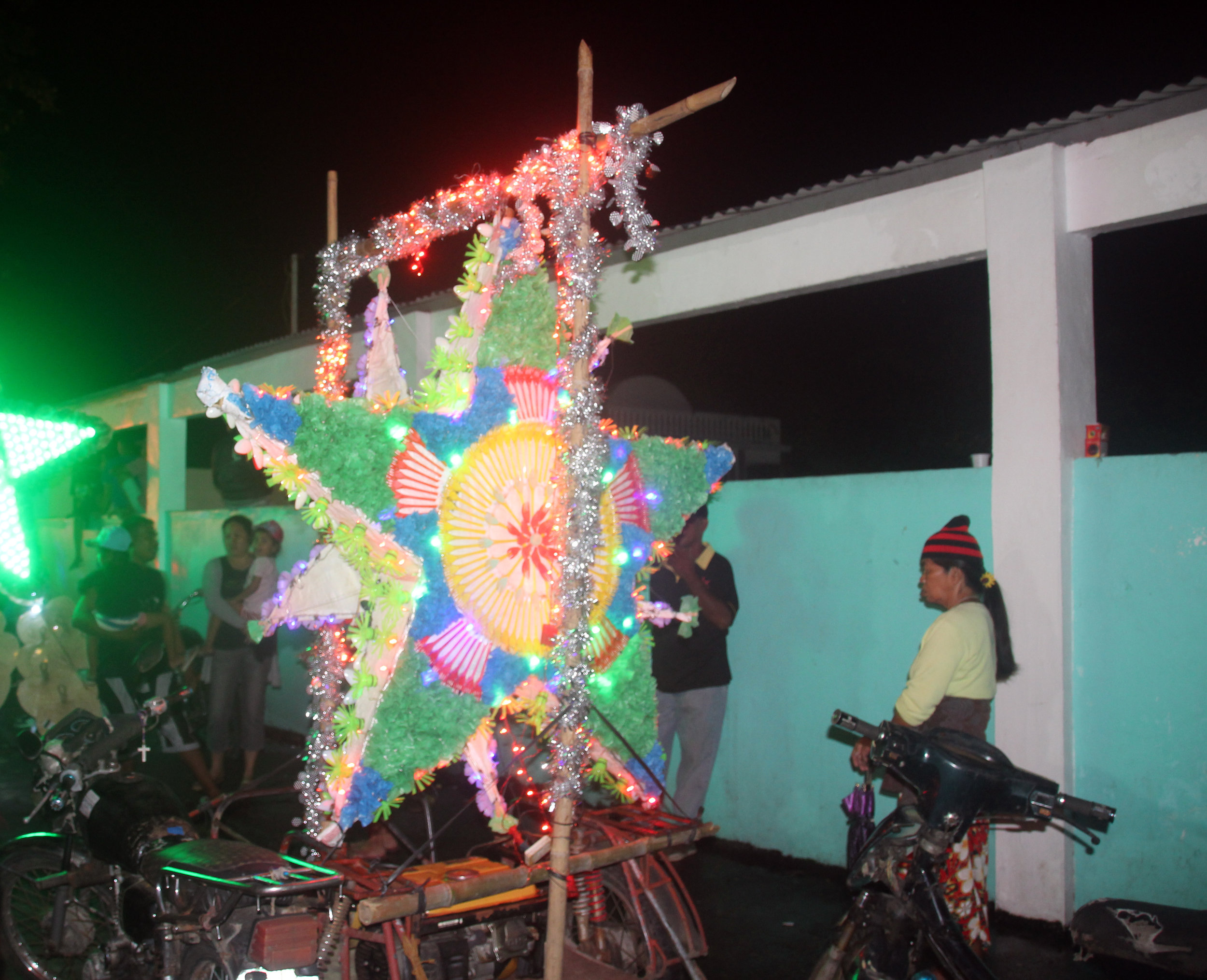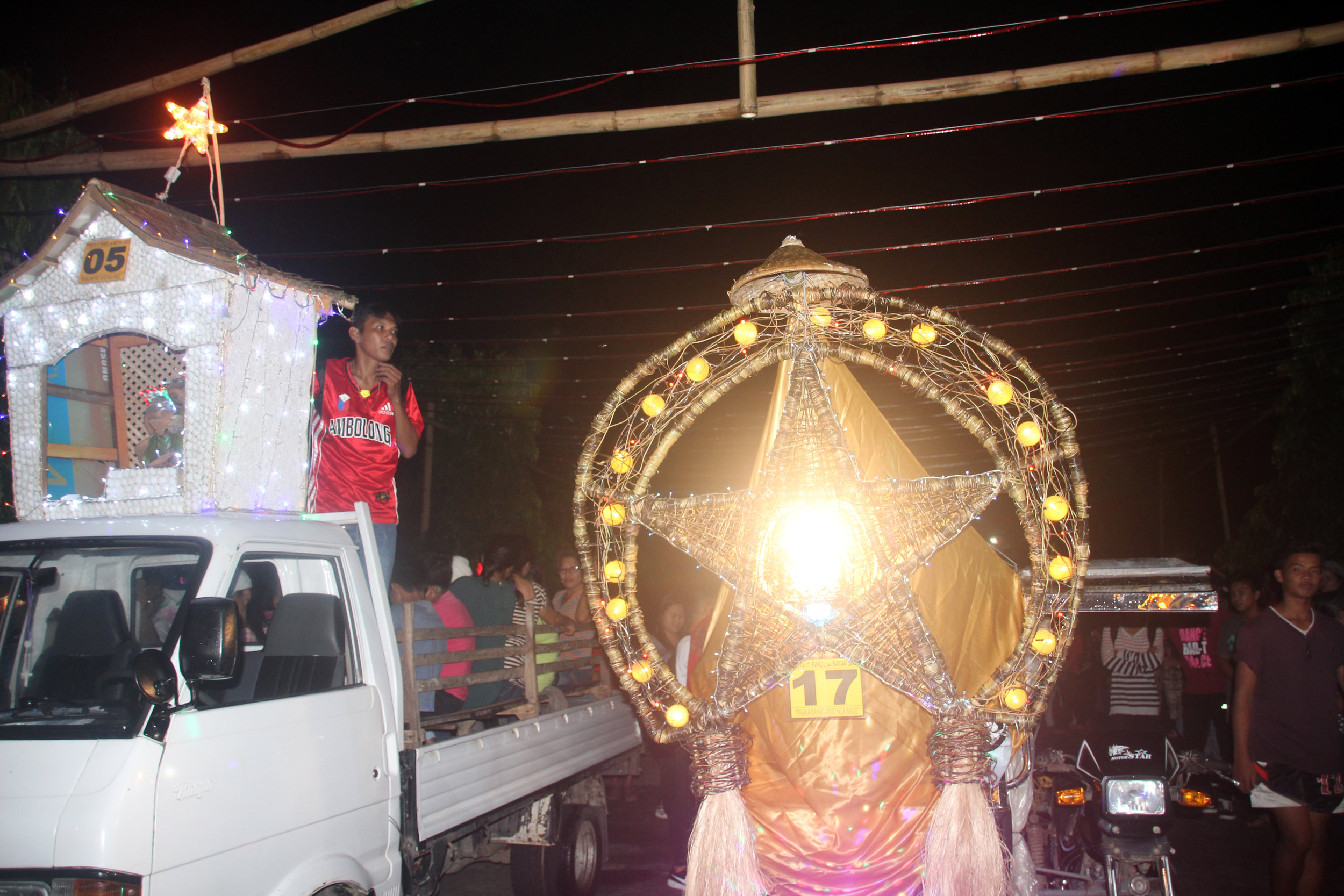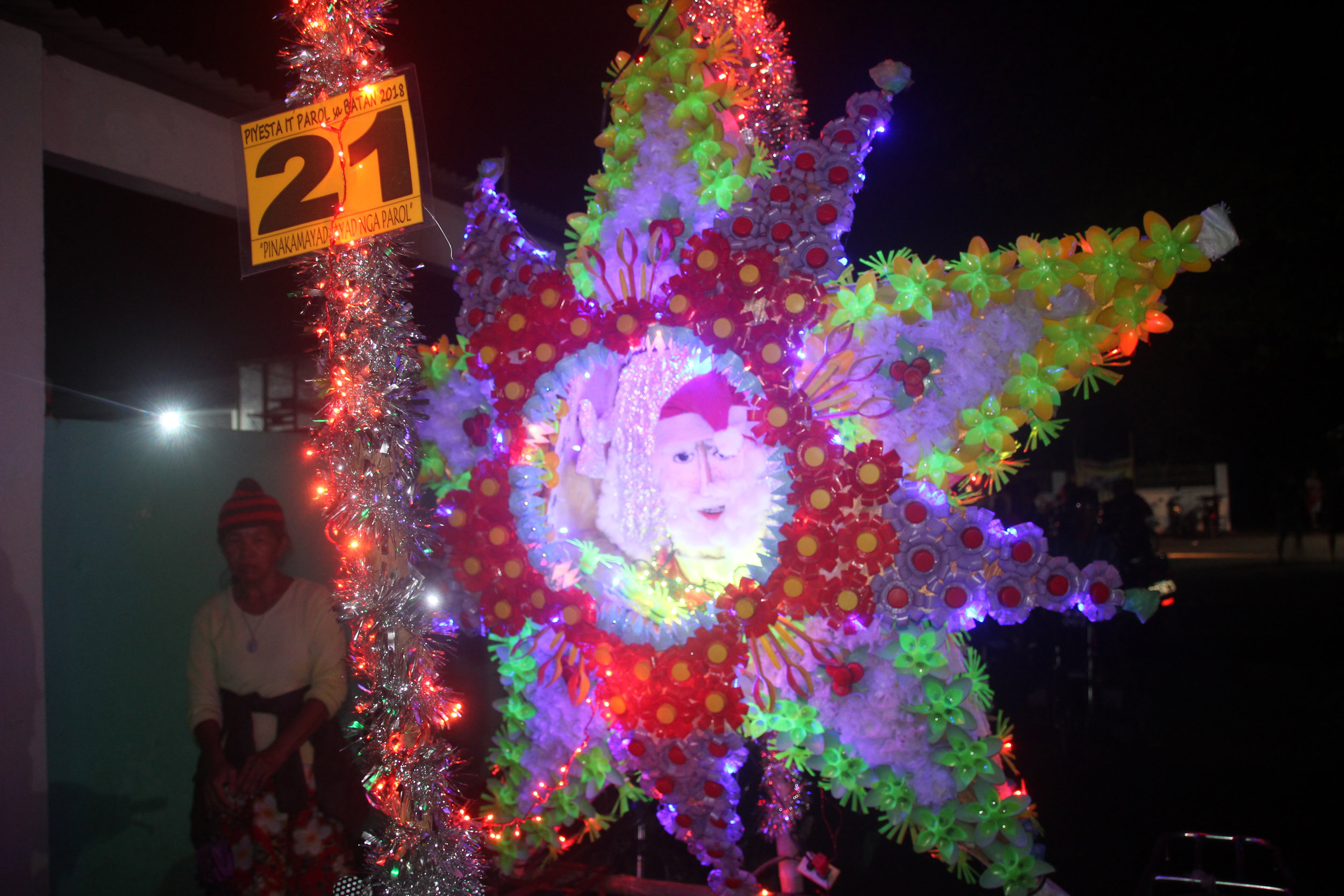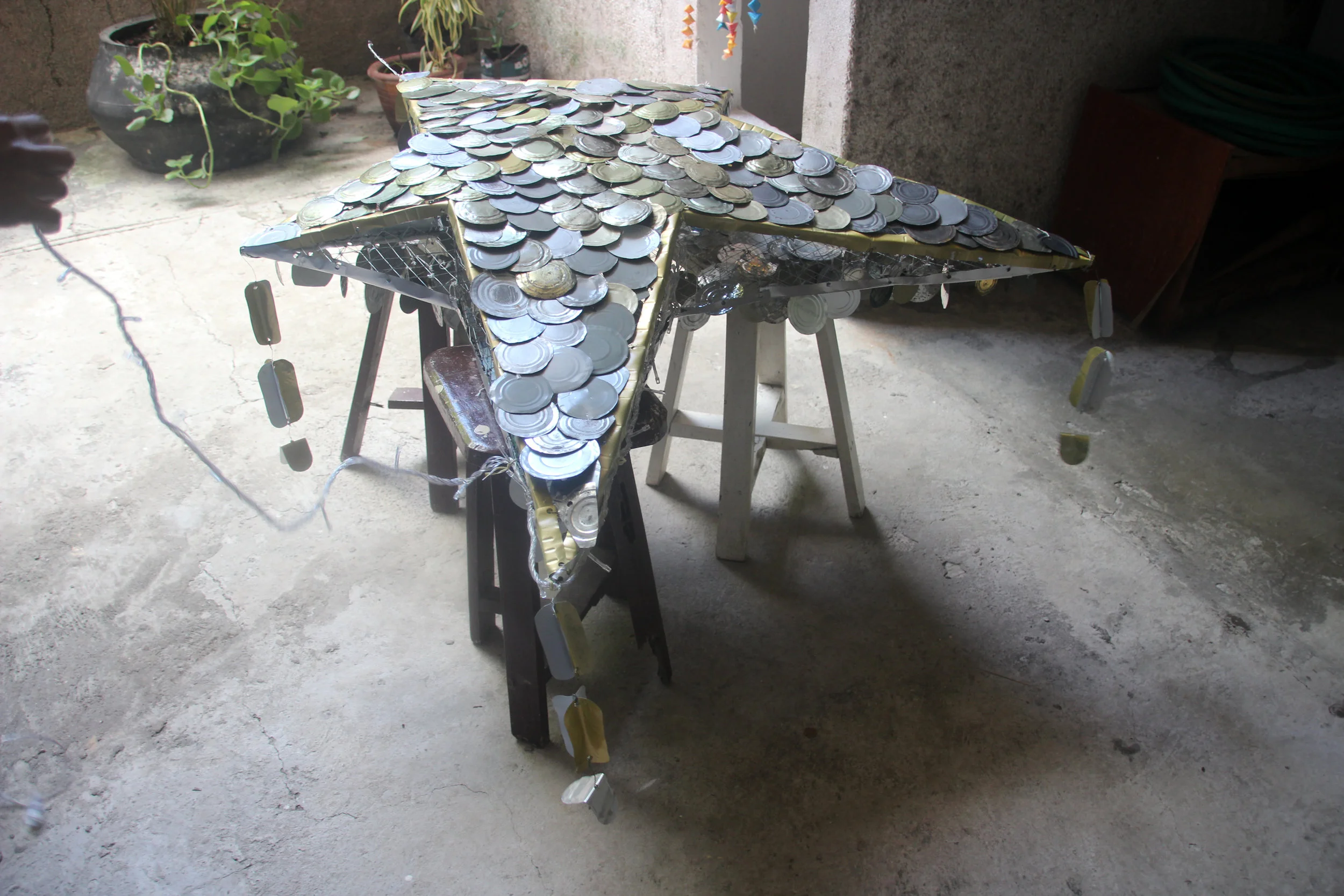Stars descend on Batan
Entry by Kuh Del Rosario
December 2018
The parol is a star-shaped Christmas lantern, traditionally made out of bamboo and Japanese paper or papél de japón, illuminated by a candle placed inside. There is a conflation of symbolism and overlapping cultural influences in its origins, but at its core, the parol is very much Filipino.
Inspired by the Star of Bethlehem, the parol symbolizes the triumph of light over darkness. Parol comes from the Spanish word, 'Farol' meaning Lantern.
Today, there are many versions of the parol, constructed from every kind of material, no longer lit by a single candle from within, but by electric lights; often pulsing, multi-coloured and very modern.
Last year was the first year of the Batan Parol competition. It was a successful event; appealing to the youth for its impressive spectacle of lights, as well as older generations for its ode to tradition and uniting the community.
For this second year of the Parol competition, the Municipality of Batan and its partners succeeded in surpassing last years' event. Everything was more grand - the cash prizes, the parols, the whole production. However, there was no hint in the days leading up the competition that this was to be the case. Like last year, workers set up bamboo stilts around the plaza where the entries were to be displayed. Christmas lights decorated the streets, and a general buzz energized the preparations. Even on the day of the competition which was also the first night of the Batan Fiesta, was unusually quiet. But by dusk, the parol entries started coming in, drawn on the backs of trucks and heavily embellished tricycles. People started rolling in on jeepneys from far-away barangays. Crowds collected at the plaza, and food carts clamoured to occupy the best corners.
The town quickly transformed into a massive street party, and police guards were stationed at the crossings to manage the crowds. Most of the parols were present, mesmerizing everyone with their pre-show. Some parols were still undergoing last minutes adjustments, and the frenzy was infectious.
There are two components to the competition, (1) the street competition which was a contest between the Poblacion North-to-South streets, a collective effort by the residents to beautify and clean their area and (2) the parol component, where one parol represents a collective or group.
I focus on the second component only because it was the one most documented.
Below are all 20 entries from 18 barangays, a local college and a little entry from Elmo’s House Artist Residency. The accompanying text was submitted with the parol.
Barangay Camaligan
‘Simbolo it paskwa. Mabahoe man o maisot, raya hay nagapadumdom katon ku pagkatawo ni Hesus sa belen. Ro amon ngarang parol hay human sa gunot it niyog, eukab it butong ag ro anang palibot hay eamay. Ro palamuti hay bunga it hambueangon, pungango it niyog, ag hungkay-hungkay shell. Ikog it parol hay bunt it niyog.’
2. Barangay Palay
‘The frame of the lantern is made of bamboo strips, and covered with recycled fishnet sewn against the frame using nylon string for durability and weather resistance. The star is decorated with cut coconut shells glued with red bajay seeds, coconut stamen and green shells. Anahow fans are inserted between the rays. The ring around the star is decorated with abaca rope and running lights. The star’s tails are made of abaca rope and coconut shells. Nylon strings are used for its durability, to tie and fasten the materials.’
3. Barangay Magubahay
4. Barangay Angas
‘Ro kabuuan it parol hay gingamitan it buro ag kawayan maghalin sa anang frame, cover, palawit billing imaw ro primera produkto iya sa Magubahay. Ro parol hay gin-ibhan it iba pang materyales kaparehas ko alipuan it niyog para sa mag break, Bunga it dangka-ean, dahon it button it amp, bueak it hambueangon, bueak it acacia auri, camay ag dait. Ro parol hay local-made, ag ro mag materyales hay akita eamong sa Barangay Magubahay.’
‘Do parol it Barangay Angas hay simple eamang nag himo sa eukab it butong ag gin designan it bueak it tannish nag ginatawag nag landing-kanding nga akita sa bukid it amon nag barangay.’
5. Barangay Ambolong
‘Belen symbolizes Christmas. Belen would remind everyone, especially the poor and less fortunate, about God’s begotten son who took the form of a slave to redeem humanity.’
6. Barangay Ipil
‘Rayang lantern hay nahuman sa bulig it nga pumueoyo. Kami hay nagtibyog, nagkooperar para maipakita namon nga kami hay nagkakaisa sa amon nga komunidad.’
7. Barangay Bay-ang
‘Our Christmas lantern is made of bamboo frames and capiz shell. Raffia or daet (textured straw extracted from the skin of an unopened Buri leaf) was used in the body of the lantern. Capiz shell or pios (extremely translucent material that diffuses light), was used in the detailing, resulting in a precious look, like new glass. Colored lights were used to add vibrancy and nuance. At the center is a belen which depicts the nativity scene of Jesus Christ in Bethlehem.’
8. Barangay Tabon
Haman sa produkto nga halin sa pios ag capis capis nga makita sa kadagatan. Pangitan-an it pumueoyo sa isaeang ka isla nga barangay, nahimo ra paagi sa pagbueohagan it konseho, esfudyante ag maestralo. Pina pakita ko daya nga parol do isaeangka barangay do triumphant, astig, bountiful, outstanding ag noble nga komunidad’
10. Batan Integrated College of Technology
9. Elmo’s House Artist Residency
‘Emo’s House Artist Residency’s parol is made of recycled tin cans and metal wire. We believe in the value of reusing materials and reimagining what is possible from the things around us.’
‘Materials used were: coconut shells, boli seeds accentuated with boli leaves, abaka fibers lined with bamboo trimmings and eokot leaves.’
11. Barangay Caiyang
‘We at Barangay Caiyang are proud to present our parol. The lantern’s primary material is bamboo culm sheath or commonly known as eukab, which is abundant in our barangay. The design of the parol evokes the star of Bethlehem that guided the Three Kings to the manger. We varnished the sheath to add additional color to its body. It is also decorated with abaka, shells and flowers. The tail of the lantern is made up of nito, bamboo culm sheath and snail shells. Of course we put Christmas lights symbolizing the victory of light over darkness and the Filipino’s hope and goodwill during the Christmas season.’
12. Barangay Mandong
‘Dayang parol hay isaiang ka komita, makita manda sa kalangitan parehas ko mga bituon, simbulo man da it kapaskwahan. Anang gamit kara hay bangati, ibyuk, shells ag abaka.’
14. Barangay Mambuquiao
‘Ro amon nga star hay nahimo sa pagbueoligan it pamoeoyo ag barangay officials it among barangay. Human ra sa butong (saeog) abaka-ibyok ag shells. Do desinyo kara hay naga representar ko mayos nga pangitan-an it among barangay.’
15. Barangay Songcolan
‘Our parol is made of different kinds of materials found in our barangay. Abaka and ogpan shells form the base, embellished with crab shells. Flower design using Fine tree seeds and pungango it niyog line the perimeter of the parol. Mangiums tree leaves, sinapilo nga kahoy, dahon it sapinit and scallop shells were used to build and decorate the main structure.’
17.
16. Barangay Camanci
‘Do baeayan ko among star hay saeog ag napalibutan it ginputos moskitero nga pinaglumaan, gindekorasyunan it mga masunod nga tukiba it itlog, pungango it niyog nga ginaobrang bueak ag may dekorasyong butil it mais ag bahay may dahon it kutiba it tahong.’
18. Barangay Man-up
19. Barangay Magpag-ong
‘Our parol was made using native materials, buli mat, abaca root and palm fruit or bunga.’
‘
20. Barangay Napti
‘The parol is made of native anahaw fan with recylced gravy sauce cups. The center is accented by CD’s with the Santo Nino in the middle. Trimmings of abaca and recycled plactic Mountain Dew bottles add texture and color. Our mix of native and recycled materials create an authenic design unique to our parol.’
In the sobering lucidity of the day, the parols look unrecognizable. The details silenced by the noise of lights the evening before, are now apparent. Each parol tells a story of the place it came from, reveal the hand of its makers and exposes the dreams of its architects. Indigenous materials, as well as upcycled refuse, was used liberally and with much finesse.
It must have been a tricky process deciding on the winner. But as Tyra Banks empathically repeat on every episode of ANTM, 'There can only be one winner.' And so, the judges accomplished their task and declared entry #13 the victor.
13. Barangay Cabugao
‘The Cabugao parol entry for the Municipal Parol-making contest 2018 at the Municipality of batan is made of an indigenous material found in Cabugao called nitowhich, which belongs to the family of rattan. This material is used to make handicrafts Cabugaonons produce and export to different foreign countries. Aside from nitowhich, attractive shells was also used to add variety in the design.
For Cabugaonons, the star symbolizes unity, leadership, supremacy, cooperativeness and purity. Unity in the sense that most of the community has contributed their best, for the best result of the parol; leadership because every member of the community have done their part voluntarily for the success of th eproject; supremacy in aiming high, towards the goal of the project; cooprativeness and purity for the Cabugaonons has developed oneness and camaraderie. ‘












